Jack Ross's Blog, page 11
January 5, 2022
SF Luminaries: Walter M. Miller, Jr.
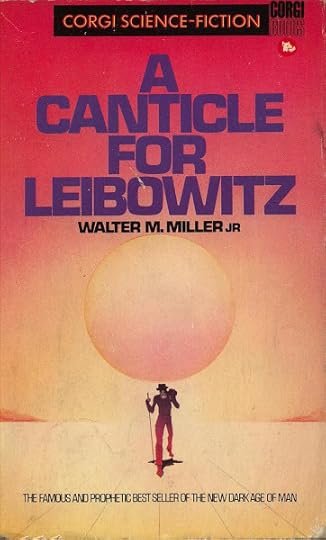 Walter M. Miller, Jr.: A Canticle for Leibowitz (1959)
Walter M. Miller, Jr.: A Canticle for Leibowitz (1959)Ever since I first picked up a scruffy secondhand paperback copy in a local bookshop, I've been entranced by A Canticle for Leibowitz. As you can see from the montage below, there's been no shortage of editions and reprints of this 'famous and prophetic best seller of the new dark age of man". What of its author, though? Who was this strange man Walter M. Miller, Jr.?
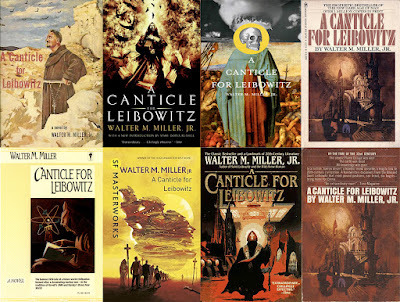 Walter M. Miller, Jr.: Leibowitz covers
Walter M. Miller, Jr.: Leibowitz coversWell, as W. H. Auden states so succinctly in his sonnet Who's Who: "A shilling life will give you all the facts" - or, as in this case, a brief consultation of the relevant wikipedia entry:
Miller was born on January 23, 1923, in New Smyrna Beach, Florida. Educated at the University of Tennessee and the University of Texas, he worked as an engineer. During World War II, he served in the Army Air Forces as a radioman and tail gunner, flying more than fifty bombing missions over Italy. He took part in the bombing of the Benedictine Abbey at Monte Cassino, which proved a traumatic experience for him. Joe Haldeman reported that Miller "had post-traumatic stress disorder for 30 years before it had a name"
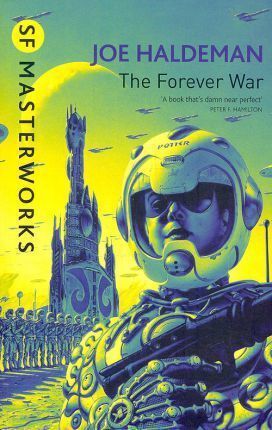 Joe Haldeman: The Forever War (1974)
Joe Haldeman: The Forever War (1974)Joe Haldeman is, of course, the author of the classic Vietnam-cum-SF novel The Forever War, still in print after almost fifty years.
After the war, Miller converted to Catholicism ... Between 1951 and 1957, [he] published over three dozen science fiction short stories, winning a Hugo Award in 1955 for the story "The Darfsteller".
Late in the 1950s, Miller assembled a novel from three closely related novellas he had published in The Magazine of Fantasy & Science Fiction in 1955, 1956 and 1957. The novel, entitled A Canticle for Leibowitz, was published in 1959. It is a post-apocalyptic novel revolving around the canonisation of Saint Leibowitz, and is considered a masterpiece of the genre. It won the 1961 Hugo Award for Best Novel.
After the success of A Canticle for Leibowitz, Miller ceased publishing, although several compilations of Miller's earlier stories were issued in the 1960s and 1970s.
In Miller's later years, he became a recluse, avoiding contact with nearly everyone, including family members; he never allowed his literary agent, Don Congdon, to meet him. According to science fiction writer Terry Bisson, Miller struggled with depression, but had managed to nearly complete a 600-page manuscript for the sequel to Canticle before taking his own life with a firearm on January 9, 1996, shortly after his wife's death.
The sequel, Saint Leibowitz and the Wild Horse Woman, was completed by Bisson at Miller's request and published in 1997.
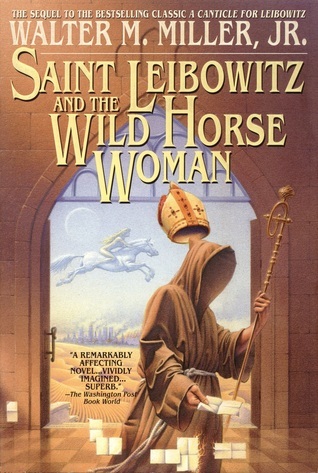 Walter M. Miller, Jr.: Saint Leibowitz and the Wild Horse Woman (1997)
Walter M. Miller, Jr.: Saint Leibowitz and the Wild Horse Woman (1997)I wish I could say that this last, posthumous work of fiction was a triumphant vindication of his decades in the wilderness. Alas, it is not. Various of the commentators on his Goodreads page do their best to defend it:
[Dropping Out]: Miller's "problem" was that he hit a grand-slam home-run in Canticle, and he spent the remainder of what must have been a sad and frustrating life trying to get out from under Canticle's shadow. ...Others seem more inclined to tell it like it is:
[Jason]: Saint Leibowitz reminded me very much of Herbert's Dune. They are both sprawling novels dealing with the political machinations of both Church and State, and they both center on the manipulations of the mysterious, isolated, less-civilized nomadic peoples whose loyalties will tip the balance of power.
[Doreen]: Oddly enough, I seem to be one of the few people here who enjoyed the sequel much more than its predecessor. I found A Canticle... devoid of much of the human suffering that pervades this book, which questions the conflict between faith and tradition, desire and happiness, and what it means to be a good human being.
[Bryn Hammond]: There’s almost no science fiction left. It was much more like reading a (burlesque) historical fiction on the medieval church, muddled up with the American West. Canticle’s concerns with science aren’t pursued, and the post-nuclear-war setting becomes accidental.Perhaps the best overall summary comes from Zoe's Human:
[Jon]: The sequel to A Canticle for Leibowitz was thirty years in the making, but unfortunately, Miller seems to have forgotten how to write a novel in those decades. Many of the moral and ethical arguments that made Canticle so brilliant are still present, as is the occasional bit of dry humor, but these are overshadowed by long and drawn-out passages, poor plotting, and a conclusion that seems to have been hastily written the night before the book went to press (the "Wild Horse Woman" from the title, for example, virtually never appears in the novel; I'm still confused as to why her name appears so prominently on the book's spine)
Life is too short for books you don't enjoy.
Maybe the fault is mine for trying to read this right after A Canticle for Leibowitz which would be a tough act to follow for anyone (including, apparently, the author who wrote it). Perhaps my expectations were just too high. This started off well enough with a nice premise about loss of faith, but it kind of fizzled after the first two or three chapters.
Or perhaps the fact that the author was suicidally depressed and took his own life before he finished it was a factor. Another author finished it from a reportedly almost complete manuscript, but how complete was it really? And how much did the original author's struggle with mental illness factor in?
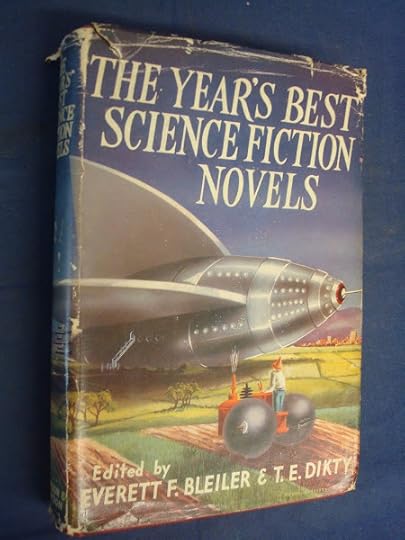 The Year's Best Science Fiction Novels (1953)
The Year's Best Science Fiction Novels (1953)One of Miller's rarer stories, not included in any of the various collections of his short fiction, is "Izzard and the Membrane." An extra level of confusion is added by the fact that the book above, which I inherited from my father's science fiction collection, is the 1953 UK edition of a book which originally appeared in the USA in 1952. Despite its publication date, then, it actually constitutes The Year's Best Science Fiction Novels 1952, not 1953:
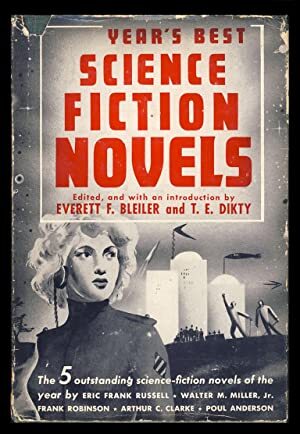 The Year's Best Science Fiction Novels (1952)
The Year's Best Science Fiction Novels (1952)The American edition also included an extra story, Arthur C. Clarke's "Seeker of the Sphinx", presumably omitted from the British reprint for copyright reasons.
The reason this bibliographical minutiae seems worth stressing is because "Izzard and the Membrane" is quite a remarkable story, every bit the equal of most of the novellas included in his officially sanctioned collections. Its cold war stereotypes may seem a little dated now, but Miller's astonishing intuitions about the possibilities of computer artificial intelligence and the creation of alternate realities are worthy of the creators of Westworld or the Metaverse itself.
So good is it, in fact, that it makes one feel rather curious about some of the other stories I've tried to list below as comprehensively as possible. By my count he wrote 43 stories in all (at least two of which were not SF). Of these 41, a mere fourteen were collected in his final selection The Best of Walter M. Miller, Jr. (1980) - subsequently reprinted under other titles, but without any expansion of the contents.
That leaves at least 26 other stories to read (not counting the two romance stories and a co-authored crime story) from that incredibly productive period of writing between 1951 and 1957. There may well be some duds among them, but it seems hard to believe that only "Izzard" is worthy of resurrection among such a number of pieces published - for the most part - in the top SF journals of the day.
That's the new Walter M. Miller book I'm holding out for: not the last, incomplete, rather depressing Saint Leibowitz. After all, his short stories and short novels were always his strongest work. From the much-anthologised "Crucifixus Etiam," with its unforgettable image of the purgatorial plains of Mars, to ,"Big Joe and the Nth Generation" (aka "It Takes a Thief"), he showed a flair for memorable characterisation and arresting plotlines second to none - not even such celebrated contemporaries as Philip K. Dick and Robert A. Heinlein.
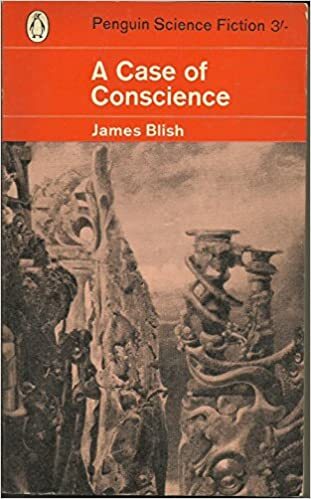 James Blish: A Case of Conscience (1958)
James Blish: A Case of Conscience (1958)That's not to say that there was anything unprecedented about Miller's trajectory from slam-bang Sci-fi to the subtleties of religious dogma in the apocalypse-haunted 1950s. It wasn't just mainstream fiction which became obsessed with the ethical dilemmas associated with (mainly Catholic) Christianity. Authors such as Graham Greene, François Mauriac and Evelyn Waugh dominated the bestseller lists, and it seemed for a while there as if the twin blows of Hiroshima and Auschwitz had discredited scientific reductionism for good.
James Blish's A Case of Conscience is a good example - within the genre-boundaries of SF - of this type of writing. It could then be taken for granted that monastic orders would accompany any future space-faring expeditions, and that the local religious concerns of this world were bound to find echoes out in the great beyond.
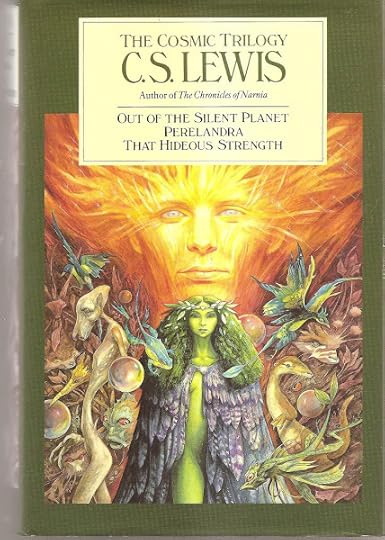 C. S. Lewis: The Cosmic Trilogy (1938-45)
C. S. Lewis: The Cosmic Trilogy (1938-45)C. S. Lewis's interplanetary trilogy undoubtedly helped to demonstrate the viability of such themes in a genre still dominated by the rationalist assumptions of Jules Verne and H. G. Wells. Ray Bradbury got in on the act, too, in his story "The Fire Balloons" [aka "In This Sign ..."] included in some editions of his classic Martian Chronicles.
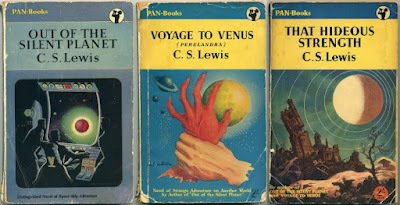 C. S. Lewis: Out of the Silent Planet / Perelandra / That Hideous Strength (1938, 1943, 1945)
C. S. Lewis: Out of the Silent Planet / Perelandra / That Hideous Strength (1938, 1943, 1945)In a way, though, despite his obvious affinity with other such earnest Catholic strivers in the 1950s, the philosophical scope of Miller's Canticle seems to me to have more in common with Hermann Hesse's Glass Bead Game (1943) than with the likes of Blish, Bradbury or Lewis.
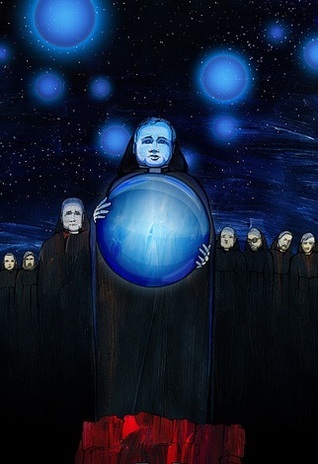 Ray Bradbury: The Fire Balloons (1951)
Ray Bradbury: The Fire Balloons (1951)Its popularity then and since has certainly depended to some extent on its links with other SF apocalypses of the 1950s: George Stewart's Earth Abides (1949), or Philip K. Dick's zany Dr Bloodmoney, or How We Got Along After the Bomb (1965). A Canticle for Leibowitz continues to evade us, though. It has elements of all of these things - Catholic apologia, SF Apocalypse, Dystopian satire - and yet it can't be said to be subsumed entirely by any of them.
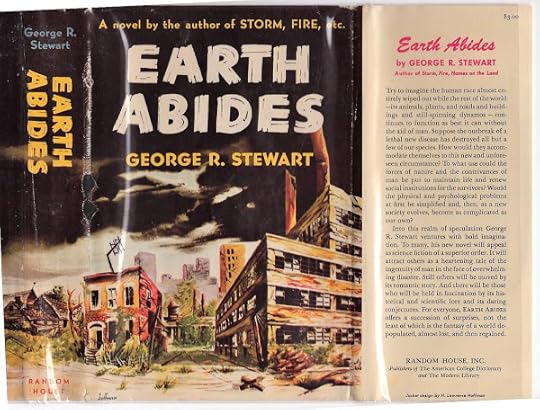 George R. Stewart: Earth Abides (1949)
George R. Stewart: Earth Abides (1949)I do hope one day to be able to purchase at least some of the uncollected stories of Walter M. Miller in convenient book form, but there's still a strong case for believing that everything significant he had to say was contained in this one, stand-alone masterpiece. His mistake, then - if mistake it was - lay in thinking he could emulate or even surpass it in his final few years.
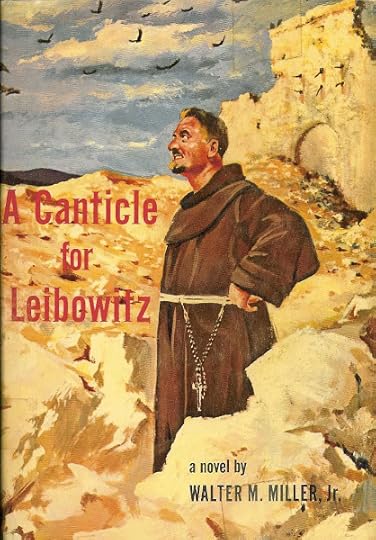 Walter M. Miller, Jr.: A Canticle for Leibowitz (1959)
Walter M. Miller, Jr.: A Canticle for Leibowitz (1959)•
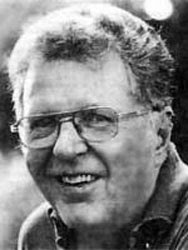
Walter M. Miller, Jr. (1923-1996)
Walter Michael Miller, Jr.
(1923-1996)
Novels:
A Canticle for Leibowitz (1959) Fiat Homo [aka 'A Canticle for Leibowitz'] (1955) Fiat Lux [aka 'And the Light is Risen'] (1956) Fiat Voluntas Tua [aka 'The Last Canticle'] (1957) A Canticle for Leibowitz: A Novel. 1959. London: Weidenfeld & Nicolson, 1960.A Canticle for Leibowitz. 1959. Corgi Science-Fiction. London: Transworld Publishers Ltd., 1970. [with Terry Bisson] Saint Leibowitz and the Wild Horse Woman (1997)Saint Leibowitz and the Wild Horse Woman. Ed. Terry Bisson. 1997. An Orbit Book. London: Little, Brown and Company (UK), 1998.
Collections:
The Year’s Best Science Fiction Novels. Ed. Everett F. Bleiler & T. E. Dikty. London: Grayson & Grayson, 1953.Izzard and the Membrane, by Walter M. Miller, Jr.… And Then There Were None, by Eric Frank RussellFlight to Forever, by Poul AndersonThe Hunting Season, by Frank M. Robinson Conditionally Human (1962)Conditionally Human (1952)The Darfsteller (1955)Dark Benediction (1951) The View from the Stars (1965)Blood Bank (1952)Dumb Waiter (1952)Anybody Else Like Me? (1952)The Big Hunger (1952)The Will (1954)Crucifixus Etiam (1953)I, Dreamer (1953)Big Joe and the Nth Generation (1952)You Triflin' Skunk! (1955) The Science Fiction Stories of Walter M. Miller Jr. (1977)Conditionally Human (1952)Blood Bank (1952)Dark Benediction (1951)Dumb Waiter (1952)Anybody Else Like Me? (1952)The Big Hunger (1952)The Darfsteller (1955)The Will (1954)Crucifixus Etiam (1953)I, Dreamer (1953)Big Joe and the Nth Generation (1952)You Triflin' Skunk! (1955) Conditionally Human and Other Stories. 1980. Corgi Science-Fiction. London: Transworld Publishers Ltd., 1982.Conditionally Human (1952)Blood Bank (1952)Dark Benediction (1951)Dumb Waiter (1952)Anybody Else Like Me? (1952)The Big Hunger (1952) The Darfsteller and Other Stories. 1980. Corgi Science-Fiction. London: Transworld Publishers Ltd., 1982.The Darfsteller (1955)The Will (1954)Vengeance for Nikolai (1957)Crucifixus Etiam (1953)I, Dreamer (1953)The Lineman (1957)Big Joe and the Nth Generation (1952)You Triflin' Skunk! (1955) Dark Benediction. [aka 'The Best of Walter M. Miller, Jr.', 1980]. SF Masterworks. Gollancz. London: Orion Publishing Group, 2007.Conditionally Human (1952)Blood Bank (1952)Dark Benediction (1951)Dumb Waiter (1952)Anybody Else Like Me? (1952)The Big Hunger (1952)The Darfsteller (1955)The Will (1954)Vengeance for Nikolai (1957)Crucifixus Etiam (1953)I, Dreamer (1953)The Lineman (1957)Big Joe and the Nth Generation (1952)You Triflin' Skunk! (1955) Two Worlds of Walter M. Miller (2010)The Hoofer (1955)Death of a Spaceman (1954)
Chapbooks:
The Hoofer [1955] (2009)Death of a Spaceman [1954] (2009)Way of a Rebel [1954] (2010)Check and Checkmate [1953] (2010)The Ties That Bind [1954] (2010)Conditionally Human [1952] (2016)It Takes a Thief [1952] (2019)
Short Stories & Novellas:
[Included in The Year’s Best Science Fiction Novels (1952);
A Canticle for Leibowitz (1959);
Conditionally Human (1962);
The View from the Stars (1965);
The Best of Walter M. Miller, Jr. (1980);
Two Worlds of Walter M. Miller (2010)]
MacDoughal's Wife [not SF] (1950)Month of Mary [not SF] (1950)Secret of the Death Dome [novella] (1951)Izzard and the Membrane [novella] (1951)The Soul-Empty Ones [novella] (1951) Dark Benediction [novella] (1951)The Space Witch [novella] (1951)The Song of Vorhu ... for Trumpet and Kettledrum [novella] (1951)The Little Creeps [novella] (1951)The Reluctant Traitor [novella] (1952) Conditionally Human [novella] (1952)Bitter Victory (1952) Dumb Waiter [novella] (1952) Big Joe and the Nth Generation {aka "It Takes a Thief"} (1952) Blood Bank [novella] (1952)Six and Ten Are Johnny [novella] (1952)Let My People Go [novella] (1952)Cold Awakening [novella] (1952)Please Me Plus Three [novella] (1952)No Moon for Me (1952) The Big Hunger (1952)Gravesong (1952) Anybody Else Like Me? {aka "Command Performance"} [novella] (1952)A Family Matter (1952)Check and Checkmate [novella] (1953) Crucifixus Etiam {aka "The Sower Does Not Reap"} (1953) I, Dreamer (1953)The Yokel [novella] (1953)Wolf Pack (1953) The Will (1954) Death of a Spaceman {aka "Memento Homo"} (1954)I Made You (1954)Way of a Rebel (1954)The Ties that Bind [novella] (1954) The Darfsteller [novella] (1955) You Triflin' Skunk! {aka "The Triflin' Man"} (1955)A Canticle for Leibowitz {aka "The First Canticle"} [novella] (1955) The Hoofer (1955)And the Light is Risen [novella] (1956)The Last Canticle [novella] (1957)Vengeance for Nikolai {aka "The Song of Marya"} (1957)[with Lincoln Boone] The Corpse in Your Bed is Me (1957)The Lineman [novella] (1957)
Secondary:
David N. Samuelson, "The Lost Canticles of Walter M. Miller, Jr." Science Fiction Studies #8 (Vol 3, part 1) (March 1976) - "Appendix: The Books and Stories of Walter M. Miller, Jr.":"Secret of the Death Dome," novelette, Amazing (January, 1951; reprinted in Amazing (June, 1966)."Izzard and the Membrane," novelette, Astounding (May, 1951); anthologized in Everett Bleiler and T.E. Dikty, eds., Year’s Best Science Fiction Novels: 1952 (New York: Frederick Fell, 1952)."The Soul-Empty Ones," novelette, Astounding (August, 1951)."Dark Benediction," short novel, Fantastic Adventures (September, 1951); collected in Conditionally Human (1962)."The Space Witch," novelette, Amazing (November, 1951); reprinted in Amazing (October, 1966)."The Song of Vorhu ... for Trumpet and Kettledrum," novelette, Thrilling Wonder Stories (December, 1951)."The Little Creeps," novelette, Amazing (December, 1951); reprinted in Fantastic (May, 1968); anthologized in Milton Lesser, ed., Looking Forward (New York: Beechhurst, 1953)."The Reluctant Traitor," short novel, Amazing (January, 1952)."Conditionally Human," novelette, Galaxy (February, 1952); revised and collected in Conditionally Human (1962); anthologized in Everett Bleiler and T.E. Dikty, eds., Year’s Best Science Fiction Novels: 1953 (New York: Frederick Fell, 1953)."Bitter Victory," short story, IF (March, 1952)."Dumb Waiter," novelette, Astounding (April, 1952); collected in The View from the Stars (1965); anthologized in Groff Conklin, ed., Science Fiction Thinking Machines (New York: Vanguard, 1954) and Damon Knight, Cities of Wonder (Garden City: Doubleday, 1966)."It Takes a Thief," short story, IF (May, 1952); collected, as "Big Joe and the Nth Generation," in The View from the Stars (1965)."Blood Bank," novelette, Astounding (June, 1952); collected in The View from the Stars (1965); anthologized in Martin Greenberg, ed., All About the Future (New York: Gnome Press, 1953)."Six and Ten are Johnny," novelette, Fantastic (Summer, 1952); reprinted in Fantastic (January, 1966)."Let My People Go," short novel, IF (July, 1952)."Cold Awakening," novelette, Astounding (August, 1952)."Please Me Plus Three," novelette, Other Worlds (August, 1952)."No Moon for Me," short story, Astounding (September, 1952); anthologized in William Sloane, ed., Space, Space, Space (New York: Grosset and Dunlap, 1953)."The Big Hunger," short story, Astounding (October, 1952); collected in The View from the Stars (1965); anthologized in Donald A Wollheim, ed., Prize Science Fiction (New York: McBride, 1953)."Gravesong," short story, Startling (October, 1952)."Command Performance," novelette, Galaxy (November, 1952); collected, as "Anybody Else Like Me?" in The View from the Stars (1965); anthologized in Everett Bleiler and T.E. Dikty, eds., The Best Science Fiction Stories: 1953 (New York: Frederick Fell, 1953); Horace Gold, ed., The Second Galaxy Reader (New York: Crown, 1954); and Brian W. Aldiss, ed., Penguin Science Fiction (London: Penguin, 1961)."A Family Matter," short story, Fantastic Story Magazine (November, 1952)."Check and Checkmate," novelette, IF (January, 1953)."Crucifixus Etiam," short story, Astounding (February, 1953); collected in The View from the Stars (1965); anthologized in Everett Bleiler and T.E. Dikty, eds., The Best Science Fiction Stories: 1954 (New York: Frederick Fell, 1954); Judith Merril, ed., Human? (New York: Lion, 1954); Michael Sissons, ed., Asleep in Armageddon (London: Panther, 1962); Kingsley Amis and Robert Conquest, eds., Spectrum V (New York: Harcourt Brace, 1966); and Robert Silverberg, ed., Tomorrow’s Worlds (New York: Meredith, 1969)."I, Dreamer," short story, Amazing (July, 1953); collected in The View from the Stars (1965)."The Yokel," novelette, Amazing (September, 1953)."The Wolf Pack," short story, Fantastic (Oct., 1953); reprinted in Fantastic (May, 1966); anthologized in Judith Merril, ed., Beyond the Barriers of Space and Time (New York: Random House, 1954)."The Will," short story, Fantastic (February, 1954); reprinted in Fantastic (April, 1969); collected in The View from the Stars (1965); anthologized in T.E. Dikty, ed., The Best Science Fiction Stories and Novels: 1955 (New York: Frederick Fell, 1955)."Death of a Spaceman," short story, Amazing (March, 1954); reprinted in Amazing (March, 1969); anthologized in William F. Nolan, ed., A Wilderness of Stars (Los Angeles: Sherbourne Press, 1971); anthologized as "Memento Homo" in T.E. Dikty, ed., The Best Science Fiction Stories and Novels: 1955 (New York: Frederick Fell, 1955); Robert P. Mills, ed., The Worlds of Science Fiction (New York: Dial Press, 1963); and Laurence M. Janifer, ed., Masters’ Choice (New York: Simon and Schuster, 1966)."I Made You," short story, Astounding (March, 1954)."Way of a Rebel," short story, IF (April, 1954)."The Ties that Bind," novelette, IF (May, 1954); anthologized in William F. Nolan, ed., A Sea of Space (New York: Bantam, 1970)."The Darfsteller," short novel, Astounding (January, 1955); collected in Conditionally Human (1962); anthologized in Isaac Asimov, ed., The Hugo Winners (Garden City: Doubleday, 1962)."The Triflin’ Man," short story, Fantastic Universe (January, 1955); collected as "You Triflin’ Skunk" in The View from the Stars (1965); anthologized in Judith Merril, ed., Galaxy of Ghouls (New York: Lion, 1955)."A Canticle for Leibowitz," short novel, The Magazine of Fantasy and Science Fiction (F & SF) (April, 1955); revised as part of A Canticle for Leibowitz (1959); anthologized in T.E. Dikty, ed., Best Science Fiction Stories and Novels: 1956 (New York: Frederick Fell, 1956); Anthony Boucher, ed., The Best from Fantasy and Science Fiction, fifth series (Garden City: Doubleday, 1956); and Christopher Cerf, ed., The Vintage Anthology of Science Fantasy (New York: Vintage, 1966)."The Hoofer," short story, Fantastic Universe (September, 1955); anthologized in Judith Merril, ed., S_F: The Year’s Greatest Science-Fiction and Fantasy (New York: Dell, 1956), and S-F: The Best of the Best (New York: Dell, 1968)."And the Light is Risen," short novel, F & SF (August, 1956); revised as part of A Canticle for Leibowitz (1959)."The Last Canticle," short novel, F & SF (February, 1957); revised as part of A Canticle for Leibowitz (1959)."Vengeance for Nikolai," short story, Venture (March, 1957); anthologized in Joseph Ferman, ed., No Limits (New York: Ballantine, 1958)."The Corpse in Your Bed is Me," short story co-authored by Lincoln Boone, Venture (May, 1957)."The Lineman," short novel, F & SF (August, 1957); anthologized in William F. Nolan, ed., A Wilderness of Stars (Los Angeles: Sherbourne Press, 1971).
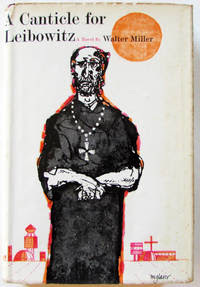
Walter M. Miller, Jr.: A Canticle for Leibowitz (1959)
•
Published on January 05, 2022 12:33
December 22, 2021
Strange Stories from a Chinese Studio
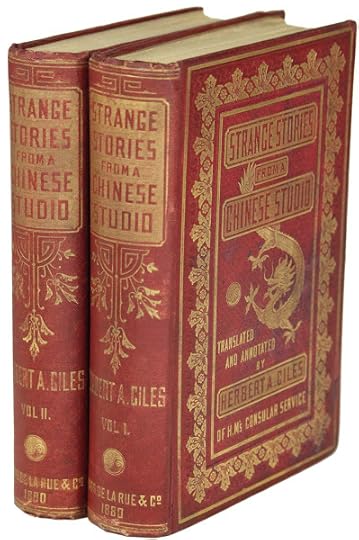 Herbert A. Giles, trans. Strange Stories from a Chinese Studio (1880)
Herbert A. Giles, trans. Strange Stories from a Chinese Studio (1880)I remember, back in the 1980s, trotting off one day to my regular haunt the Edinburgh Filmhouse to see a film called A Chinese Ghost Story.
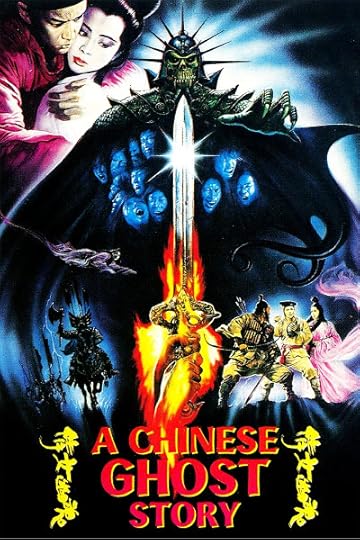 Siu-Tung Ching, dir.: A Chinese Ghost Story (1987)
Siu-Tung Ching, dir.: A Chinese Ghost Story (1987)It wasn't the only Chinese film I saw at that time. They seemed to be distinguished mainly by irrepressible energy and humour. I saw Peking Opera Blues (1986), with its cross-dressing heroine and its gender-fluid cast of 1920s 'decadents' (I remember one scene where they expressed their disdain for convention by pouring champagne all over the record player blasting out jazz to shield their revels!). I found out later that it's one of Quentin Tarantino's favourite films.
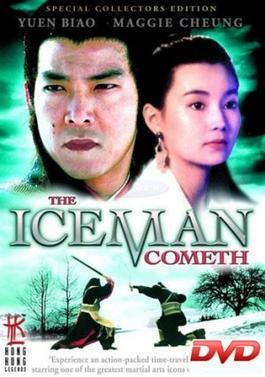 Clarence Fok & Yuen Biao, dir.: The Iceman Cometh (1989)
Clarence Fok & Yuen Biao, dir.: The Iceman Cometh (1989)I also remember seeing a Hong Kong movie called The Iceman Cometh (1989), which had some very amusing scenes where an ultra-modern young lady puts an ancient frozen warrior in his proper place of obedience to her every whim.
I wouldn't say A Chinese Ghost Story displayed much more authenticity than the other two mentioned above, but it was certainly their equal in entertainment value. I did vaguely notice that the screenplay was based on a genuine ghost story, but at the time I knew little of Pu Songling or his celebrated 18th-century compilation of such stories, translated as Strange Stories from a Chinese Studio by sinologist Herbert Giles in the late nineteenth century.
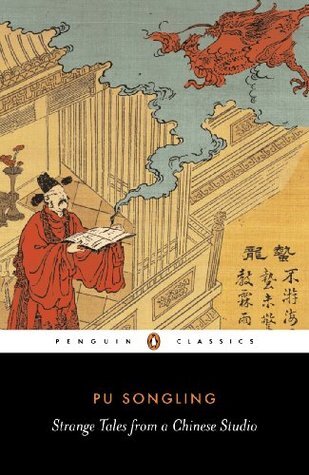 John Minford, trans. Strange Tales from a Chinese Studio (2006)
John Minford, trans. Strange Tales from a Chinese Studio (2006)In fact, it wasn't until I bought a copy of John Minford's new version of selected stories from Pu Songling's collection that I began to realised just what a treasure I'd missed! Minford is perhaps best known for his completion of the Penguin Classics translation of Cao Xueqin's great novel The Story of the Stone, begun by his former teacher (and father-in-law) David Hawkes.
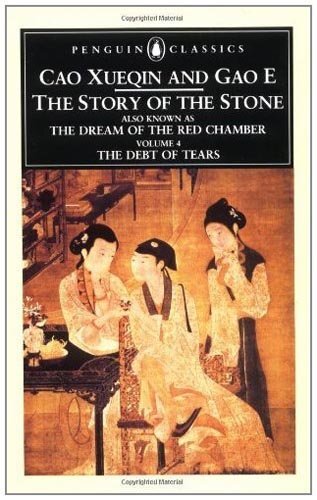 John Minford, trans. The Story of the Stone (1982)
John Minford, trans. The Story of the Stone (1982)Cao Xueqin. The Story of the Stone (Also Known as The Dream of the Red Chamber): A Chinese Novel by Cao Xueqin in Five Volumes, edited by Gao E. Vol. 4: The Debt of Tears. Trans. John Minford. Penguin Classics. Harmondsworth: Penguin, 1982.The intention behind Minford's Penguin Classics version of Pu Songling's Strange Tales is to restore its original frankness and variety, a feature obscured by the "limitations of the taste of [Giles's] time, which dictated what he thought he could permissibly do":
Cao Xueqin. The Story of the Stone (Also Known as The Dream of the Red Chamber): A Chinese Novel by Cao Xueqin in Five Volumes, edited by Gao E. Vol. 5: The Dreamer Wakes. Trans. John Minford. Penguin Classics. Harmondsworth: Penguin, 1986.
I had originally determined to publish a full and complete translation of the whole ... but on a closer acquaintance many of the stories turned out to be quite unsuitable for the age in which we live, forcibly recalling the coarseness of our own writers of fiction in the eighteenth century. [Giles, quoted by Minford, p.xxxii]Minford, by contrast, is fascinated by the "intensity and richness" of the collection:
In fact, so great an emphasis does Minford place on this aspect of Pu's compilation, that it can come as a bit of a relief to turn to the staider pages of Giles's own selection.
Strange Tales is (among other things) a casebook of Chinese sexual pathology ... A young man with a roving eye is deluded by his neighbour's pretty wife into having sex with a rotten log and as a result has his penis fatally bitten by a scorpion ... A kungfu master bashes his penis with a mallet and feels no pain. We encounter aphrodisiacs, love potions and dildos ... Above all, again and again, we read of the seduction of an enervated young scholar by some fatally attractive woman-as-fox or woman-as-ghost, their sexual liaison leading to his eventual debilitation and premature death. [xxi]
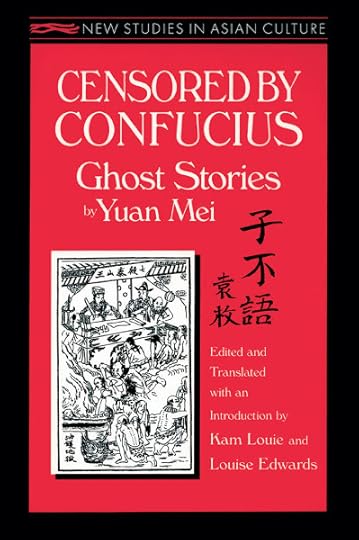 Yuan Mei: Censored by Confucius (1788)
Yuan Mei: Censored by Confucius (1788)Towards the end of the eighteenth century, famed Chinese poet Yuan Mei published his own collection of ghost stories and strange happenings. His original title for the book was "Censored by Confucius" (though he subsequently changed it to "New Wonder Tales" when he discovered that name had already been used by a 14th-century Yuan dynasty writer). The reference is to a passage in the Analects, where it is said of Confucius:
The Master never talked of wonders, feats of strength, disorders of nature, or spirits. [Arthur Waley's translation]
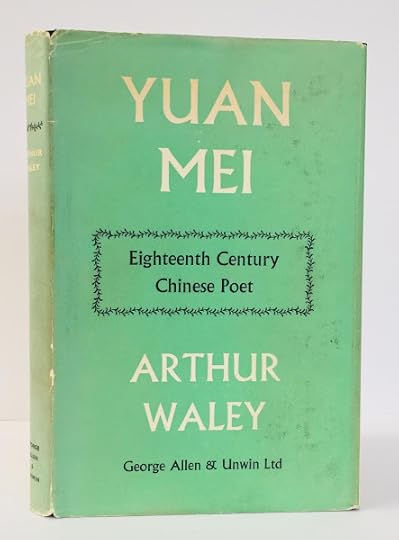 Arthur Waley: Yuan Mei (1956)
Arthur Waley: Yuan Mei (1956)The implication is, of course, that anecdotes about such subjects are irrelevant and even harmful to the well-ordered Confucian individual. Yuan Mei, by contrast, an addict of such "perverse, depraved, obscene and licentious ideas," as his contemporary Zhang Xuechen described them, felt thoroughly at home in such regions. As he remarks in one of his "Seven Poems on Aging":
Talk of books - why they please or fail to please -And certainly the above selection from Yuan Mei's collection, published in English in 1996, contains the same basic medley of fox-spirits, ghosts, and other Fortean phenomena as Pu Songling's. It does appear (to me, at least) to lack some of the latter's complexity and charm, however, though that could easily be a result of the choice of stories. Yuan Mei was, after all, one of the greatest poets and writers of his age, and there were 747 stories in the original collection, of which only 100 have been presented here.
Or of ghosts and marvels, no matter how far-fetched,
These are excesses in which, should he feel inclined,
A man of seventy-odd may well indulge. [quoted in Louie & Edwards, p. xxiv]
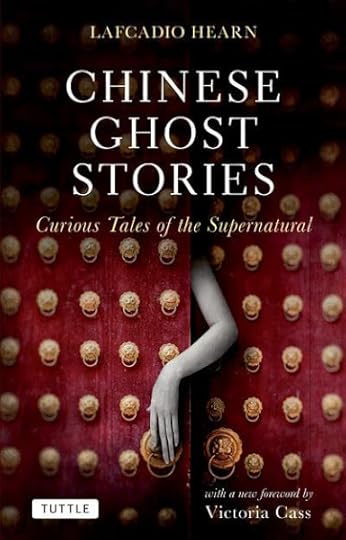 Lafcadio Hearn: Some Chinese Ghosts (1886)
Lafcadio Hearn: Some Chinese Ghosts (1886)Finally, last but not least, I'd like to say a few words about the collection above, one of many adaptation / translations put together by Irish-Greek-American writer Lafcadio Hearn. Hearn is, of course, far more famous for the numerous works he published about his adopted country, Japan.
This early book, written while he was still living in New Orleans, was largely cribbed from the publications of French travellers, though it's possible that it may have been influenced some of Giles's Strange Tales as well. Certainly it seems more redolent of fin-de-siècle Chinoiserie than what we might regard as more authentic folklore.
Hearn was, after all, a decadent, and if it were not for the continued vogue that his books still have among contemporary Japanese readers, he'd probably be largely forgotten now. In any case, if - like me - you're fascinated by tales of "ghosts and marvels, no matter how far-fetched", I thoroughly recommend these three collections of Chinese ghost stories.
There can be a certain monotony in any ghost story tradition, whether it features Ouija boards and clanking chains or - as in this case - fox-spirits and earth-bound ghosts. The solution seems to be to mix it up. And certainly, when A Chinese Ghost Story opened an unexpected door into strangeness for me all those years ago, I had no idea where it might end up.
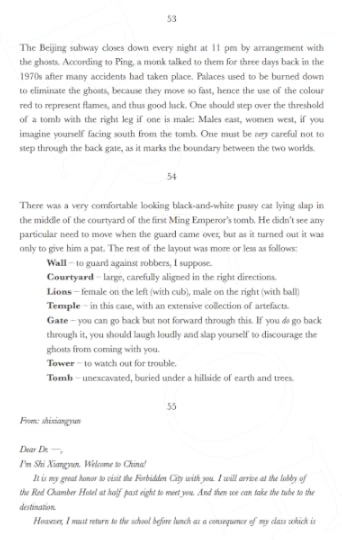 Jack Ross: Ghost Stories (2019)
Jack Ross: Ghost Stories (2019)•
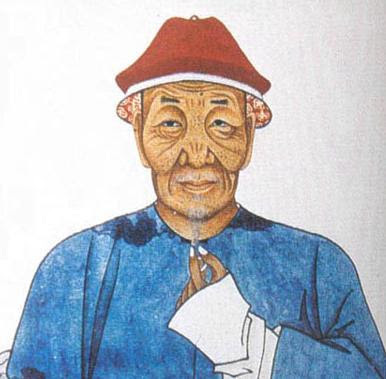 Pu Songling
Pu SonglingPu Songling
(1640-1715)
Translations:
Strange Stories from a Chinese Studio. Trans. Herbert A. Giles. London: T. De La Rue, 1880.Strange Stories from a Chinese Studio. Trans. Herbert A. Giles. 1880. Rev. ed. 1916. Honolulu, Hawai’i: University Press of the Pacific, 2003. Strange Stories from the Lodge of Leisure. Trans. George Soulie. London: Constable, 1913.Strange Tales of Liaozhai. Trans. Lu Yunzhong, Chen Tifang, Yang Liyi, & Yang Zhihong. Hong Kong: Commercial Press, 1982.Strange Tales of Liaozhai. Trans. Lu Yunzhong, Yang Liyi, Yang Zhihong, & Chen Tifang. Illustrated by Tao Xuehua. Hong Kong: The Commercial Press, Ltd., 1982. Strange Tales from Make-do Studio. Trans. Denis C. & Victor H. Mair. Beijing: Foreign Languages Press, 1989.Strange Tales from Make-Do Studio. Trans. Denis C. & Victor H. Mair. 1989. Beijing: Foreign Languages Press, 1996. Strange Tales from the Liaozhai Studio. Trans. Zhang Qingnian, Zhang Ciyun and Yang Yi. Beijing: People's China Publishing, 1997.Strange Tales from a Chinese Studio. Trans. John Minford. London: Penguin, 2006.Strange Tales from a Chinese Studio. Trans. John Minford. Penguin Classics. Harmondsworth: Penguin, 2006. Strange Tales from Liaozhai. Trans. Sidney L. Sondergard. 6 vols. Jain Pub Co., 2008-2017.
Secondary:
Judith T. Zeitlin. Historian of the Strange: Pu Songling and the Chinese Classical Tale. Stanford, CA: Stanford University Press, 1993.
•
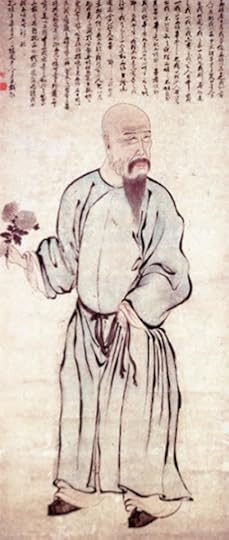 Luo Ping: Yuan Mei
Luo Ping: Yuan MeiYuan Mei
(1716–1797)
Translations:
Censored by Confucius: Ghost Stories. 1788. Ed. & trans. Kam Louie & Louise Edwards. New Studies in Asian Culture. An East Gate Book. New York & London: M. E. Sharpe, 1996.
Secondary:
Arthur Waley. Yuan Mei: Eighteenth Century Chinese Poet. London: George Allen and Unwin, 1956.
•
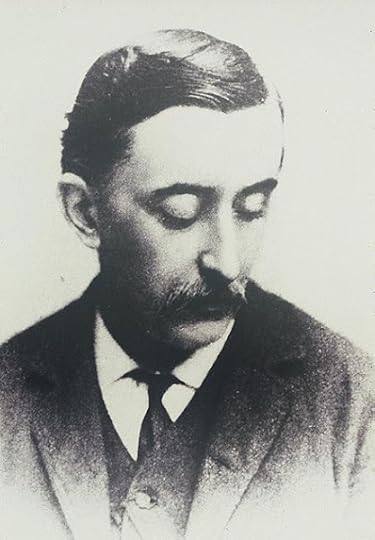 Frederick Gutekunst: Lafcadio Hearn (1889)
Frederick Gutekunst: Lafcadio Hearn (1889)Patrick Lafcadio Hearn(1850-1904)
America & the West Indies:
La Cuisine Creole: A Collection of Culinary Recipes (1885)"Gombo Zhèbes": A Little Dictionary of Creole Proverbs, Selected from Six Creole Dialects (1885)Chita: A Memory of Last Island (1889)Youma, the Story of a West-Indian Slave (1889)Two Years in the French West Indies (1890)
Japan:
Glimpses of Unfamiliar Japan (1894)Out of the East: Reveries and Studies in New Japan (1895)Kokoro: Hints and Echoes of Japanese Inner Life. 1896. Tokyo & Rutland, Vermont: Charles E. Tuttle Company, 1977.Gleanings in Buddha-Fields: Studies of Hand and Soul in the Far East (1897)The Boy who Drew Cats (1897)Exotics and Retrospectives (1898)Japanese Fairy Tales (1898)In Ghostly Japan. 1899. Tokyo & Rutland, Vermont: Charles E. Tuttle Company, 1972.Shadowings (1900)Japanese Lyrics (1900)A Japanese Miscellany (1901)Kottō: Being Japanese Curios, with Sundry Cobwebs (1902)Kwaidan: Stories and Studies of Strange Things. 1904. The Travellers’ Library. London: Jonathan Cape, 1927.Japan: An Attempt at Interpretation (1904)The Romance of the Milky Way and other studies and stories (1905)
Posthumous:
Letters from the Raven; being the correspondence of Lafcadio Hearn with Henry Watkin et al. (1907)Leaves from the Diary of an Impressionist (1911)Interpretations of Literature (1915)Karma (1918)On Reading in Relation to Literature (1921)Creole Sketches (1924)Lectures on Shakespeare (1928)Insect-musicians and other stories and sketches (1929)Japan's Religions: Shinto and Buddhism (1966)Books and Habits; from the Lectures of Lafcadio Hearn (1968)Writings from Japan: An Anthology. Ed. Francis King. Penguin Travel Library. Harmondsworth: Penguin, 1984.Lafcadio Hearn's America: Ethnographic Sketches and Editorials (2002)Lafcadio Hearn's Japan: An Anthology of His Writings on the Country and Its People (2007)American Writings (Library of America, 2009): Some Chinese Ghosts | Chita | Two Years in the French West Indies | Youma | selected journalism and lettersInsect Literature (2015)Japanese Ghost Stories. Ed. Paul Murray (2019)Japanese Tales of Lafcadio Hearn. Ed. Andrei Codrescu (2019)
Translations &c.:
One of Cleopatra's Nights and Other Fantastic Romances, by Théophile Gautier (1882)Stray Leaves From Strange Literature; Stories Reconstructed from the Anvari-Soheili, Baital Pachisi, Mahabharata, Pantchantra, Gulistan, Talmud, Kalewala, etc. (1884)Chinese Ghost Stories: Curious Tales of the Supernatural. ['Some Chinese Ghosts', 1886]. Tuttle Publishing. Hong Kong: Periplus Editions (HK) Ltd., 2011.Tales from Théophile Gautier (1888) The Crime of Sylvestre Bonnard, by Anatole France (1890)The Temptation of Saint Anthony, by Gustave Flaubert (1910)Stories from Emile Zola (1935)The Tales of Guy de Maupassant (1964)
Secondary:
Elizabeth Bisland. The Life and Letters of Lafcadio Hearn. 2 vols. New York: Houghton, Mifflin & Company, 1906.Jonathan Cott. Wandering Ghost: The Odyssey of Lafcadio Hearn. New York: Knopf, 1990.Carl Dawson. Lafcadio Hearn and the Vision of Japan. Baltimore: Johns Hopkins University Press, 1992.Paul Murray. A Fantastic Journey: The Life and Literature of Lafcadio Hearn. Tokyo: Japan Library, 1993.
•
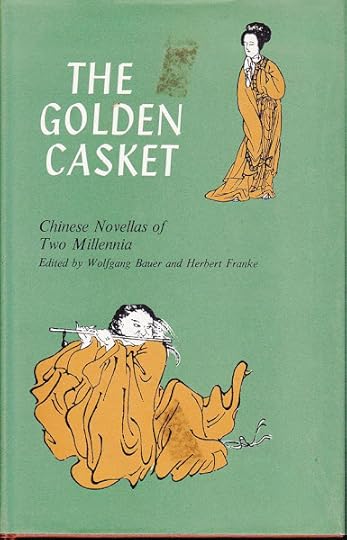 The Golden Casket: Chinese Novellas of Two Millennia (1965)
The Golden Casket: Chinese Novellas of Two Millennia (1965)Anthologies
Bauer, Wolfgang & Herbert Fiske, eds. The Golden Casket: Chinese Novellas of Two Millennia. 1959. Trans. Christopher Levenson. 1964. Penguin Classics. Harmondsworth: Penguin, 1967.
Lin Yutang. Famous Chinese Short Stories. 1952. Montreal: Pocket Books of Canada, 1953.
Ma, Y. W. & Joseph M. Lau, eds. Traditional Chinese Stories: Themes and Variations. New York: Columbia University Press, 1978.
•
Published on December 22, 2021 12:05
December 11, 2021
SF Luminaries: Frank Herbert
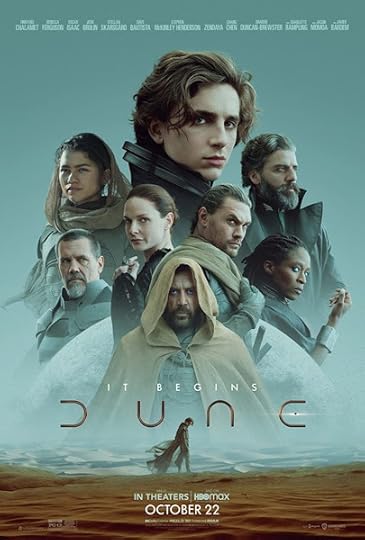 Denis Villeneuve, dir.: Dune: Part One (2021)
Denis Villeneuve, dir.: Dune: Part One (2021)Dunes
"These memories, which are my life"
- Evelyn Waugh, Brideshead Revisited (1945)
I see that my old paperback copy of Dune is dated 1973. I think that I must have got it for my birthday in 1975, when I was just turning 13. It didn't disappoint. In fact, I think that next to The Lord of the Rings, it probably had the biggest influence on me of anything I'd read up to then.
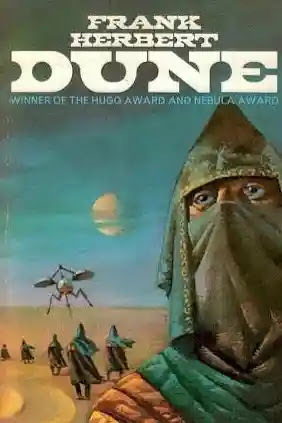 Frank Herbert: Dune (1965)
Frank Herbert: Dune (1965)Not that I found it flawless, even at the time. I found the italicised internal monologues by the main characters unnecessarily intrusive on the action, and I also found tedious the 'sayings' by each of these characters enshrined in quote marks at the opening of each chapter.
But, hey, those were small things beside the sheer fascination of Herbert's vision of planetary ecologies, his portrayal of the Fremen, and the tantalising glimpses he provided of an immensely complex galaxy-wide economy.
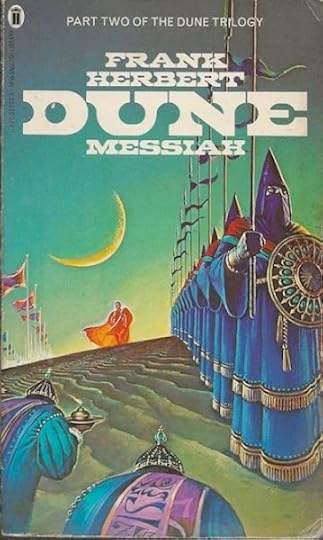 Frank Herbert: Dune Messiah (1969)
Frank Herbert: Dune Messiah (1969)Dune Messiah was an unexpectedly depressing cold shower-bath of a sequel to the lush vistas of Dune - though it's definitely grown on me over the years - but Frank Herbert seemed to be back on planet-spanning form in its follow-up, Children of Dune.
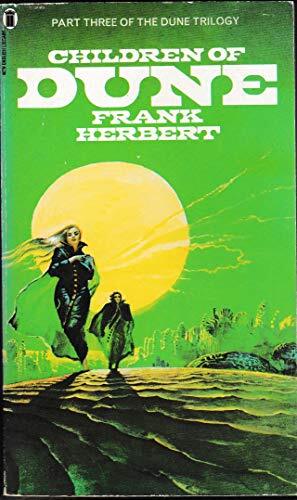 Frank Herbert: Children of Dune (1976)
Frank Herbert: Children of Dune (1976)I dutifully followed the saga through all its twists and turns in the next three sequels, until the ridiculously titled (though actually rather good) Chapter House Dune in 1985. Herbert died the year after it was published.
•
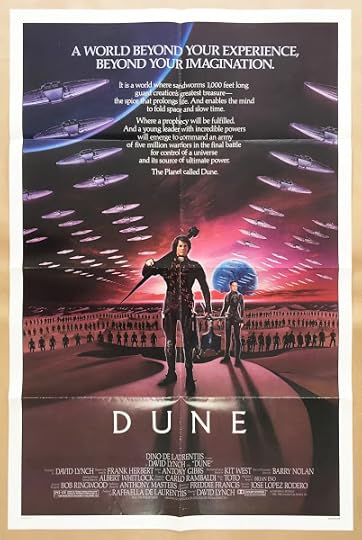 David Lynch, dir.: Dune (1984)
David Lynch, dir.: Dune (1984)By then, however, we'd entered the world of the movies. There were many rumours about the first Dune film before it came out. I think Sci-fi fans in general were most excited by the prospect of a Ridley Scott version, building on the artistry of his Alien and (in particular) Blade Runner triumphs.
Dune, dir. & writ. David Lynch (based on the novel by Frank Herbert) - with Francesca Annis, Linda Hunt, Kyle MacLachlan, Everett McGill, Kenneth McMillan, Siân Phillips, Jürgen Prochnow, Patrick Stewart, Sting, Max von Sydow, Sean Young - (USA, 1984).
I don't think anyone - or anyone in my circle, at any rate - knew about the Jodorowsky concept designs, or any of the other details of the rocky road that led to David Lynch's eventual De Laurentis-produced spectacular.
I wouldn't say that it was love at first sight. The movie was too campy and over-the-top for an SF-cinematic sensibility formed by Kubrick's 2001 and Scott's Blade Runner. Over time, however, I began to see that Lynch was a horse of a different colour. He saw Dune as a huge Italian melodrama, with a lush operatic score, and a massive cast of picturesque characters.
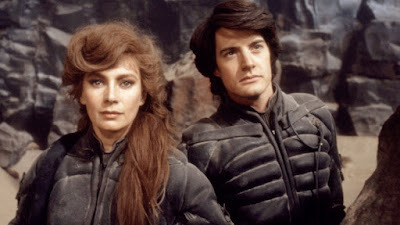 Francesca Annis as Lady Jessica and Kyle MacLachlan as Paul Atreides (1984)
Francesca Annis as Lady Jessica and Kyle MacLachlan as Paul Atreides (1984)The wonderful visual inventiveness of his guild navigators and planet-dwarfing space-ships remains impressive. And, once I had learned to recalibrate my expectations, I found his relish for teaasingly gnomic lines ("A beginning is a very delicate time" - Princess Irulan; "We have worm-sign such as God has never seen" - Stilgar; "The sleeper must awaken" - Duke Leto; "Tell me of your homeworld, Usul" - Chani; "The Spice must flow!" - passim) a source of rich entertainment at each of many reviewings over the years.
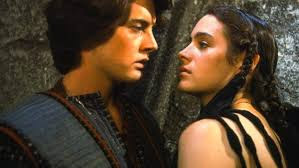 Sean Young as Chani with Paul Muad'Dib (1984)
Sean Young as Chani with Paul Muad'Dib (1984)Francesca Annis was a spectacularly beautiful Lady Jessica, Sean Young played Chani as a kind of slinky cat-woman, and Patrick Stewart as Gurney Halleck looked super-cool, as always. Kyle MacLachlan - well, what can you say? He seemed to be in training for Agent Cooper in Twin Peaks already, but then one doesn't go to Grand Opera for gritty realism.
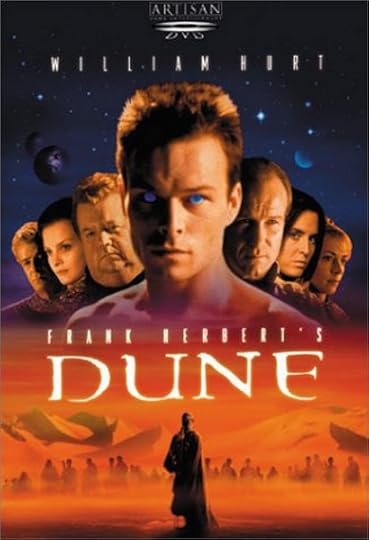 John Harrison, dir.: Frank Herbert's Dune: TV Miniseries (2000)
John Harrison, dir.: Frank Herbert's Dune: TV Miniseries (2000)There were, of course, omissions. Putting so large a plot into one movie required some fairly violent surgery, but these were interestingly reexamined in John Harrison's 3-part miniseries, some fifteen years later.
Frank Herbert’s Dune, dir. & writ. John Harrison (based on the novel by Frank Herbert) – with William Hurt, Alec Newman, Saskia Reeves, Susan Sarandon, Daniela Amavia – (USA, 2000)
Alec Newman made a far more plausible Paul than MacLachlan had. He looked streetwise and desert-hardened from the very beginning, and only Saskia Reeves seemed to have blundered in from some BBC kitchen sink drama by mistake. The fact that it was largely filmed in the Czech Republic also guaranteed some strikingly imaginative costume and set designs. All in all, it was a thoroughly creditable effort, which complemented rather than superseding Lynch's pioneering film.
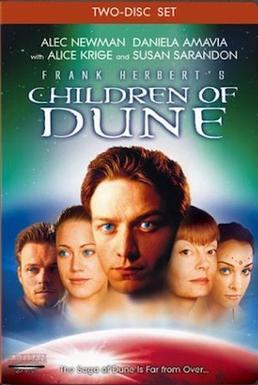 John Harrison, dir.: Frank Herbert's Children of Dune: TV Miniseries (2003)
John Harrison, dir.: Frank Herbert's Children of Dune: TV Miniseries (2003)It was in the sequel that John Harrison's vision really started to pay off, though. The addition of Herbert's two sequels to the original Dune plotline helped greatly in fleshing out the true richness of the Dune universe. James McAvoy made a great Duke Leto, Paul Muad'Dib's son and heir - the future God Emperor of Dune of the fourth novel - and the complex intrigues and machinations surrounding the new Fremen imperium were spectacularly embodied on screen.
Frank Herbert’s Children of Dune, dir. & writ. John Harrison (based on the novels Dune Messiah and Children of Dune by Frank Herbert)– with James McAvoy, Alec Newman, Alice Krige, Susan Sarandon – (USA, 2003)
Alice Krige made a far better Lady Jessica than Saskia Reeves ever had, and most of the other casting decisions were similarly shrewd.
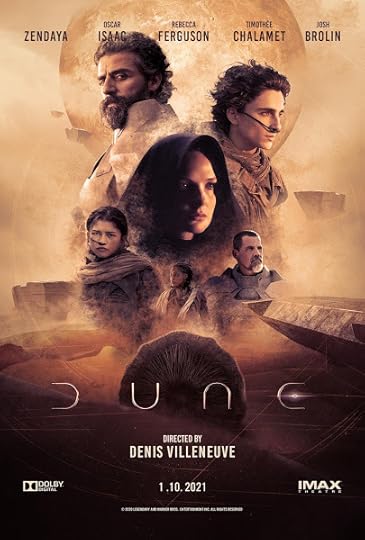 Denis Villeneuve, dir.: Dune: Part One (2021)
Denis Villeneuve, dir.: Dune: Part One (2021)All of which brings us, I guess, to the $64,000 question: what do you think of Denis Villeneuve's new film? I should begin by saying that for a Dune-ophile such as myself, any new movie based on Herbert's work is big news.
Dune: Part One, dir. Denis Villeneuve, writ. Denis Villeneuve, Jon Spaihts, & Eric Roth (based on the novel by Frank Herbert) – with Timothée Chalamet, Rebecca Ferguson, Oscar Isaac, Josh Brolin, Stellan Skarsgård, Dave Bautista, Zendaya, Charlotte Rampling, Jason Momoa, Javier Bardem – (USA, 2021)
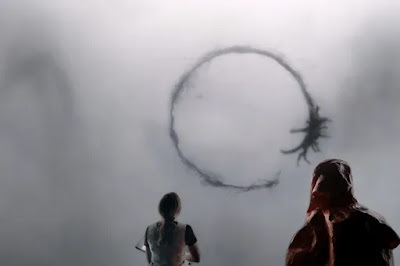 Denis Villeneuve, dir. Arrival (2016)
Denis Villeneuve, dir. Arrival (2016)Having said that, I guess that I have to make a couple of provisos. First of all, I do find some of the adulation heaped on Villeneuve's sci-fi movies to date a bit misplaced. Arrival was, I thought, very good - mainly because of the ingenious plot of Ted Chiang's original short story.
I did my level best to like Blade Runner 2049, and - once again - found some points of interest in its approach to the tried-and-true android theme, but already a certain visual blankness seemed to be standing in for the seedy baroque magnificence of Ridley Scott's imagination.
 Denis Villeneuve, dir. Blade Runner 2049 (2017)
Denis Villeneuve, dir. Blade Runner 2049 (2017)Dune, too, looked frustratingly blank to me. The city of Arrakeen looked like an old concrete gun emplacement beefed up with a bit of CGI. The spaceships were larger and emptier than David Lynch's, but otherwise they lacked distinction - or any particular role beyond spectacle. Any cinema-goer these days has seen a few too many such space-scapes already.
What, then, of the performances? Some pretty impressive actors had been recruited to fill these oh-so-familiar roles, but they had - in almost every case - little to work with in the minimalist script. For all the richness of the plot material to get through in the first half of Herbert's book, this Dune (Part One) (as it's coyly labelled) seems to devote an inordinate amount of time to its characters' apparent desire to stare out to sea, or into space, or into the desert, without much to say.
It's not that I don't concede that internal monologues were somewhat overused as a device by Lynch, but that was a true reflection of Frank Herbert's own practice, and without them there's seldom enough in the dialogue to explain what's going on.
Who, then, stands out? Not, I'm afraid, Timothée Chalamet, who does a good enough job of playing the callow, young heir of a noble house, but shows few signs of his coming metamorphosis into Paul Muad'Dib, Messiah of Arrakis and Galactic Kwisatz Haderach. His puzzlement at the welcome he receives on arrival at the desert planet Arrrakis is, I fear, echoed by much of the cinema audience. There's just not a lot to him - at this point, at any rate.
 Rebecca Ferguson as Lady Jessica
Rebecca Ferguson as Lady JessicaRebecca Ferguson as Jessica? Wonderful, I'm glad to say. It's true that I was already a bit of a fan, but she is, to me, the only actor on screen who seems actually to be there, on a strange, forbidding planet, caught in the toils of her Bene Gesserit sisterhood's plans.
Oscar Isaac - meh; Josh Brolin - God knows what movie he thought he was in; Stellan Skarsgård - a very disappointing Baron Harkonnen: a Halloween mask could have performed with more distinction; Dave Bautista - another massively talented comic actor, reduced to playing a thuggish sidekick; Zendaya - reduced mainly to wandering around in dream sequences; Chang Chen - when one thinks of what the late lamented Dean Stockwell made of his Doctor Yueh, this one seems pretty close to nothing; Sharon Duncan-Brewster - actually this seemed rather a nice notion: Max von Sydow (needless to say) was great in the role of Doctor Liet-Kynes, the imperial planetary ecologist, in the 1984 movie, but changing the character's gender and ethnicity made her far more believable, as well as the fact that she seemed more interested than most of the other in doing some actual acting; Charlotte Rampling - if you insist on hiding one of the best-known faces in cinema behind a rope net, little can be expected, and little was accordingly achieved: both of the previous cinematic Reverend Mothers were far superior; Jason Momoa - another interesting casting idea, but his obvious desire to be doing something all the time made him seem a bit out of step with the passivity of the production as a whole; and (last and unfortunately least) Javier Bardem - a dreadfully ill-judged casting decision; was he worse than the equally out-of-place Everett McGill's Stilgar in the original movie? He was certainly no better, that's for sure.
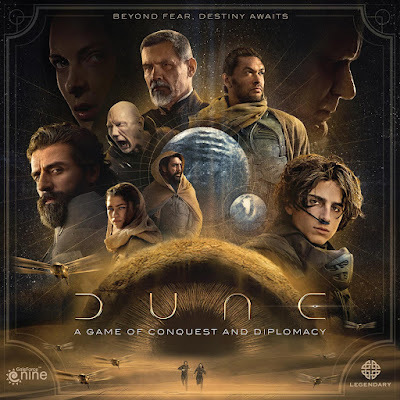 Cast Members of Dune
Cast Members of DuneA lot of the problems here come down to a single factor. Denis Villeneuve seems entirely to lack a sense of humour. In the case of very intense, confined dramas, this can lead to highly effective results: in his early film Incendies (2010), for instance, or even his first Hollywood film Prisoners (2013).
But when the action portrayed is a bit over-the-top (which is a good description of Herbert's work in general), he seems to lack the tonal sense of how to shift registers, make it somehow less unbelievable with a well-timed joke or the adoption of a slightly less ponderous approach to things. Hence the strange trainwreck that was the film Sicario: a lot of nonsense about a very serious subject - a theme treated far more adroitly in Breaking Bad. Hence, too, the nasty and irrelevant psychopath subplot in his Blade Runner sequel: a tiresome intrusion on a film whose legitimate interests lay elsewhere.
 Jared Leto in Blade Runner 2049 (2017)
Jared Leto in Blade Runner 2049 (2017)To do the director credit, there's no character in Dune as irritating as Jared Leto in Blade Runner 2049, but Villeneuve still doesn't seem to understand that if you take out virtually all the background trimmings and subtleties from Frank Herbert's universe, you're left not with austerity but boredom. Cracking a joke or two, always David Lynch's first instinct to relieve the tension, seems to be quite off the agenda. There's not even any room in all these hours of cinema for a character so gleefully anarchic as Julie Cox's Princess Irulan in the John Harrison version.
 Julie Cox in Frank Herbert's Dune (2000)
Julie Cox in Frank Herbert's Dune (2000)Vague disappointment - that, I'm afraid, was the emotion I was left with. There was indeed much there on screen to enjoy (I particularly liked the dragonfly-like thopters).
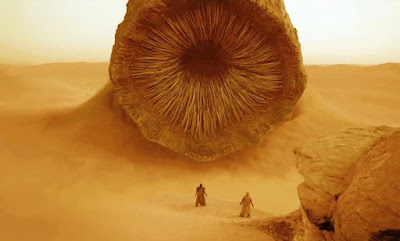 Shai-Hulud (2021)
Shai-Hulud (2021)As I said before, any Dune movie is cause for celebration among the faithful (the ones who intone "the Spice must flow" at regular intervals, and make a peculiar hand gesture at each appearance of the great sandworm, Shai-Hulud: "May His passage cleanse the world"). But Denis Villeneuve is no Ridley Scott, and there's little point in having such inflated expectations of him.
 Shai-Hulud (2000)
Shai-Hulud (2000)Naturally I'll be trotting off to see Part Two when it's released - if only to admire the Garbo-esque Rebecca Ferguson once again - and (who knows?) maybe this time Villeneuve'll pull out the stops a bit further. He's promised as much, after all.
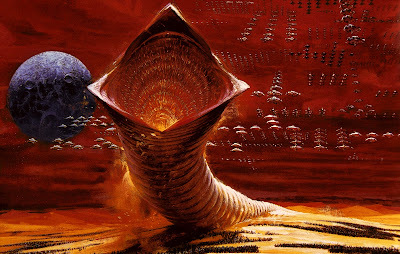 Shai-Hulud (1984)
Shai-Hulud (1984)But don't go dissing David Lynch in my presence anytime soon. A myth has grown up that his 1984 Dune movie was a disaster when it was, in fact, an eccentric masterpiece, one which gave fair warning of many transgressive cinematic excesses to come!
 Floyd Snyder: The Dunes (2015)
Floyd Snyder: The Dunes (2015)•

Frank Herbert (1984)
Franklin Patrick Herbert Jr. [Frank Herbert]
(1920-1986)
The Dune Series:
Dune. [Part I, "Dune World": Analog (Dec 1963 – Feb 1964); Parts II and III, "The Prophet of Dune": Analog (Jan – May 1965)]. 1965. Times Mirror. London: New English Library, 1973.Dune Messiah. 1969. Times Mirror. London: New English Library, 1973.Children of Dune. 1976. Times Mirror. London: New English Library, 1977.God Emperor of Dune. 1981. London: New English Library, 1982.Heretics of Dune. 1984. London: New English Library, 1985.Chapter House Dune. 1985. London: New English Library, 1986.
The Pandora Sequence [aka the WorShip series]:
Destination: Void. 1966. Rev. ed. 1978. Penguin Science Fiction. Harmondsworth: Penguin, 1985.[with Bill Ransom]: The Jesus Incident. 1979. An Orbit Book. London: Futura Publications Limited, 1980.[with Bill Ransom]: The Lazarus Effect. 1983. An Orbit Book. London: Futura Publications Limited, 1984.[with Bill Ransom]: The Ascension Factor. London: Victor Gollancz Ltd., 1988.
The ConSentiency Series:
Whipping Star. 1970. Times Mirror. London: New English Library, 1978.The Dosadi Experiment. 1977. A Futura Book. London: Futura Publications Limited, 1979.
Other Novels:
The Dragon in the Sea. 1956. [aka 'Under Pressure' and '21st Century Sub']. Penguin Science Fiction. Harmondsworth: Penguin, 1963.The Green Brain. 1966. Times Mirror. London: New English Library, 1979.The Eyes of Heisenberg. 1966. Times Mirror. London: New English Library, 1976.The Heaven Makers. 1968. London: New English Library, 1982.The Santaroga Barrier. New York: Berkeley, 1968.Soul Catcher. New York: G.P. Putnam's Sons, 1972.The Godmakers. ["You Take the High Road", Astounding (May 1958); "Missing Link", Astounding (Feb 1959); "Operation Haystack", Astounding (May 1959); "The Priests of Psi", Fantastic (Feb 1960)]. 1972. London: New English Library, 1984.Hellstrom's Hive. New York: Doubleday, 1973.Direct Descent. New York: Ace Books, 1980.The White Plague. New York: G.P. Putnam's Sons, 1982.[with Brian Herbert] Man of Two Worlds (with Brian Herbert), New York: G.P. Putnam's Sons, 1986.High-Opp. WordFire Press, 2012.Angels' Fall. WordFire Press, 2013.A Game of Authors. WordFire Press, 2013.A Thorn in the Bush. WordFire Press, 2014.
Short Story Collections:
The Worlds of Frank Herbert. 1970. Times Mirror. London: New English Library, 1975.The Book of Frank Herbert. New York: DAW Books, 1973.The Best of Frank Herbert. London: Sidgwick & Jackson, 1975.The Priests of Psi. London: Gollancz Ltd, 1980.Eye. Illustrated by Jim Burns. 1985. New English Library. London: Hodder & Stoughton, 1988.[with Brian Herbert & Kevin J. Anderson]. The Road to Dune. Foreword by Bill Ransom. London: Hodder & Stoughton Ltd., 2005.The Collected Stories of Frank Herbert. New York: Tor Books, 2014.
Secondary:
Brian Herbert. Dreamer of Dune: The Biography of Frank Herbert. New York: Tor Books, 2003
•
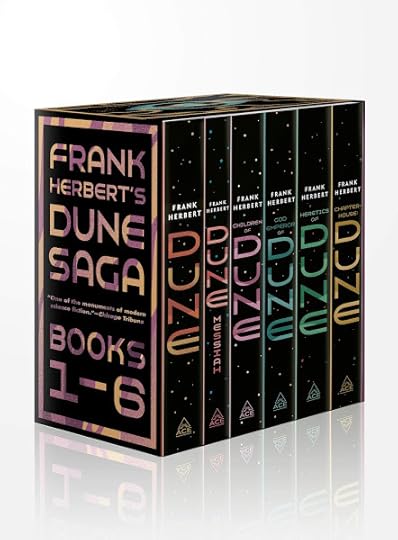 The Dune Saga (1965-1986)
The Dune Saga (1965-1986)
Published on December 11, 2021 12:59
December 6, 2021
Classic Ghost Story Writers: Wilkie Collins
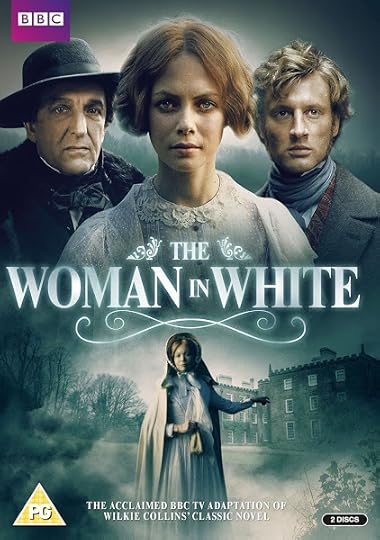 The Woman in White (1982)
The Woman in White (1982)Recently Bronwyn and I rewatched this old British miniseries from the 1980s - The Woman in White. I remember back in the day experiencing ever increasing anxiety and horror as poor Jenny Seagrove sank deeper and deeper into the clutches of the evil Count Fosco.
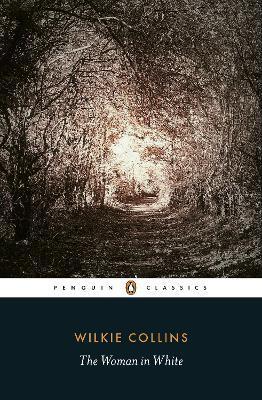 Wilkie Collins: The Woman in White (1860)
Wilkie Collins: The Woman in White (1860)Which makes it sound like a kind of comic melodrama, but anyone who's ever read the novel knows it to be anything but. The creepy, claustrophobic atmosphere of the story seems to come out of some profound depth of personal paranoia and depression. Some of this can be perhaps attributed to Wilkie Collins' habit of taking opium, which took an ever greater hold on him in the decades after this, his first great success.
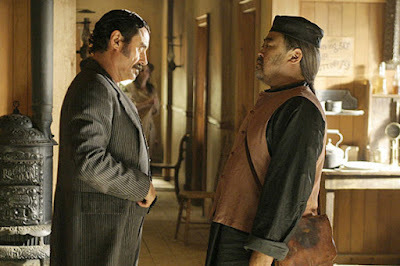 Deadwood, Series 1, episode 10: Mr. Swearengen & Mr. Wu (2004)
Deadwood, Series 1, episode 10: Mr. Swearengen & Mr. Wu (2004)But then, the nineteenth century was full of 'dope-fiends' (as Al Swearengen in Deadwood was wont to refer to them), and none of the others showed any signs of producing anything like The Woman in White ...
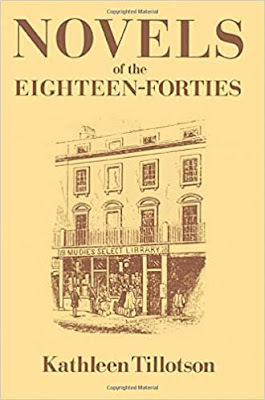 Kathleen Tillotson: Novels of the Eighteen-Forties (1954)
Kathleen Tillotson: Novels of the Eighteen-Forties (1954)Or did they? Kathleen Tillotson's fascinating book on the English novel of the 1840s points out a number of its distinctive features: a greater sexual frankness, in particular, than was possible later, as the Victorian era gradually became more and more morally bankrupt and intellectually stultifying.
Given that the four novels she chose to illustrate her thesis were Dickens' Dombey & Son (1848), Charlotte Brontë's Jane Eyre (1847), Elizabeth Gaskell's Mary Barton (1848) and Thackeray's Vanity Fair (1848), she might actually have called it "Novels of 1848", if it weren't for the fact that that would have sounded as if she meant to draw some parallel with the Year of Revolution.
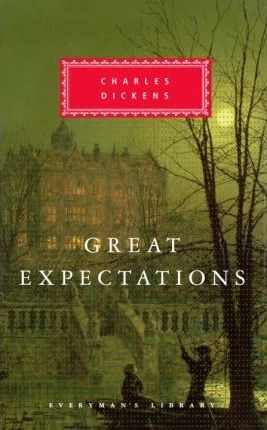 Charles Dickens: Great Expectations (1860)
Charles Dickens: Great Expectations (1860)What, then, of the novel of the 1860s - the decade dominated by Wilkie Collins and The Woman in White? If, like me, you have a taste for the intricate pathways of the disturbed mind, spiritualism and psychogeography, then this is certainly the period for you.
Dostoevsky did not begin to appear in English translation until the 1880s, so it would be difficult to draw close parallels with Crime and Punishment (1867) or his memoir of exile in Siberia, The House of the Dead (1862). Victor Hugo's Les Misérables (1862) certainly had a strong influence on the English writers of the 1860s, however.
But the fact remains that The Woman in White predated all this, so the craze for novels of mystery and the occult does have to be seen as a home-grown phenomenon - a reaction, perhaps, to the predominant social realism of the preceding decades.
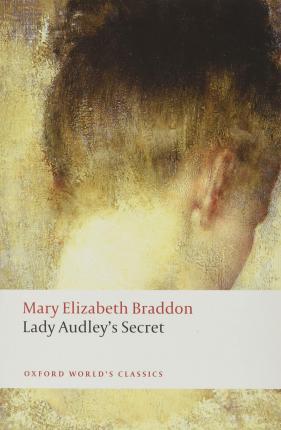 Mary Elizabeth Braddon: Lady Audley's Secret (1862)
Mary Elizabeth Braddon: Lady Audley's Secret (1862)Lady Audley's Secret was (in John Sutherland's words) "the most sensationally successful of all the sensation novels."
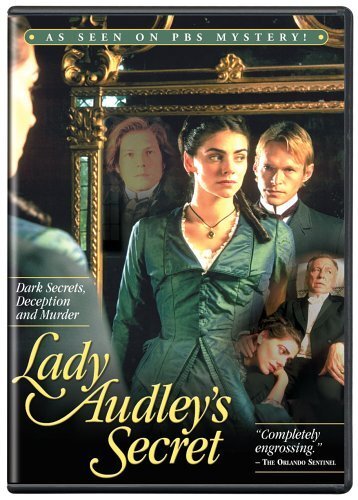 Lady Audley's Secret (2000)
Lady Audley's Secret (2000)Elaine Showalter accounts for at least some of its appeal when she summarises it as follows:
Braddon's bigamous heroine deserts her child, pushes husband number one down a well, thinks about poisoning husband number two and sets fire to a hotel in which her other male acquaintances are residing.
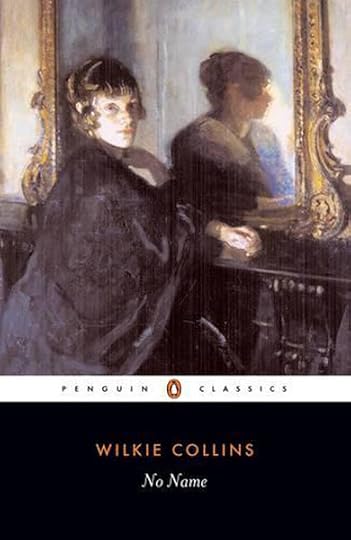 Wilkie Collins: (1862)
Wilkie Collins: (1862)The same anxieties about gender and the chafing constraints it imposes on individual freedom can be seen in Wilkie Collins' follow-up to the Woman in White. is an almost equally fascinating novel, which has unfortunately languished under the shadow of its supererogatory predecessor. Its heroine, Magdalen, while not quite as anarchic as Lady Audley, is just as determined to make her way in the world - in spite of the unfair obstacle of illegitimacy.
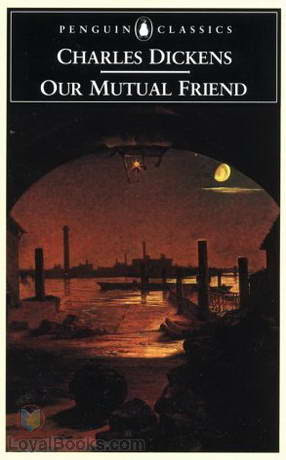 Charles Dickens: Our Mutual Friend (1864)
Charles Dickens: Our Mutual Friend (1864)By now Dickens, too, was affected by the trend. His last completed novel, Our Mutual Friend, is a strangely labyrinthine narrative full of doubles and dead men who won't lie down. It does include a love story - of a sort - but the nightmarish vision of a spectral London it concentrates on makes it, for most Dickensians, either their favourite or their least favourite among his works. I am, mind you, decidedly of the former persuasion.
Some of these 'sensationalist' tendencies were already apparent in its immediate predecessor Great Expectations - with its speaking tombstones and hideous convicts - the return of the repressed with a vengeance. Our Mutual Friend took him much further down the peculiar paths of the guilty conscience, however.
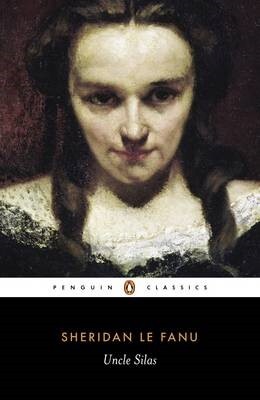 J. Sheridan Le Fanu: Uncle Silas (1864)
J. Sheridan Le Fanu: Uncle Silas (1864)There is a certain atmosphere of playacting, at times, even in the most bloodcurdling of these mystery novels. Those written by English writers, at any rate. The same could not be said of Sheridan Le Fanu's Uncle Silas. As in his ghost stories, Le Fanu shows every sign of believing what he writes, and of having a more intimate acquaintance with evil than any of his contemporaries.
Uncle Silas is grotesque, exaggerated, even burlesque at times, but it's not actually unbelievable. There's something only too credible about it all, since its author is clearly not joking. Killing a young girl for her inheritance is a standard melodramatic plot from way back, but if you did mean to do it, this might be how you might go about it. And, after all, it is something people do do - and did do - so it can't really be dismissed as a fantasy.
 Wilkie Collins: Armadale (1866)
Wilkie Collins: Armadale (1866)I suppose that Wilkie Collins must have felt the pressure of all this competition, because his next novel, Armadale, really pulls out the stops. I must confess that there were moments while reading it when I could hardly believe my eyes. Did he really just say that? Shipwrecks, doubles, hauntings - you name it, it's all there.
The fever of an opium dream is combined here with the precision of a forensic accountant. I think it's safe to say that there can be few weirder novels in the whole of English literature than Collins's Armadale.
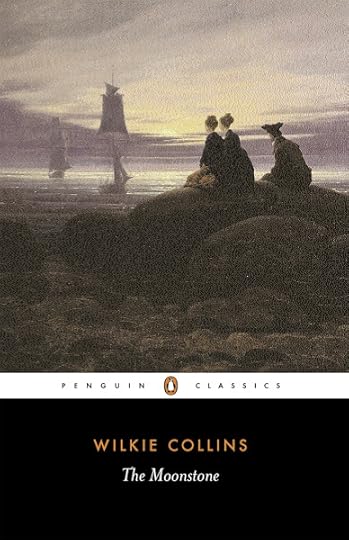 Wilkie Collins: The Moonstone (1868)
Wilkie Collins: The Moonstone (1868)But in the end, this was the one that scooped the pot. Long famed as the first English detective story, The Moonstone, too, has opium dreams, sinister orientals, lurking gypsies, damsels in distress, and all the usual trappings of a Wilkie Collins fantasia. The method of telling it through overlapping documents - while hackneyed enough - is deployed particularly effectively here.
I suppose, in the long run, it can't really be compared with the spectral complexities of The Woman in White, one of the great English novels, but it is understandable how many people still prefer The Moonstone to any of its predecessors.
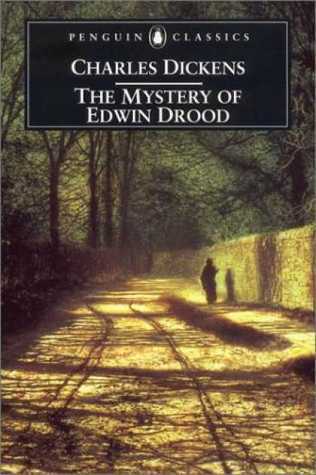 Charles Dickens: The Mystery of Edwin Drood (1870)
Charles Dickens: The Mystery of Edwin Drood (1870)And, since one has to end somewhere when discussing the sensation novel of the 1860s, where better than with Dickens' last, unfinished novel, The Mystery of Edwin Drood?
It can't really be judged as a novel, since only the opening portions survive, but they're enough to convince readers then and now that a radical readjustment both of style and subject matter was going on in their favourite author. From the opening scene in an opium parlour to the strange, haunted cathedral which dominates it, Edwin Drood reads more like a precursor of Kafka than a natural outgrowth of what had gone before in Dickens' work.
Unfortunately it proved difficult for Wilkie Collins to keep up these levels of intensity in his subsequent work. Many of his later novellas and short stories show just as much invention and skill as these long works of his maturity, but his novels began to suffer from the diffusion of concentration attendant on his longterm addiction.
Sheridan Le Fanu, too, having written a succession of strange masterpieces in the 1860s, fell off in his later work (except, again, in short stories such as the ones in his 1872 collection In A Glass Darkly). If you do want to go on from Uncle Silas, though, all three of the novels below can be strongly recommended: The House by the Churchyard. 1863. Introduction by Elizabeth Bowen. The Doughty Library. London: Anthony Blond, 1968.Wylder’s Hand. 1864. New York: Dover, 1978.Guy Deverell. 1865. New York: Dover, 1984.
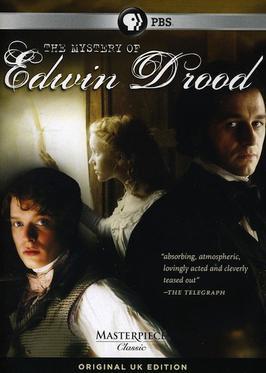 The Mystery of Edwin Drood (UK, 2012)
The Mystery of Edwin Drood (UK, 2012)•
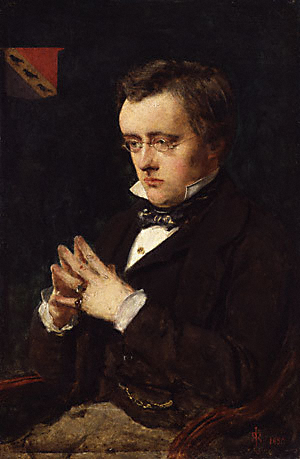 John Everett Millais: Wilkie Collins (1850)
John Everett Millais: Wilkie Collins (1850)William Wilkie Collins
(1824-1889)
Novels:
Iolani, or Tahiti as it was: A Romance. 1844 (1999)Antonina (1850)Basil (1852)Hide and Seek (1854)The Dead Secret (1856)A Rogue's Life (1856/1879)The Woman in White (1860)The Woman in White. 1860. Ed. John Sutherland. 1996. Oxford World's Classics. Oxford: Oxford University Press, 1998.The Woman in White. 1860. London: Thomas Nelson and Sons Ltd., n.d. No Name (1862)No Name. 1862. Ed. Mark Ford. 1994. Penguin Classics. Harmondsworth: Penguin, 2004. Armadale (1866)Armadale. 1864-66. New York: Dover Publications, Inc., 1977. The Moonstone (1868)The Moonstone. 1868. Introduction by Dorothy L. Sayers. Everyman’s Library, 979. London: J. M. Dent & Sons Ltd. / New York: E. P. Dutton & Co. Inc., 1944.The Moonstone. 1868. Afterword by T. S. Eliot. 1928. Ed. Sandra Kemp. 1998. Penguin English Library. London: Penguin, 2012. Man and Wife (1870)Poor Miss Finch (1872)Poor Miss Finch. 1872. Ed. Catherine Peters. Oxford World's Classics. 1995. Oxford: Oxford University Press, 2008. The New Magdalen (1873)The New Magdalen. 1873. Pocket Classics. 1993. Phoenix Mill, Thrupp, Stroud, Gloucestershire: Alan Sutton Publishing Limited, 1998. The Law and the Lady (1875)The Two Destinies (1876)The Fallen Leaves (1879)The Fallen Leaves. 1879. Pocket Classics. 1994. Phoenix Mill, Thrupp, Stroud, Gloucestershire: Alan Sutton Publishing Limited, 1997. Jezebel's Daughter [novelisation of Collins' play The Red Vial (1858)] (1880)The Black Robe (1881)Heart and Science (1883)I Say No (1884)'I Say No'. 1884. Pocket Classics. 1995. Phoenix Mill, Thrupp, Stroud, Gloucestershire: Alan Sutton Publishing Limited, 1998. The Evil Genius (1886)The Guilty River (1886)The Legacy of Cain (1889)[with Walter Besant] Blind Love (1890)
Short Stories:
Mr Wray's Cash Box. Or, the Mask and the Mystery. A Christmas sketch (1852)A Terribly Strange Bed (1852)Gabriel's Marriage (1853)The Ostler (1855)After Dark (1856)The Lady of Glenwith Grange (1856)[with Charles Dickens] The Wreck of the Golden Mary (1856)Dickens, Charles, & Wilkie Collins. The Wreck of the Golden Mary. 1856. Illustrated by John Dugan. Venture Library. London: Methuen & Co. Ltd., 1961. [with Charles Dickens, Elizabeth Gaskell & Adelaide Anne Procter] A House to Let (1858)[with Charles Dickens, Elizabeth Gaskell, Adelaide Anne Proctor, George Sala & Hesba Stretton] The Haunted House (1859)The Queen of Hearts (1859)Miss or Mrs? (1873)Miss or Mrs? 1873. Pocket Classics. 1993. Phoenix Mill, Thrupp, Stroud, Gloucestershire: Alan Sutton Publishing Limited, 1995. The Frozen Deep and Other Stories (1874)The Frozen DeepThe Frozen Deep. 1874. London: Hesperus Press Limited, 2012. The Dream WomanJohn Jago's Ghost; or The Dead Alive The Haunted Hotel (1878)My Lady's Money (1879)Who Killed Zebedee? (1881)The Ghost's Touch and Other Stories (1885)Little Novels (1887)The Queen's RevengeMad MonktonSights A-FootThe Stolen MaskThe Yellow MaskSister Rose [with Charles Dickens] The Lazy Tour of Two Idle Apprentices (1890)Tales of Terror and the Supernatural. Ed. Herbert van Thal. New York: Dover Publications, Inc., 1972.
Non-fiction:
Memoirs of the Life of William Collins, Esq., R.A. (1848)Rambles Beyond Railways, or, Notes in Cornwall taken a-foot. Illustrations by Henry C. Brandling (1851)My Miscellanies (1863)
Plays:
[with Charles Dickens] The Frozen Deep (1857)The Red Vial (1858)[with Charles Dickens] No Thoroughfare (1867)Black and White (18––)Miss Gwilt (18––)
Secondary:
Peters, Catherine. The King of Inventors: A Life of Wilkie Collins. 1991. Minerva. London: Mandarin Paperbacks, 1992.
•
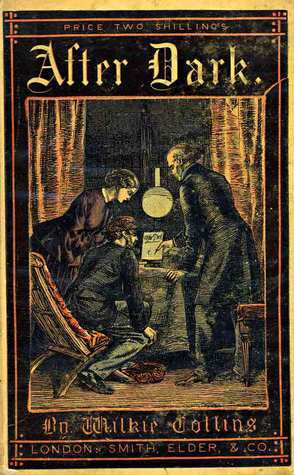 Wilkie Collins: After Dark (1856)
Wilkie Collins: After Dark (1856)
Published on December 06, 2021 18:37
November 16, 2021
SF Luminaries: John Wyndham
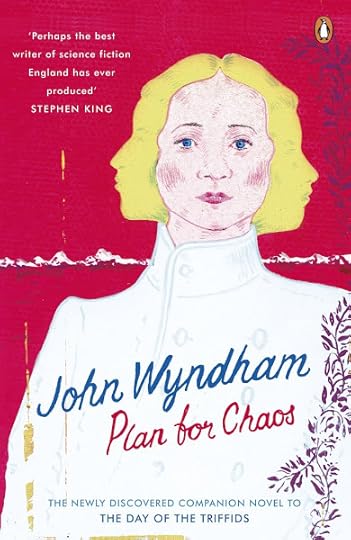
John Wyndham: Plan for Chaos (1951 / 2009)
Plan for Chaos is a very odd book. It's certainly not without interest. However, I think one can see why no publishers actually leapt at the chance of putting it out back in the early 1950s when veteran Sci-fi writer Frederik Pohl (then moonlighting as a literary agent for John Wyndham and various other clients) was shopping it around New York.
There's the Nazi angle. In that respect, it serves as a precursor to Philip K. Dick's alternative history classic The Man in the High Castle (1962), or - for that matter - M. K. Joseph's Tomorrow the World , written in the late 1970s but only published posthumously in 2020.
There's the evil clone angle. In some ways it's very like Ira Levin's The Boys from Brazil (1976), only this time with flying saucers thrown in: quite a novel plot-twist for 1951, given that the expression wasn't actually coined until 1947, as a result of Kenneth Arnold's claim that the objects he saw on June 24 of that year "moved like saucers skipping across the water."
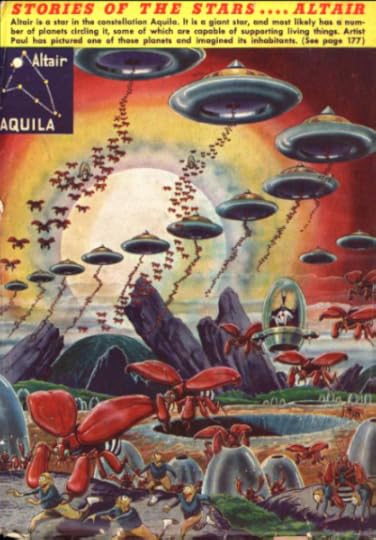
Amazing Stories (1946)
One can see so much in it, and yet it somehow doesn't quite work - it isn't visceral, actual, like his breakthrough title The Day of the Triffids (1951), or even its successor The Kraken Wakes (1953).
I'm not sure how much I need to say about them. I wrote a piece focussing on my early reading of The Day of the Triffids, in particular, in the introduction to my New Zealand Speculative Fiction website. I doubt that it's necessary to repeat all that here.
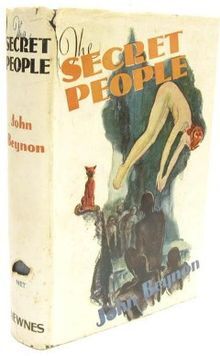
John Beynon: The Secret People (1935)
Nevertheless, having recently reread as much of his earlier work as I can easily access, it is facinating to see how many false starts one writer can have before settling into their mature style. There are flashes of Wyndham in all of the early novels, but the instinctively colonial attitudes displayed in both The Secret People (1935) and Planet Plane (1936) seem pretty repellent now.
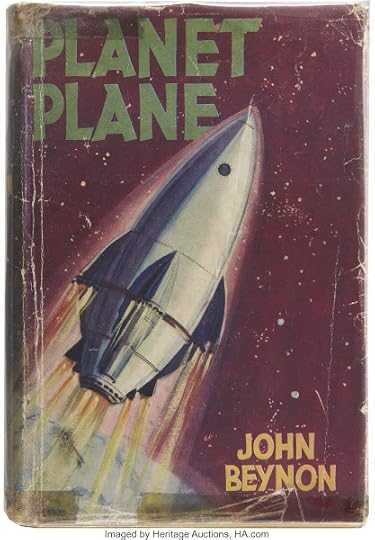
John Beynon: Planet Plane (1936)
The John Wyndham heroine - smart, stylish, witty - familiar from later books begins to make an appearance quite early on, which is really the main attraction of these pre-war pulp serials and short stories. For those curious about how he came to create this character in the first place, Amy Binns' recent biography provides a number of new insights.

Amy Binns: Hidden Wyndham: Life, Love, Letters (2019)
It's probably not much of an exaggeration to say that without her book, the so-called "invisible man of Science Fiction" would have remained a shadowy figure, accessible only through his witty prose and a set of curiously repetitive ideas. Fatherless children, wiser than their elders (Chocky, The Chrysalids, The Midwich Cuckoos); alien invasions of the British countryside ("The Puffball menace", The Day of the Triffids, Trouble with Lichen); the oppressive nature of conventional domesticity ("Dumb Martian," "Survival," "Compassion Circuit") ... Binns supplies vital information about Jack Harris's early life which make seem these far less unaccountable.
But literary talent is, of course, not readily reducible to any such set of causes. Why did it take him so long to break through? Why did he persevere in the face of such steady discouragement? Where did those Triffids really come from?

H. G. Wells: SF Masterworks Series
We'll never know. It is, however, safe to say that without H. G. Wells, there would have been no John Wyndham. So many of his ideas - not to mention the ease of his story telling - find their roots in the vast turbulent sea of Wells's oeuvre (particularly the early SF romances and short stories). But Wyndham is not Wells: he lacks his didactic bent, and has a healthy cynicism about the expression of great ideas. His appeal was to as much to the readers of Evelyn Waugh and P. G. Wodehouse as it was to hard-core Sci-fi fans.
I suppose that John Wyndham's real tragedy was that his success came so late, and that he died so young. But then, that's more our tragedy than his. There's no doubt that he had more to say, but the few books he did write remain classics of the genre. The fact that they're still in print after half a century rather speaks for itself.
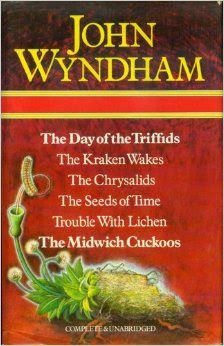
The John Wyndham Omnibus (1979)
A great deal of incidental information about him is available online at the John Wyndham Archive website. Beyond that, much though I would recommend Amy Binns's well-written and insightful biography, your first stopping-place should be the books themselves - from the Triffids onwards, at any rate. If you don't find them charming and absorbing at first sight, chances are he's not for you.
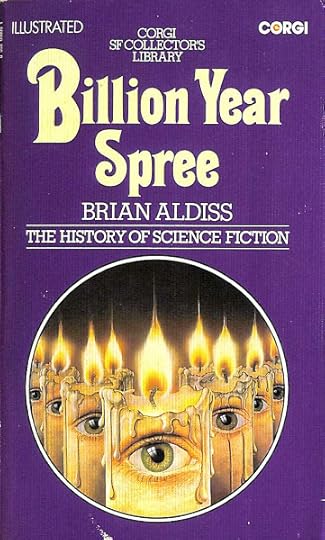
Brian AldissBillion Year Spree (1973)
In his 1973 history of the SF genre, Billion (later revised to 'Trillion') Year Spree, Brian Aldiss described John Wyndham's breakout books as ‘cosy catastrophes’:
Both novels [The Day of the Triffids and The Kraken Wakes] were totally devoid of ideas but read smoothly, and thus reached a maximum audience, who enjoyed cosy disasters. Either it was something to do with the collapse of the British Empire, or the back-to-nature movement, or a general feeling that industrialization had gone too far, or all three.Aldiss goes on to describe the characteristics of this ‘urbane and pleasing’ SF subgenre as follows:
The essence of cosy catastrophe is that the hero should have a pretty good time (a girl, free suites at the Savoy, automobiles for the taking) while everyone else is dying off … Such novels are anxiety fantasies. They shade off towards the greater immediacy of World War III novels, a specialist branch of catastrophe more usually practiced by American writers.He concludes with a rather premature epitaph on Wyndham and his ilk: ‘the race is not always to the swift, etc.’ Unfortunately, such dismissive judgements on a possible trade rival can cut both ways. Has Brian Aldiss himself fared much better?
Who (besides myself) now reads Non-stop (1958) or Hothouse (1962)? Who wades through The Malacia Tapestry or the Helliconia trilogy? Who remembers that one of Stanley Kubrick’s last film projects was an adaptation of Aldiss’s short story ‘Super-Toys Last All Season Long,’ which he delegated instead to Steven Spielberg, who turned it into the flawed, though not uninteresting, A.I.?
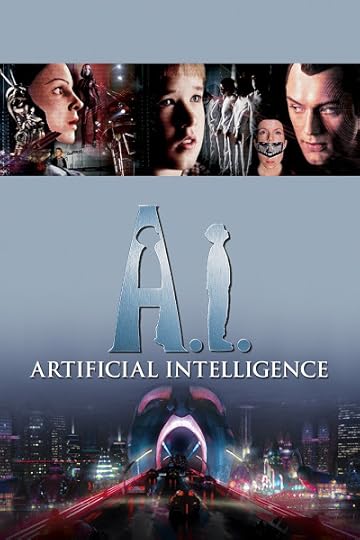
Steven Spielberg, dir.: A.I.: Artificial Intelligence (2001)
John Wyndham, by contrast, continues to be read. It seems safe to say now that he probably always will be. Aldiss's rather self-conscious attempts to be mod and up-to-the-minute sound even more uncomfortably dated now than what he saw as Wyndham's perverse determination to write "a kind of country-house science fiction."
And, as Hilaire Belloc once put it, speaking (perhaps) for all such writers who pop in and out of fashion with the passing years:
When I am dead, I hope it may be said:
"His sins were scarlet, but his books were read."
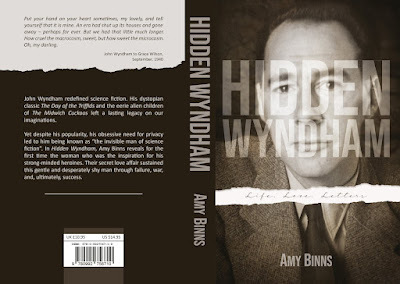
Amy Binns: Hidden Wyndham: Life, Love, Letters (2019)
•
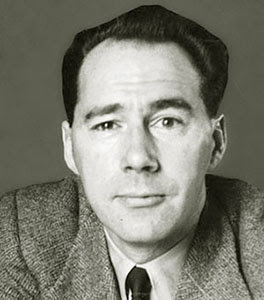
John Wyndham (1903-1969)
John Wyndham Parkes Lucas Beynon Harris
(1903-1969)
[His work appeared under a variety of pseudonyms, mostly constructed from his various initials: John Beynon, John Beynon Harris, John B. Harris, Johnson Harris, J. W. B. Harris, Lucas Parkes, Wyndham Parkes, & John Wyndham among them]
Novels:
[as 'John B. Harris']: The Curse of the Burdens. Aldine Mystery Novels No. 17 (London: Aldine Publishing Co. Ltd. 1927)
[as 'John Beynon']: The Secret People (1935)The Secret People. 1935. Coronet Books. London: Hodder Paperbacks Ltd., 1972.
Foul Play Suspected (London: Newnes, 1935)
Planet Plane [aka 'The Space Machine'] (1936)Stowaway to Mars. 1935. Coronet Books. 1972. London: Hodder Paperbacks Ltd., 1977.
[as 'John Wyndham']: The Day of the Triffids [aka 'Revolt of the Triffids']. 1951. Harmondsworth: Penguin, 1954.
The Kraken Wakes [aka 'Out of the Deeps']. 1953. Harmondsworth: Penguin, 1975.
The Chrysalids [aka 'Re-Birth']. 1955. Harmondsworth: Penguin, 1974.
The Midwich Cuckoos. 1957. Harmondsworth: Penguin, 1960.
Trouble with Lichen. 1960. Harmondsworth: Penguin, 1963.
Chocky. 1968. Harmondsworth: Penguin, 1970.
Web. 1979. Harmondsworth: Penguin, 1980.
Plan for Chaos. Ed. David Ketterer & Andy Sawyer. 2009. Introduction by Christopher Priest. London: Penguin, 2010.
Short Story Collections:
Jizzle. 1954. Four Square. London: New English Library, 1973.JizzleTechnical SlipA Present from BrunswickChinese PuzzleEsmeraldaHow Do I Do?UnaAffair of the HeartConfidence TrickThe WheelLook Natural, Please!Perforce to DreamReservation DeferredHeaven ScentMore Spinned Against
The Seeds of Time. 1956. Harmondsworth: Penguin, 1972.Foreword by John WyndhamChronoclasmTime To RestMeteorSurvivalPawley's PeepholesOpposite NumberPillar To PostDumb MartianCompassion CircuitWild Flower
Tales of Gooseflesh and Laughter [US selection from 'Jizzle' and 'The Seeds of Time'] (1956)Chinese PuzzleUnaThe WheelJizzleHeaven ScentCompassion CircuitMore Spinned AgainstA Present from BrunswickConfidence TrickOpposite NumbersWild Flower
[with 'Lucas Parkes']: The Outward Urge. 1959 & 1961. Harmondsworth: Penguin, 1962.The Space Station A.D. 1994 [aka 'For All the Night'] (1958)The Moon A.D. 2044 [aka 'Idiot’s Delight'] (1958)Mars A.D. 2094 [aka 'The Thin Gnat-Voices'] (1958)Venus A.D. 2144 [aka 'Space Is a Province of Brazil'] (1958)The Asteroids A.D. 2194 [aka 'The Emptiness of Space'] (1960)
Consider Her Ways and Others. 1961. Harmondsworth: Penguin, 1971.Consider Her WaysOddStitch in TimeOh Where, Now, is Peggy MacRafferty?Random QuestA Long Spoon
The Infinite Moment [US edition of 'Consider Her Ways and Others', with two stories replaced] (1961)Consider Her WaysOddHow Do I DoStitch In TimeRandom QuestTime Out
The Best of John Wyndham. London: Sphere Books Ltd., 1973.The Lost Machine (1932)The Man from Beyond (1934)The Perfect Creature (1937)The Trojan Beam (1939)Vengeance by Proxy (1940)Adaptation (1949)Pawley's Peepholes (1951)The Red Stuff (1951)And the Walls Came Tumbling Down (1951)Dumb Martian (1952)Close Behind Him (1952)The Emptiness of Space (1960)
[as ‘John Beynon’]: Sleepers of Mars. Introduction by Walter Gillings. Coronet Books. 1973. London: Hodder Paperbacks Ltd., 1973.The Fate of the Martians, by Walter GillingsSleepers of Mars (1939)Worlds to Barter (1931)Invisible Monster (1933)The Man from Earth (1934)The Third Vibrator (1933)
[as ‘John Beynon Harris’]: Wanderers of Time. Introduction by Walter Gillings. Coronet Books. 1973. London: Hodder Paperbacks Ltd., 1974.Before the Triffids, by Walter GillingsWanderers of Time [aka 'Love in Time'] (1933)Derelict of Space (1939)Child of Power (1939)The Last Lunarians (1934)The Puff-Ball Menace [aka 'Spheres of Hell'] (1933)
[as ‘John Beynon’]: Exiles on Asperus. Coronet Books. 1979. London: Hodder Paperbacks Ltd., 1980.Exiles on Asperus (1933)No Place Like Earth (1951)The Venus Adventure (1932)
No Place Like Earth [Some stories previously published in 'Jizzle', 'The Seeds of Time', 'Consider Her Ways and Others', Wanderers of Time ' and ' Exiles on Asperus '] (2003) Derelict of Space Time to Rest No Place Like Earth In Outer Space There Shone a StarBut a Kind of a GhostThe Cathedral CryptA Life PostponedTechnical SlipUnaIt's a Wise ChildPillar to PostThe StareTime Stops TodayThe MeddlerBlackmoilA Long Spoon
Short stories:
[Included in Jizzle (1954); The Seeds of Time (1956);
Consider Her Ways and Others / The Infinite Moment {CW / IM} (1961);
Sleepers of Mars / Wanderers of Time / Exiles on Asperus {SM / WT / EA} (1973, 1974, 1979);
The Best of John Wyndham / No Place Like Earth {Best / NPE} (1973, 2003)]
Worlds to Barter {SM} (1931) The Lost Machine {Best} (1932) The Stare {NPE} (1932) The Venus Adventure {EA} (1932) Exiles on Asperus {EA} (1933) Invisible Monster {SM} (1933) The Puff-Ball Menace {WT} [aka 'Spheres of Hell'] (1933) The Third Vibrator {SM} (1933) Wanderers of Time {WT} [aka 'Love in Time'] (1933) The Man from Earth {SM} [aka 'The Man from Beyond' {Best}] (1934) The Last Lunarians {WT} [aka 'The Moon Devils'] (1934) The Cathedral Crypt {NPE} (1935) The Perfect Creature {Best} (1937)Judson's Annihilator [aka 'Beyond the Screen'] (1938) Sleepers of Mars {SM} (1938) Child of Power {WT} (1939) Derelict of Space {WT} {NPE} (1939) The Trojan Beam {Best} (1939) Vengeance by Proxy {Best} (1940)Meteor (1941)The Living Lies (1946)Technical Slip {NPE} (1949)Jizzle (1949) Adaptation {Best} (1949)Time to Rest {NPE} (1949)The Eternal Eve (1950)Pawley's Peepholes {Best} (1951) The Red Stuff {Best} (1951) No Place Like Earth {EA} {NPE} [aka 'Tyrant and Slave-Girl on Planet Venus'] (1951) And the Walls Came Tumbling Down {Best} (1951)A Present from Brunswick [aka 'Bargain from Brunswick'] (1951)Pillar to Post {NPE} (1951)The Wheel (1952)Survival (1952)Dumb Martian {Best} (1952)Time Out {IM} (1953) Close Behind Him {Best} (1953) Time Stops Today {NPE} (1953)Chinese Puzzle [aka 'A Stray from Cathay'] (1953)Chronoclasm (1953)Reservation Deferred (1953)More Spinned Against (1953)Confidence Trick (1953)How Do I Do? {IM} (1953)Affair of the Heart (1954)Esmeralda (1954)Heaven Scent (1954)Look Natural, Please! (1954)Never on Mars (1954)Perforce to Dream (1954)Una {NPE} (1954)Opposite Number (1954)Compassion Circuit (1954)Wild Flower (1955)Consider Her Ways {CW / IM} (1956) But a Kind of Ghost {NPE} (1957) The Meddler {NPE} (1958)For All the Night [aka 'The Space Station A.D. 1994' - from The Outward Urge] (1958)Idiot’s Delight [aka 'The Moon A.D. 2044' - from The Outward Urge] (1958)The Thin Gnat-Voices [aka 'Mars A.D. 2094' - from The Outward Urge] (1958)Space Is a Province of Brazil [aka 'Venus A.D. 2144' - from The Outward Urge] (1958)A Long Spoon {CW} {NPE} (1960) The Emptiness of Space [aka 'The Asteroids A.D. 2194' - from The Outward Urge] {Best} (1960)Odd {CW / IM} (1961)Oh, Where, Now, Is Peggy MacRafferty? {CW} (1961)Random Quest {CW / IM} (1961)Stitch in Time {CW / IM} (1961) It's a Wise Child {NPE} (1962)Chocky (1963) In Outer Space There Shone a Star {NPE} (1965) A Life Postponed {NPE} (1968)'Phase Two': Excerpt (1973)Vivisection (2000) Blackmoil {NPE} (2003)
Secondary:
Amy Binns. Hidden Wyndham: Life, Love, Letters. London: Grace Judson Press, 2019.
•
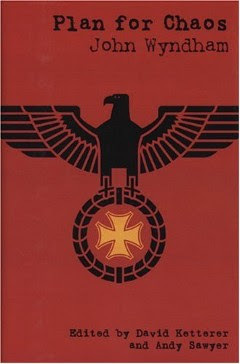
John Wyndham: Plan for Chaos (2009)
Published on November 16, 2021 12:50
October 27, 2021
Levi the Memorious: A Survivor's Tale
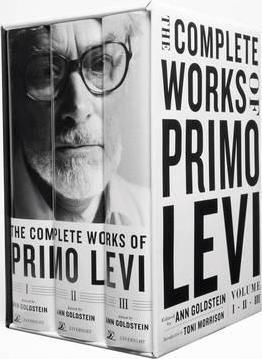
The Complete Works of Primo Levi (2015)
I think that the first time I actually read anything by Primo Levi was around the turn of the millennium, when a colleague of mine extracted a chapter from If This is a Man for inclusion in an anthology of readings for our then-new "Life Writing" course.
I knew the name, of course, and had seen The Periodic Table and other books of his displayed on many bookshelves. I don't know quite why I hadn't opened any of them up till then.
Fear, I suppose - fear of the horrors they might contain. I'd read a number of books and watched a great many documentaries about the Holocaust by then, and it was getting harder to persuade myself to endure all that again each time - shameful though that undoubtedly sounds.
I still remember my shock at reaching the last line of Levi's chapter 13: "October 1944":
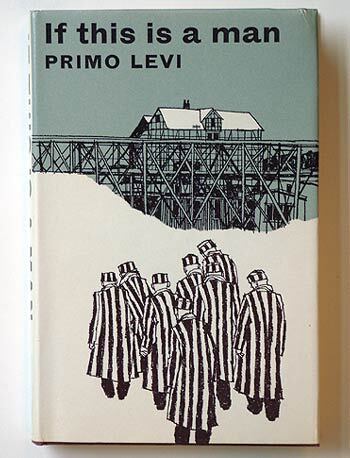
Primo Levi: If This is a Man (1947)
Silence slowly prevails and then, from my bunk on the top row, I see and hear old Kuhn praying aloud, with his beret on his head, swaying backwards and forwards violently. Kuhn is thanking God because he has not been chosen.Everything else in the chapter - in the book, even - is described so calmly and dispassionately, that the last line explodes like a bomb.
Kuhn is out of his senses. Does he not see Beppo the Greek in the bunk next to him, Beppo who is twenty years old and is going to the gas-chamber the day after tomorrow and knows it and lies there looking fixedly at the light without saying anything and without even thinking anymore? Can Kuhn fail to realize that next time it will be his turn? Does Kuhn not understand that what has happened today is an abomination, which no propitiatory prayer, no pardon, no expiation by the guilty, which nothing at all in the power of man can ever clean again?
If I was God, I would spit at Kuhn’s prayer.
You begin to get some idea of the sheer pressure of need for expression of the events and sights in his book. It's not a masterpiece because of the scenes it depicts. Nor is it a masterpiece in spite of the author's closeness to his material. No, it's a masterpiece because of what it is: the organic expression by an exceptionally alert intelligence of a series of horrors almost beyond communication.
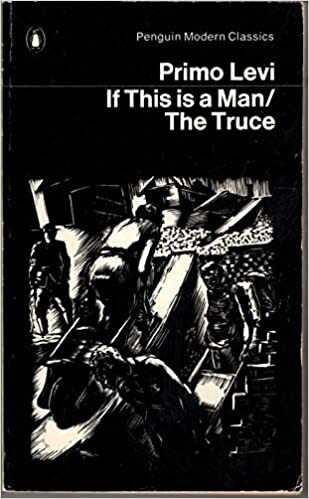
Primo Levi: If This is a Man / The Truce (1947 / 1963)
After that I began to collect Levi's books - in a rather desultory way. I guess I thought that since nothing could possibly top the white-hot intensity of If This is a Man, his other works must be some kind of comedown just in the nature of things ...
The Truce was very good also, though: completely different from his first book about the concentration camp, but equally absorbing.
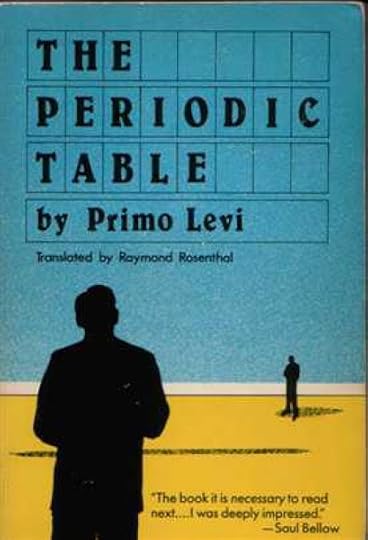
Primo Levi: The Periodic Table (1975)
On top of that, The Periodic Table and The Wrench both do a great job of communicating the absorbing interest of the world of work to dedicated professionals: chemists and construction workers, respectively.
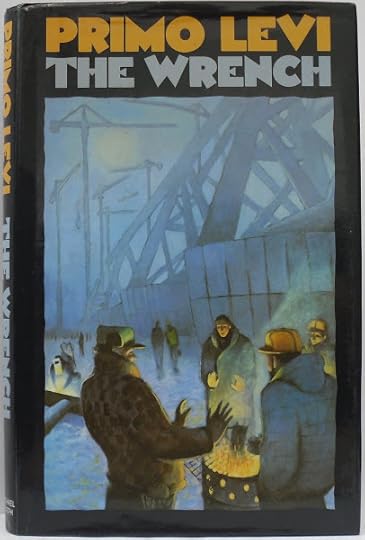
Primo Levi: The Wrench (1978)
So it did come as a bit of a shock to me to realise that I'd somehow missed any announcement of the sumptuous, three-volume edition of his Complete Works in English pictured at the head of this post.
And even more of a shock when, before ordering it, I checked out some of the online reviews. Here's William Deresiewicz in The Atlantic Monthly (December 2015):
Three volumes, 3,000 pages: The Complete Works of Primo Levi, in its very girth and exhaustiveness, asserts a claim about the man whose oeuvre it collects. Best known for his Holocaust memoir, If This Is a Man, as well as for The Periodic Table — a book about his life in, with, and through chemistry — Levi should be seen, as the collection’s publicity material puts it, as “one of the twentieth century’s greatest writers.” Novels, stories, poems, essays, science writing, science fiction, newspaper columns, articles, open letters, book reviews: His every word is worth preserving, translating, purchasing, pondering. To read them all together, the collection insists, is to see the man anew.$100? Try $US30.49! One of the reasons I was so quick to order the book was that I couldn't believe how cheap it was. Reviews such as the one above must have been pretty effective in killing any appetite for this edition, swollen - as Deresiewicz alleges it is - 'with masses of ephemera'.
I say this with reluctance — The Complete Works, which was 15 years in the making, is clearly a labor of love, meticulously edited by Ann Goldstein and seamlessly carried over from Italian, in fresh renditions, by a team of 10 translators — but the claim, on the volumes’ own evidence, is manifestly false. Levi is a great writer. He is a vivid writer, an unflinching writer, an indispensable writer. But he is also a limited writer, both in talents and in range. It does no favors, to the reader or to him, to try to rank him with the likes of Joyce, Proust, Kafka, and Beckett. His achievement, in his work about the Holocaust and its aftermath — If This Is a Man, The Truce, and The Drowned and the Saved, as well as parts of Lilith and The Periodic Table — is significant enough. Surrounding that achievement with masses of ephemera only obscures it. A selected works, at half the length for half the price (The Complete Works lists for $100), would have served him better.
Not all the reviews were in this vein, mind you. Here's a nice, rather more subtly reasoned one by Robert S. C. Gordon from the website Public Books (15 January 2016):
This unity-in-variety is the Ariadne’s thread that helps lead a way through the labyrinth of Levi’s complete oeuvre. Not all his readers will be willing to follow the thread along all its meanderings; indeed, responses to the Complete Works have already divided somewhat between those willing to listen to the modulated, lighter, more elfin tones in some corners of this volume and those who, perhaps understandably, prefer to split the work into his greater and lesser achievements and pass over his forays into occasional writing, science-fantasy, zoomorphic poetry, and the rest.To sum up, then, let's complete our hat-trick with Michael Dirda in the Washington Post (23/9/15):
The thread is worth following, however. The harmonies and dissonances between the modes of Levi’s work are, to a significant degree, what make him such a distinctive, subtle, and compelling ethical writer, one who ponders how to live in the face of both the extraordinary and the everyday, not through abstractions but through fragments of stories and vignettes of sentient experience and intelligent invention.
The Complete Works facilitates the task by restoring the chronology of publication of Levi’s books.
For such a gift as The Complete Works of Primo Levi, one should probably do little more than express thanks. The captious, however, might complain that Levi’s autobiographical writings are somewhat repetitive, his essays a bit dry and his fantasy fiction rather labored. Still, these are just cavils. Whether as witness or imaginative artist, Levi stands high among the truly essential European writers of the past century.With friends like that, who needs enemies? "Repetitive ... dry ... laboured" - these are not bookselling adjectives. Nor is Robert Gordon's mention of the "lighter, more elfin tones" of some of his more fanciful stories particularly enticing.
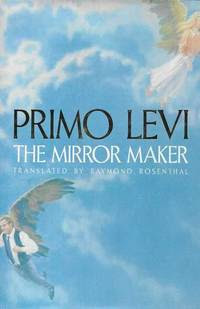
Primo Levi: The Mirror Maker (1989)
Is it true? Or rather, is there truth in it? I fear so. They're not just making it up out of whole cloth. It isn't all part of an anti-Levi conspiracy. Some of his slighter stories - and there are a great many of them - are a bit ephemeral. Nor does much of his "science-fantasy" reach the dizzying heights of fellow survivor of the Nazis Stanisław Lem.
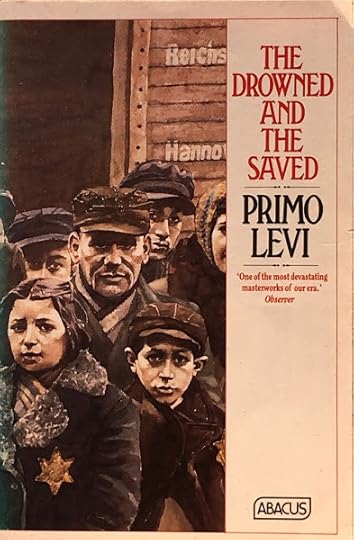
Primo Levi: The Drowned and the Saved (1986)
It's tempting just to leave the matter there - to conclude that Levi is a writer whose primary value lies in his autobiographical testimony as an Auschwitz survivor, and that the rest is simply window-dressing. Tempting, yes, but fundamentally wrong. The story is much more complex than that.
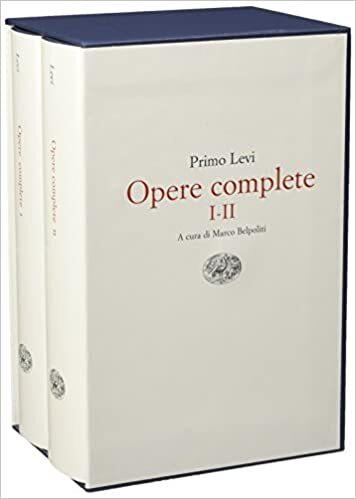
Primo Levi: Opere Complete (2017)
In 1997, ten years after Levi's death, Marco Belpoliti assembled a two-volume edition of Levi's Complete Works in Italian. This gave readers everywhere a good overview of the basic canon of his works, including scattered articles, poems, and other uncollected pieces.
Opere Complete. Ed. Marco Belpoliti in collaboration with Centro Internazionale di Studi Primo Levi. Introduction by Daniele Del Giudice. 2 vols. 1997. Nuova Universale Einaudi. Torino: Einaudi, 2017.Vol. I:Se questo è un uomo ('If This is a Man', 1947)Se questo è un uomo (1958) e appendiceLa tregua ('The Truce', 1963)Storie Naturali ('Natural Histories', 1966)Vizio di forma ('Flaw of Form', 1971)Il sistema periodico ('The Periodic Table', 1975)La chiave a stella ('The Star Wrench', 1978)Appendice [Appendices]Note ai testi [Notes on the text]Vol. II:La ricerca delle radici ('The Search for Roots', 1981)Lilít e altri racconti ('Lilith and Other Stories', 1981)Se non ora, quando? ('If Not Now, When?', 1982)Ad ora incerta ('At an Uncertain Hour', 1984)Altre poesie ('Other Poems', 1984)L'altrui mestiere ('Other People's Trades', 1985)Racconti e saggi ('Stories and Essays', 1986)I sommersi e i salvati ('The Drowned and the Saved', 1986)Pagine sparse ('Scattered Pages', 1947-1987)Appendice alle pagine sparse [Appendices to the scattered pages]Note ai testi [Notes on the Text]

Ann Goldstein (1949- )
It also inspired American editor Ann Goldstein, more famous as the translator of Elena Ferrante's bestselling Neapolitan Novels, to attempt a more-or-less complete English version of Primo Levi. As Wikipedia puts it:
The effort of obtaining translation rights took six years, while its compilation and translation took seventeen years ... Goldstein oversaw the team of nine translators and translated three of Levi's books.
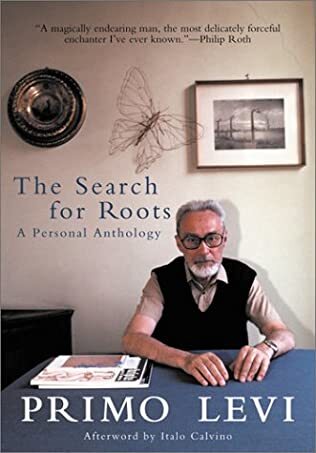
Primo Levi: The Search for Roots: A Personal Anthology (1981)
The one significant absence from the English edition is the anthology above, which is included in the Italian version. This does make a certain amount of sense. A number of the passages chosen by Levi were originally written in English and other languages, and in cases where the Italian translations diverge from their originals - as they often do - it's a difficult decision whether to correct or simply transcribe the results.
The book is, in any case, already available in a 2001 translation by Peter Forbes.
Which brings us to the question of whether all of these new translations are actually improvements on the original English versions? You'll recall that passage I quoted above, from the end of Chapter 13 of Levi's If This is a Man in Stuart Woolf's 1960 translation? Here it is again in the new 2015 edition:
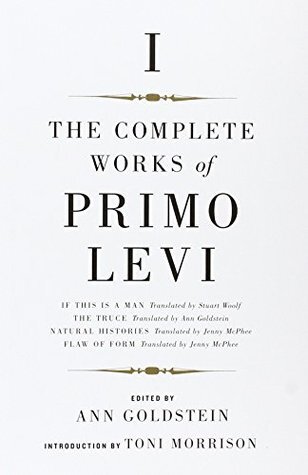 Primo Levi: Complete Works: I (2015): 123-24.
Primo Levi: Complete Works: I (2015): 123-24.Silence slowly prevails and then, from my bunk, on the top level, I see and hear old Kuhn praying aloud, with his cap on his head, his torso swaying violently. Kuhn is thanking God that he was not chosen.There are a lot of small changes here. Kuhn's beret has become a 'cap'; he thanks God that he was not chosen, rather than thanking him because he has not been chosen; he's out of his mind rather than out of his senses; a number of phrases have been shifted around, greatly increasing the number of commas. All these are fairly standard consequences of revisiting a piece of your own prose.
Kuhn is out of his mind. Does he not see, in the bunk next to him, Beppo the Greek, who is twenty years old and is going to the gas chamber the day after tomorrow, and knows it, and lies there staring at the light without saying anything and without even thinking anymore? Does Kuhn not know that next time it will be his turn? Does Kuhn not understand that what has happened today is an abomination, which no propitiatory prayer, no pardon, no expiation by the guilty - nothing at all in the power of man to do - can ever heal?
If I were God, I would spit Kuhn's prayer out upon the ground.
What I did not expect, however, was that change in the last sentence of the chapter. That is significant. This is how it read in 1960:
If I was God, I would spit at Kuhn’s prayer.And this is how it reads in 2015:
If I were God, I would spit Kuhn's prayer out upon the ground.Ten cutting, powerful words have become 13, with a subjunctive added and some extraneous 'ground' to spit on, as well ... But then, how does the sentence read in the original Italian?
A literal translation of that would be: "If I were God, I would spit to earth the prayer of Kuhn."
Se io fossi Dio, sputerei a terra la preghiera di Kuhn.
So, much though I personally prefer the first version of Woolf's translation of this sentence, I'm forced to agree that his revised take on it is far closer to what Levi actually wrote.
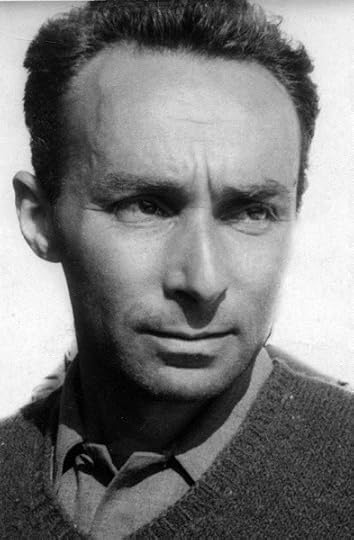
Primo Levi (1940s)
On the minus side, then, Stuart Woolf is not necessarily a better stylist after fifty years of brooding on the book than he was in his first flush of enthusiasm. On the plus side, though, he has contributed a fascinating afterword to this new edition in which he reveals just how closely he worked with Levi while preparing that original version.
He also explains that the book's long history of revisions and reprintings has necessitated a number of changes simply to keep up with its author's latest intentions. He is, after all, the only one of the original translators of Levi's works to have been asked to re-vision his work for the new edition. It's hard to imagine anyone else having Levi's work so close to his heart.
So, yes, many analogous quibbles could be made about these new translations of Levi's principal works. Many of them are significantly less idiomatic and more pedantic in tone: careful to preserve the original italian idioms and wordplay even when this has the effect of interrupting the narrative or the train of thought.
But that's what comes of declaring him a 'classic'. All of a sudden the tiniest details seem more significant - it's not just a matter of a temporary publishing boom, but rather of providing reliable details for readers and scholars now and in the future.
Something has been lost, but more - I would say - has been gained in the process. After all, those older editions are still in existence. They haven't been superseded by the new super-edition. Speaking personally, though, I think this new Complete Works will be the mainstay of my own Levi reading from now on.
•
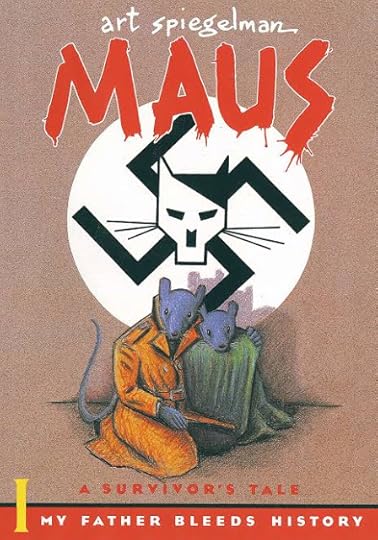
Art Spiegelman: Maus (1980-1991)
The title of this blogpost was meant as a kind of double-barrelled pun. On the one hand it references cartoonist Art Spiegelman's celebrated graphic novel Maus: A Survivor's Tale , which first appeared, piecemeal, chapter by chapter, in Raw magazine , the comics journal he co-founded with his wife Françoise Mouly, and which was subsequently collected in two volumes: 'My Father Bleeds History' (1986), 'And Here My Troubles Began' (1991).
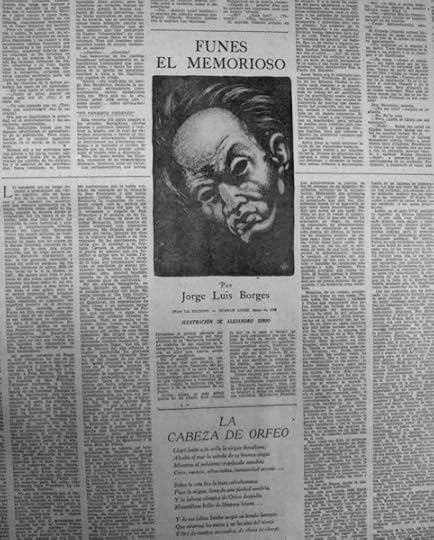
Jorge Luis Borges: Funes el memorioso (1942)
However, it also makes a nod towards Jorge Luis Borges' great story 'Funes the Memorious', which records the strange fate of one Ireneo Funes, who hits his head in a fall from his horse, and is thereafter cursed to remember absolutely everything which has ever happened to him. He dies shortly afterwards, but first spends a long night describing his plight to the narrator, a somewhat stylised version of Borges himself.
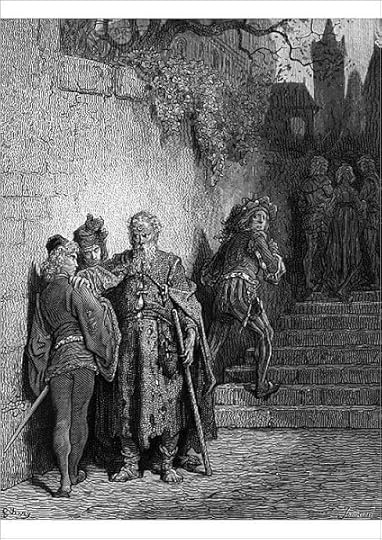
Gustave Doré: The Rime of the Ancient Mariner (1875)
Like Funes, Levi was forced to remember. He had no choice in the matter. And, like Coleridge's Ancient Mariner - a comparison he made himself more than once: in fact it supplied the title for his 1984 book of poems Ad Ora Incerta ['At an uncertain hour'] - he had 'strange power of speech,' as well as a compulsion to seek out listeners.
Since then, at an uncertain hour,Reading this new edition of Primo Levi puts us in the almost unique position of watching a man not bred to the trade in the process of learning how to write. There are the inevitable stumbles and false starts as he moves from the white-hot assurance of his first memoir into the stories and essays which gradually became the mainstay of his life as a modern 'man of letters.'
That agony returns:
And till my ghastly tale is told,
This heart within me burns.
I pass, like night, from land to land;
I have strange power of speech;
That moment that his face I see,
I know the man that must hear me:
To him my tale I teach.
Those two first volumes of stories, Natural Histories and Flaw of Form, are particularly telling in this respect. The stories are, at times, quite painfully bad - but each one teaches their author something, and gradually they begin to improve. They all have something, some germ of a complex and interesting idea, but it takes some time for him to reach the more sustained accomplishment of a book such as Lilith and Other Stories.
This is a development almost entirely obscured until now by the piecemeal appearance of his fiction in English translation. Four volumes of miscellaneous stories and essays in Italian became a bewildering labyrinth of partial English reprints, translated at different times by very different people. For this alone we should be grateful to the new edition.
Finally, then, I'd have to say that in a case like this I certainly believe that more is better. Would 'a selected works, at half the length for half the price' really 'have served him better', as William Deresiewicz claims in his review above? It might have made Levi seem more of a careful stylist, but I'm not sure that it would have done justice to the more complex and exacting details of his literary legacy.
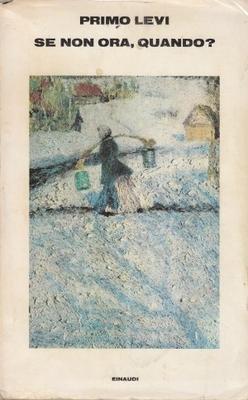
Primo Levi: If Not Now, When? (1982)
In my case, for instance, having read in Carole Angier's 2002 biography of the lukewarm reception of Levi's one full-length novel, If Not Now, When?, I never even felt tempted to read it until running into here, in volume 2 of this chronologically arranged edition.
But that would have been a great loss, because it's a wonderfully nuanced and accomplished piece of work. Clearly it was not to the taste of many readers in 1982, who were expecting a repeat of If This is a Man, but that's probably because it's composed more in the style of one of the great classics of European realism.
It echoes Tolstoy's Sebastopol Tales, or Väinö Linna's Finnish war novel The Unknown Soldier - even Jaroslav Hašek's Good Soldier Švejk - far more than the standard-issue Holocaust book that was expected of him. Levi had, in any case, made it clear that he considered the camps an inappropriate subject for fiction. No Boy in the Striped Pyjamas or Life is Beautiful for him.
In any case, readers will now be able to decide any and all such matters for themselves, without the no doubt well-intentioned Bowdlerising tendencies of critics such as Deresiewicz.
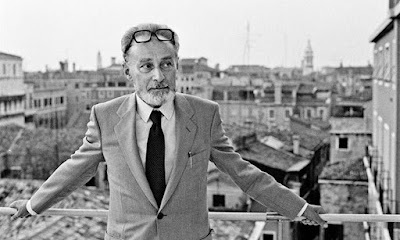
Primo Levi (1980s)
•
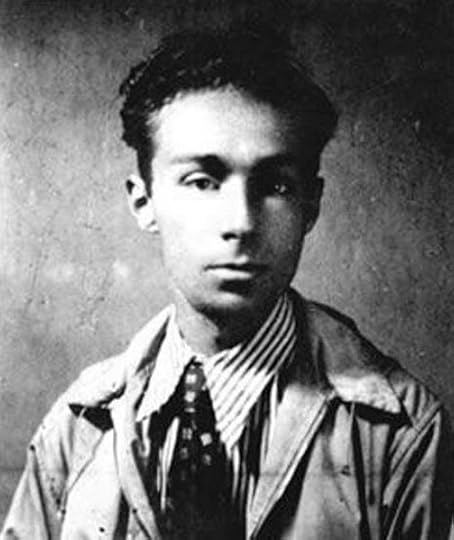 Primo Levi (1930s)
Primo Levi (1930s)Primo Michele Levi
(1919-1987)
If This Is a Man / The Truce. [‘Se questo è un uomo’, 1947/58 / ‘La tregua’ 1963]. Trans. Stuart Woolf. 1960 & 1965. Introduction by Paul Bailey. 1971. Penguin Modern Classics. Harmondsworth: Penguin, 1979.
The Periodic Table. [‘Il sistema periodico’, 1975]. Trans. Raymond Rosenthal. 1984. Essay by Philip Roth. Penguin Classics. Harmondsworth: Penguin, 2000.
If Not Now, When? [‘Se non ora, quando?’, 1982]. Trans. William Weaver. 1985. An Abacus Book. London: Little, Brown and Company (UK) Limited, 1992.
The Wrench. [‘La chiave a stella’, 1978]. Trans. William Weaver. 1986. London: Michael Joseph Ltd., 1987.
Moments of Reprieve. [‘Lilìt e altri racconti’, 1981]. Trans. Ruth Feldman. 1986. Introduction by Michael Ignatieff. Penguin Classics. Harmondsworth: Penguin, 2002.
Other People’s Trades. [‘L'altrui mestiere’, 1985]. Trans. Raymond Rosenthal. 1986. London: Michael Joseph Ltd., 1989.
The Drowned and the Saved. [‘I sommersi e i salvati’, 1986]. Trans. Raymond Rosenthal. 1986. Introduction by Paul Bailey. London: Michael Joseph Ltd., 1988.
Collected Poems. [‘L'osteria di Brema’, 1975 / ‘Ad ora incerta’, 1984]. Trans. Ruth Feldman & Brian Swann. 1988. London: Faber, 1991.
The Mirror Maker: Stories & Essays. [‘Racconti e Saggi’, 1986]. Trans. Raymond Rosenthal. 1989. London: Methuen, 1990.
The Sixth Day and Other Tales. [‘Storie naturali’ (as Damiano Malabaila), 1966 / ‘Vizio di forma’, 1971]. Trans. Raymond Rosenthal. 1990. Abacus. London: Sphere Books Ltd., 1991.
The Search for Roots: A Personal Anthology. [‘La ricerca delle radici’, 1981]. Trans. Peter Forbes. 2001. Penguin Classics. Harmondsworth: Penguin, 2002.
The Black Hole of Auschwitz. [‘L'asimmetria e la vita: Articoli e saggi 1955-1987’, ed. Marco Belpoliti, 2002]. Trans. Sharon Wood, 1997]. UK: Polity Press, 2005.
[with Leonardo de Benedetti]. Auschwitz Report [‘Report on the Sanitary and Medical Organization of the Monowitz Concentration Camp for Jews (Auschwitz - Upper Silesia)’, 1945]. Trans. Judith Woolf. UK: Verso, 2006.
A Tranquil Star. [‘Vizio di forma’, 1971 / ‘Lilìt e altri racconti’, 1981]. Trans. Ann Goldstein & Alessandra Bastagli. 2006. Penguin Modern Classics. Harmondsworth: Penguin, 2008.
The Complete Works of Primo Levi. Ed. Ann Goldstein. Introduction by Toni Morrison. 3 vols. Liveright Publishing Corporation. New York: W. W. Norton & Company. Inc., 2015. Vol. 1: If This Is a Man. Trans. Stuart Woolf (1947)The Truce. Trans. Ann Goldstein (1963)Natural Histories. Trans. Jenny McPhee (1966)Flaw of Form. Trans. Jenny McPhee (1971) Vol. 2: The Periodic Table. Trans. Ann Goldstein (1975)The Wrench. Trans. Nathaniel Rich (1978)Uncollected Stories and Essays, 1949-1980. Trans. Alessandria Bastagli & Francesco Bastagli (2015)Lilith and Other Stories. Trans. Ann Goldstein (1981)If Not Now, When? Trans. Anthony Shugaar (1982) Vol. 3: Collected Poems. Trans. Jonathan Galassi (1984)Other People’s Trades. Trans. Anthony Shugaar (1985)Stories and Essays. Trans. Anne Milano Appel (1986)The Drowned and the Saved. Trans. Michael F. Moore (1986)Uncollected Stories and Essays, 1981-1987. Trans. Alessandria Bastagli & Francesco Bastagli (2015)
Interviews:
[with Tullio Regge]. Conversations. ['Dialogo', 1984]. Trans. Raymond Rosenthal. 1989. Introduction by Tullio Regge. Harmondsworth: Penguin, 1992.
The Voice of Memory: Interviews, 1961-1987. [‘Conversazioni e interviste 1963–1987’, ed. Marco Belpoliti, 1997]. Ed. & Trans. Robert Gordon. 2001. New York: The New Press, 2001.
Secondary:
Anissimov, Myriam. Primo Levi: Tragedy of an Optimist. 1996. Trans. Steve Cox. 1998. London: Aurum Press Ltd., 1999.
Angier, Carole. The Double Bond: Primo Levi, A Biography. 2002. Harmondsworth: Penguin, 2003.
Thomson, Ian. Primo Levi: The Elements of a Life. London: Vintage, 2003.
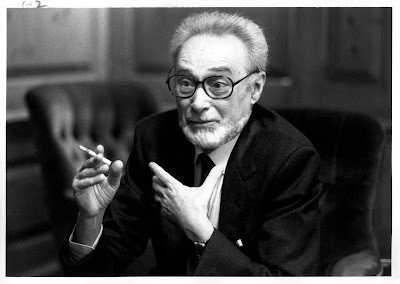
Martin Argles: Primo Levi
Published on October 27, 2021 13:07
October 18, 2021
Michele 2021

Michele Leggott with Olive
Wikipedia informs me that there's now a specific term for a Festschrift compiled and published by electronic means on the internet. It's called a Webfestschrift.
They also state that this German word has been naturalised so thoroughly into English that it no longer requires italics. But what exactly does it mean? I've defined it, in context, as a "write of celebration" - a series of essays or (as in this case) poems and short memoirs designed to mark the retirement of a great writer or scholar.
Since January I've been working - with the help of many friends and contributors - on a Festschrift to celebrate the life and work of New Zealand poet Michele Leggott on the occasion of her retirement from the University of Auckland. That site went live yesterday, on Michele's birthday.
Here's a link to it, along with a table of contents:
•

Michele Leggott: DIA (1994)
Michele 2021
A Birthday Festschrift for Michele Joy Leggott
(January 19 - October 18, 2021)
Jack Ross: Preface: October 18, 2021
About Michele
John Adams: Michele, readingRachel Blau DuPlessis: Dateline: Michele, in eight momentsPam Brown: mezzo centoRuby Brunton: And Still the Earth is Round - Poem for MicheleJanet Charman: haikuLynley Edmeades: Listening InFrances Edmond: For Michele’s festschriftMartin Edmond: Michele LeggottMurray Edmond: After Gilgamesh: for micheleSue Fitchett: Homage to Michele Leggott who cured a comma addictionPaula Green: out of the darkBernadette Hall: on adding up the loves of our livesDavid Howard: VIEW FINDERBronwyn Lloyd: Adventures in the ArchivesTherese Lloyd: RegiftCilla McQueen: Poet-to-PoetJohn Newton: Big Projects for Poetry (& Criticism)Tim Page: Michele FestschriftMary Paul: Rā whānau ki a koe, MicheleChris Price: Works and DaysJack Ross: The GulfLisa Samuels: Joy DivisionTracey Slaughter: is there a goddess for this? Penny Somervaille: Dear MicheleHelen Sword: Walking with MicheleFredrika van Elburg: Working with MicheleAnn Vickery: Floating LargesseSusannah Whaley: FestschriftMichael Whittaker: My path to MicheleJoanne Wilkes: Michele Leggott
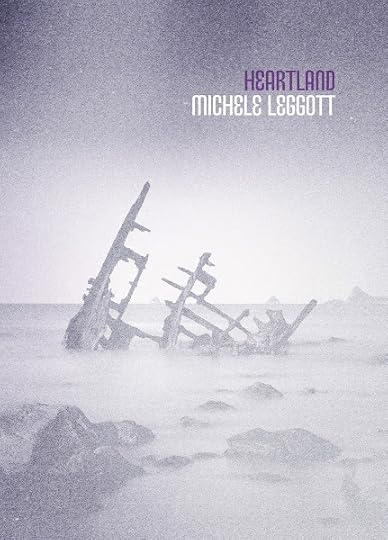
Michele Leggott: Heartland (2014)
•
It's been great fun working on this project. By its very nature it had to be hush-hush, and I was very happy to learn from Michele yesterday that we had indeed succeeded in keeping it secret. Even people she was in touch with every day had managed to avoid dropping any hints.
Of course, it contains contributions by only a few of the people who would like to celebrate and remember Michele's influence on them. In that sense it's a start rather than a full-stop to a consideration of her career to date. Now she's retired from Academia, there'll be that much more time to work on her own projects and interests exclusively in future!
I hope you enjoy browsing through the various pieces we've included. The site includes a pictorial breakdown of Michele's publications (both print and online) which may come as quite a surprise to some. She's really had an extraordinary influence on many, many aspects of New Zealand culture over the past three or four decades.
There's certainly space for a more complete listing of her articles and shorter pieces, but I leave that for someone else in the future. This project was intended from the start to be more personal and less academic in focus, and hopefully that will make it more accessible to poetry-lovers everywhere.
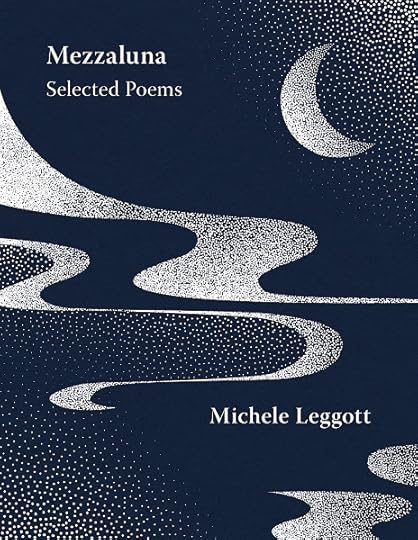
Michele Leggott: Mezzaluna: Selected Poems (2020)
•
Published on October 18, 2021 12:57
October 6, 2021
Magister Ludi: Hermann Hesse
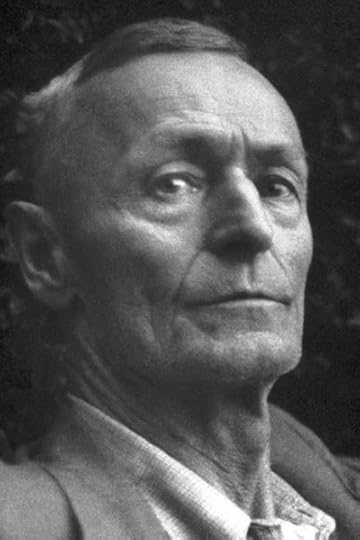
Nobel Prize Archive: Hermann Hesse (1946)
The Nobel Prize in Literature 1946 was awarded to Hermann Hesse "for his inspired writings which, while growing in boldness and penetration, exemplify the classical humanitarian ideals and high qualities of style."
It's quite easy to forget that sometimes.
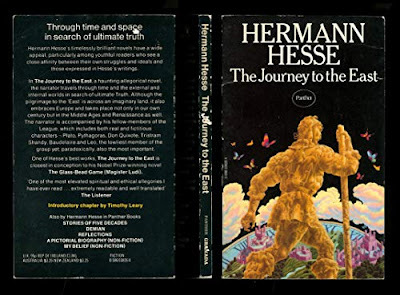
Hermann Hesse: The Journey to the East (1932)
Garish paperback copies of Hermann Hesse's books are the discarded backdrop to so many people's memories of their brief spell in the counterculture that the anti-myth has grown up that he was just another peddler of facile half-truths like the author of Zen and the Art of Motorcycle Maintenance , or (for that matter) another fallen idol, Aldous Huxley.
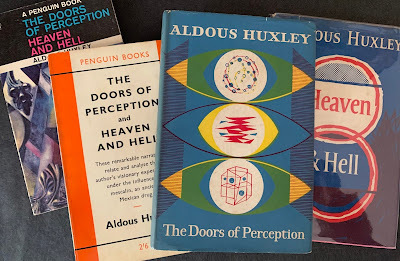
Aldous Huxley: The Doors of Perception / Heaven and Hell (1954 / 1956)
It was mostly the shorter, easier books which got read, however: Siddhartha, The Journey to the East - seldom the longer, more ponderously Germanic ones such as Narziss and Goldmund or The Glass Bead Game.
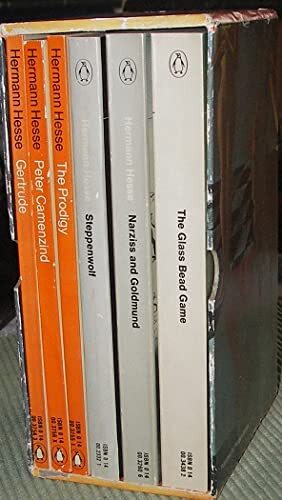
Hermann Hesse: The Prodigy / Peter Camenzind / Gertrude / Steppenwolf /
Narziss and Goldmund / The Glass Bead Game
It's important to note, though, that there was a time, not so long ago, when Hesse was ranked by many (including myself) as one of the three greatest twentieth-century novelists writing in German - along with his fellow Nobel Laureate Thomas Mann and the incomparable Franz Kafka.
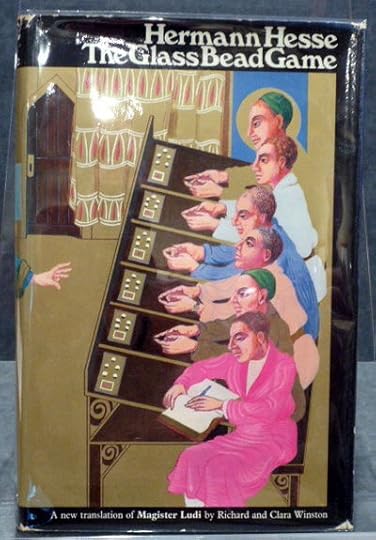
Hermann Hesse: The Glass Bead Game (1943)
Did we all get it wrong? Was The Glass Bead Game never really on a level with The Trial or Buddenbrooks - let alone that more recent candidate for pole position, Robert Musil's The Man Without Qualities ?
It's interesting to look back at the assessment of Hesse's work made by the Nobel Prize committee in that fateful year of 1946 to get some idea of just what they saw in him then, with the rubble of Hitler's Festung Europa lying all around them:
When at the beginning [of the First World War] he wanted to speak some words of peace and contemplation to his agitated colleagues and in his pamphlet used Beethoven’s motto, «O Freunde, nicht diese Töne» [Oh friends, not these tones], he aroused a storm of protest. He was savagely attacked by the German press and was apparently deeply shocked by this experience. He took it as evidence that the entire civilization of Europe in which he had so long believed was sick and decaying. Redemption had to come from beyond the accepted norms, perhaps from the light of the East, perhaps from the core hidden in anarchic theories of the resolution of good and evil in a higher unity. Sick and doubt-ridden, he sought a cure in the psychoanalysis of Freud, eagerly preached and practised at that time, which left lasting traces in Hesse’s increasingly bold books of this period.
- Nobel Prize Award Ceremony Speech (1946)
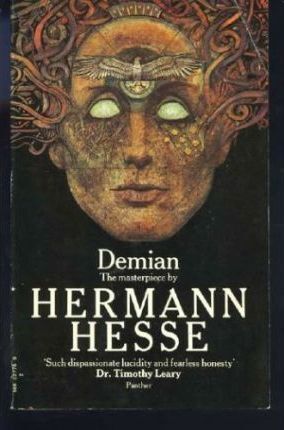
Hermann Hesse [as Emil Sinclair]: Demian (1919)
Hesse had started his career with vaguely rebellious books about the constraints of conventional culture on the individual: books such as Unterm Rad (1905) [translated into English as 'The Prodigy', though the German actually means 'Under the Wheel'], which depicts the gradual breaking of the spirit of a gifted boy by schoolmasters and other enemies of originality.
Demian was a new departure for him, however - witness the fact that he published it under a pseudonym. It's the kind of book one could imagine Aleister Crowley writing if he'd had any real talent for fiction. Its sympathy with Occultism and a radical break with the 'natural order' which had left Europe burdened with more than ten million dead seem very appropriate to the year it was published, 1919.
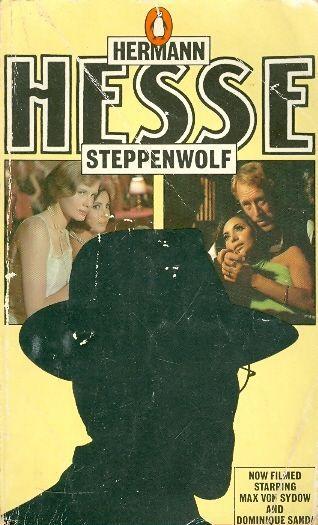
Hermann Hesse: Steppenwolf (1927)
This personal crisis found its magnificent expression in the fantastical novel Der Steppenwolf (1927), an inspired account of the split in human nature, the tension between desire and reason in an individual who is outside the social and moral notions of everyday life. In this bizarre fable of a man without a home, hunted like a wolf, plagued by neuroses, Hesse created an incomparable and explosive book, dangerous and fateful perhaps, but at the same time liberating by its mixture of sardonic humour and poetry in the treatment of the theme ...Certainly this account of Steppenwolf as an expression of post-war malaise makes a lot of sense. Hesse's dabbling with Freudianism and Eastern philosophies is also seen here as more of a necessary response to these paroxysms of a dying civilisation than a narrowly personal exploration of the self.
Hesse's Swedish panegyrists also make the important point that a novel such as Steppenwolf, which seemed so bizarre and trippy to readers in the 1960s, was really very much in the Middle-European Fantastic tradition:
Despite the prominence of modern problems Hesse ... preserves a continuity with the best German traditions; the writer whom this extremely suggestive story recalls most is E. T. A. Hoffmann, the master of the Elixiere des Teufels.

E. T. A. Hoffmann: Die Elixiere des Teufels / Klein Zaches (1815)
I'll refer you to my earlier blogpost on Hoffmann to give you some idea of what they had in mind.

Hermann Hesse: Siddhartha (1922)
Hesse’s maternal grandfather was the famous Indologist Gundert. Thus even in his childhood the writer felt drawn to Indian wisdom. When as a mature man he travelled to the country of his desire he did not, indeed, solve the riddle of life; but the influence of Buddhism soon entered his thought, an influence by no means restricted to Siddhartha (1922) the beautiful story of a young Brahman’s search for the meaning of life on earth.The fact that this novel constituted many people's introduction to the entire field of Eastern thought means that it's bound to show signs of age after more than a century. It's still a very readable book, though, and while it could be accused of superficiality, it's hard to think of any other which remains so charming and accessible while having such evident designs on the reader.
The Nobel committee, too, clearly had certain reservations about this syncretist aspect of Hesse's more philosophical writings, but they conclude by giving him the benefit of the doubt:
Hesse’s work combines so many influences from Buddha and St. Francis to Nietzsche and Dostoevsky that one might suspect that he is primarily an eclectic experimenter with different philosophies. But this opinion would be quite wrong. His sincerity and his seriousness are the foundations of his work and remain in control even in his treatment of the most extravagant subjects.
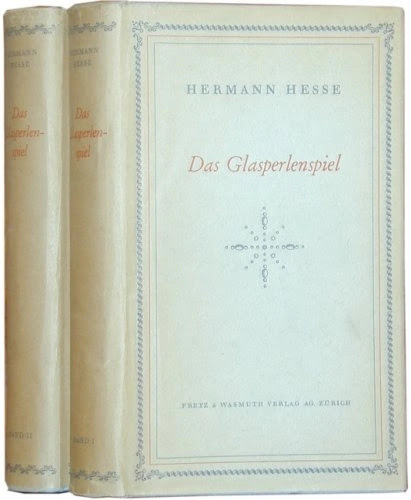
Hermann Hesse: Das Glasperlenspiel (1943)
In Hesse’s more recent work the vast novel Das Glasperlenspiel (1943) [The Glass Bead Game] occupies a special position. It is a fantasy about a mysterious intellectual order, on the same heroic and ascetic level as that of the Jesuits, based on the exercise of meditation as a kind of therapy. ... Hesse’s attitude is ambiguous. In a period of collapse it is a precious task to preserve the cultural tradition. But civilization cannot be permanently kept alive by turning it into a cult for the few. If it is possible to reduce the variety of knowledge to an abstract system of formulas, we have on the one hand proof that civilization rests on an organic system; on the other, this high knowledge cannot be considered permanent. It is as fragile and destructible as the glass pearls themselves, and the child that finds the glittering pearls in the rubble no longer knows their meaning.
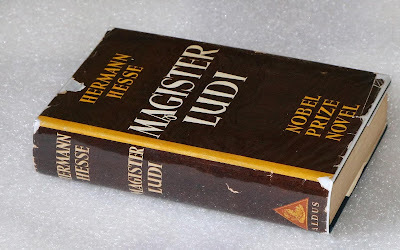
Hermann Hesse: Magister Ludi (1949)
I suppose, in the end, that's what it comes down to: your opinion of the above novel - whether translated as Magister Ludi [Master of the Game] by Mervyn Savill in 1949, or as The Glass Bead Game by Richard and Clara Winson in 1969.
Does Hesse's book really pose an eternal problem: the human dichotomy between (on the one hand) the ascetic and scholarly, with its risk of dryness and pedantry, and (on the other) the instinctive and emotional, with its risk of Dionysian excess? All that can be found already in Nietzsche, who makes a brief appearance in the text as the protagonist Joseph Knecht's - Josef K., anyone? - somewhat unstable friend Fritz Tegularius.
Others of his contemporaries and near-contemporaries to be found in its pages include Thomas Mann himself (as "Thomas van der Trave", Joseph Knecht's predecessor as Magister Ludi), Swiss Historian Jakob Burckhardt (as the Benedictine monk "Father Jacobus"), and Heinrich Perrot, the owner of a machine shop where Hesse worked after dropping out of school (as the Glass Bead Game's inventor "Bastian Perrot").
Does The Glass Bead Game make the most sense, then, if one sees it as a post-war Dystopia posing as a distant Utopia? If so, the author has stated his own position far less clearly than Huxley and Orwell, his near-contemporaries, in their far darker fables Brave New World and Nineteen-Eighty-Four. But maybe that makes it even more of a book for our own time? I fear that the jury's still out on that one.
Certainly, my understanding of the novel has changed over the years. There was a time when nothing seemed more paradisal to me than Hesse's description of Castalia. Now, having done quite a bit more living in the meantime, Knecht's motivation for making a break from the formalism of the game makes much better sense to me.
It's a long novel, and a densely layered one - but then the same is true of both The Magic Mountain and The Castle. I remain to be convinced that it shouldn't be mentioned in the same breath with them. Naturally all three writers must continue to have their own distinct constituencies, mind you.
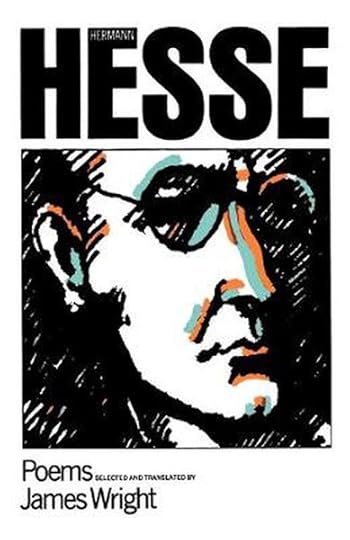
Hermann Hesse: Poems, trans. James Wright (1970)
If Hesse’s reputation as a prose writer varies, there has never been any doubt about his stature as a poet. Since the death of Rilke and George he has been the foremost German poet of our time. He combines exquisite purity of style with moving emotional warmth, and his musical form is unsurpassed in our time. He continues the tradition of Goethe, Eichendorf, and Mörike and renews its poetic magic by a colour peculiar to himself ...
- Nobel Prize Award Ceremony Speech (1946)
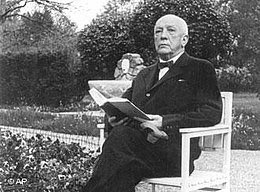
Richard Strauss (1864-1949)
I suppose that it comes as news to most of us that Hesse was ever thought of as "the foremost German poet of our time" - a fitting successor to Stefan George and Rainer Maria Rilke! But then, the first appearance of Paul Celan's "Todesfuge" [Death Fugue] was still two years off in 1946 ...
Luckily, Richard Strauss's breathtaking Four Last Songs (1950) gives us some idea of the inspiration he found in Hesse's poetry.
Strauss had come across the poem "Im Abendrot" by Joseph von Eichendorff, which he felt had a special meaning for him. He set its text to music in May 1948. Strauss had also recently been given a copy of the complete poems of Hermann Hesse and was strongly inspired by them. He set three of them – "Frühling", "September", and "Beim Schlafengehen" – for soprano and orchestra, and contemplated setting two more, "Nacht" and "Höhe des Sommers", in the same manner ... The overall title Four Last Songs was provided by Strauss's friend Ernst Roth, the chief editor of Boosey & Hawkes, when he published all four songs as a single unit in 1950, and in the order that most performances now follow: "Frühling", "September", "Beim Schlafengehen", "Im Abendrot".
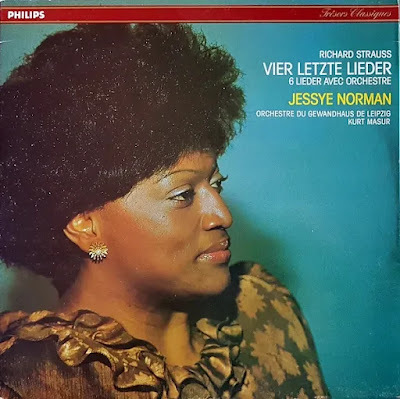
Richard Strauss: Vier letze Lieder (1950)
If you've never listened to it, you really should. Here's a link to Jessye Norman's epic performance of the entire work on YouTube.
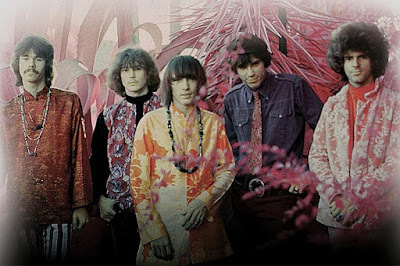
Steppenwolf (c.1967-72)
So, on the one hand we have Steppenwolf the rock band, most famous for their 1968 anthem "Born to be Wild," one of two songs (the other was "The Pusher") featured on the soundtrack of the classic counterculture movie Easy Rider (1969).
On the other hand, we have the stirring strains of "2001: A Space Odyssey" Strauss's settings of some of Hermann Hesse's gentler lyrics.
I think I'll have to leave the implications of comics maestro Jack Kirby's choice of the name "Steppenwolf" for one of the principal villains on his dark planet of Apokolips - seen most recently in the DC movie Batman v Superman: Dawn of Justice (2016) - to a more informed commentator, however ...
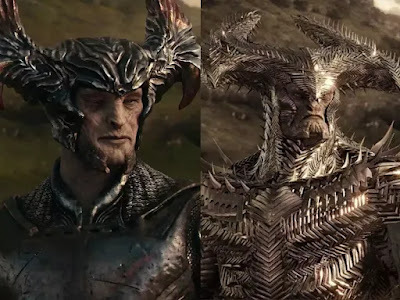
Two sides of Steppenwolf (2017 / 2020)
Is any real reconciliation possible between these two approaches to the legacy of Hermann Hesse? Does he have a lasting legacy, in fact? I think so, yes. He may never approach the heights of respectability implied by that Nobel Prize eulogy again, but that's probably a good thing. If he stood for anything, he stood for rebellion against constituted authority, and the consequent need for a personal quest for new ethical standards to live by.
Some of the directions he himself went in may seem a little dated now, but the astonishing thing is how many of them don't. His rebellious alternatives have become, for many, now - in the age of climate change and the catastrophic failure of so many of our comfortable certitudes - the accepted middle of the road.
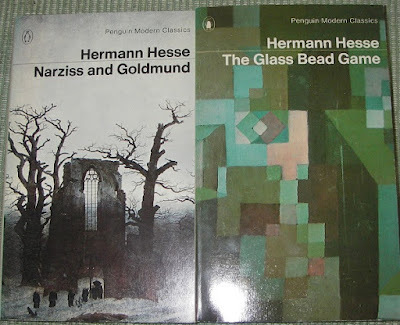
Hermann Hesse: Narziss and Goldmund / The Glass Bead Game (1973)
•
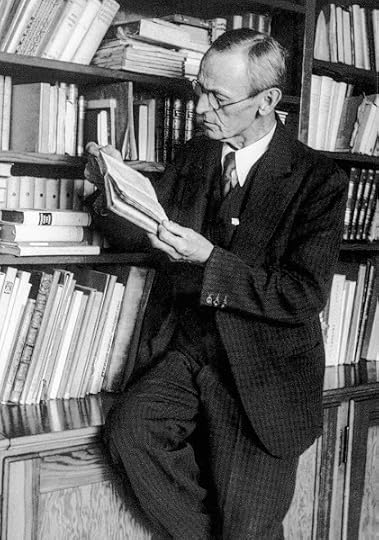
Keystone-France / Gamma-Rapho / Getty: Hermann Hesse (2018)
Hermann Karl Hesse (1877-1962)
Novels:
Peter Camenzind. ['Peter Camenzind', 1904]. Trans. W. J. Strachan. 1961. Harmondsworth: Penguin, 1974.The Prodigy. ['Unterm Rad', 1905]. Trans. W. J. Strachan. 1961. Harmondsworth: Penguin, 1973.Gertrude. ['Gertrud'. 1910]. Trans. Hilda Rosner. 1969. New York: Farrar, Straus & Giroux, 1972.Rosshalde. ['Roßhalde', 1914]. Trans. Ralph Manheim. 1970. London: Picador, 1973.Knulp: Three Tales from the Life of Knulp. ['Knulp', 1915]. Trans. Ralph Manheim. 1971. London: Picador, 1974.[as Emil Sinclair] Demian. ['Demian', 1919]. Trans. W. J. Strachan. 1960. Frogmore, St Albans: Panther Books, 1975.Klingsor’s Last Summer. ['Klingsors letzter Sommer', 1920]. Trans. Richard & Clara Winston. 1970. London: Picador, 1973.Siddhartha. ['Siddhartha', 1922]. Trans. Hilda Rosner. 1954. London: Picador, 1976.Der Steppenwolf: Erzählung. 1927. Frankfurt am Main: Suhrkamp Taschenbuch Verlag, 1974.Steppenwolf. ['Der Steppenwolf', 1927. Trans. Basil Creighton. 1929. Rev. Walter Sorell. 1963. Harmondsworth: Penguin, 1975. Narziss and Goldmund. ['Narziß und Goldmund', 1930. Trans. Geoffrey Dunlop. 1959. Harmondsworth: Penguin, 1973.The Journey to the East. ['Die Morgenlandfahrt', 1932. Trans. Hilda Rosner. 1956. Introduction by Timothy Leary. 1966. Frogmore, St Albans: Panther Books, 1973.The Glass Bead Game (Magister Ludi). ['Das Glasperlenspiel (Magister Ludi)', 1943. Trans. Richard & Clara Winston. 1969. London: Jonathan Cape, 1971.The Glass Bead Game (Magister Ludi). ['Das Glasperlenspiel (Magister Ludi)', 1943. Trans. Richard & Clara Winston. 1960. Penguin Modern Classics. Harmondsworth: Penguin, 1976.
Novellas and Short Stories:
Eine Stunde hinter Mitternacht (1899)Freunde (1908)In the Old Sun (1914)Schön ist die Jugend (1916)Strange News from Another Star and Other Stories. ['Märchen', 1919. Trans. Denver Lindley. 1972. Harmondsworth: Penguin, 1976.Klein und Wagner (1919)Stories of Five Decades. Ed. Theodore Ziolkowski. Trans. Ralph Manheim & Denver Lindley. 1954 & 72. St Albans, Herts: Triad Panther, 1976.Pictor’s Metamorphoses and Other Fantasies. Ed. Theodore Ziolkowski. Trans. Rita Lesser. 1982. Triad Panther. London: Granada, 1984.The Fairy Tales of Hermann Hesse. Trans. Jack Zipes. Woodcut Illustrations by David Frampton. A Bantam Book. New York: Bantam Doubleday Dell Publishing Group, Inc., 1995.
Non-Fiction:
Besuch aus Indien (1913)Blick ins Chaos (1920)Wandering: Notes and Sketches. 1920. Trans. James Wright. 1972. New York: Farrar, Straus & Giroux, 1973.If the War Goes On … Reflections on War and Politics. 1946. Trans. Ralph Manheim. 1971. London: Picador, 1974.Reflections. Ed. Volker Michels. 1971. Trans. Ralph Manheim. 1974. Frogmore, St Albans: Triad Panther, 1979.Autobiographical Writings. Ed. Theodore Ziolkowski. Trans. Denver Lindley. 1971-72. New York: Farrar, Straus & Giroux, 1973.My Belief: Essays on Life and Art. 1973. Ed. Theodore Ziolkowski. Trans. Denver Lindley & Ralph Manheim. 1974. Frogmore, St Albans: Triad Panther, 1978.
Poetry:
Hermann Lauscher [poetry and prose] (1900)Poems: 1899-1921. 1953. Trans. James Wright. 1970. Cape Poetry Paperbacks. London: Jonathan Cape, 1978.Crisis: Pages from a Diary (1975)Hours in the Garden and Other Poems. Trans. Rika Lesser. 1979. Cape Poetry Paperbacks. London: Jonathan Cape, 1980.
Letters:
Carlsson, Anni & Volker Michels, ed. The Hesse-Mann Letters: The Correspondence of Hermann Hesse and Thomas Mann, 1910-1955. 1968. Trans. Ralph Manheim. Foreword by Theodore Ziolkowski. 1975. London: Peter Owen, 1976.
Secondary:
Freeman, Ralph. Hermann Hesse: Pilgrim of Crisis. A Biography. 1978. An Abacus Book. London: Sphere Books, 1981.Michels, Volker, ed. Hermann Hesse: A Pictorial Biography. 1973. Trans. Theodore & Yetta Ziolkowski and Denver Lindley. 1975. Frogmore, St Albans: Triad Panther, 1979.
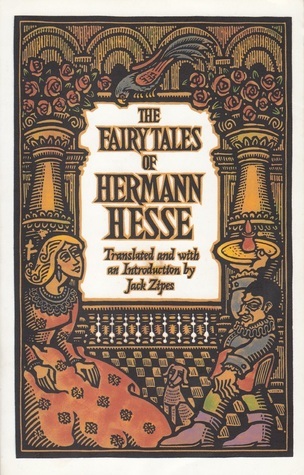
Jack Zipes, trans: The Fairy Tales of Hermann Hesse (1995)
•
Published on October 06, 2021 14:28
September 11, 2021
A Mann for All Seasons: The Magic Mountain
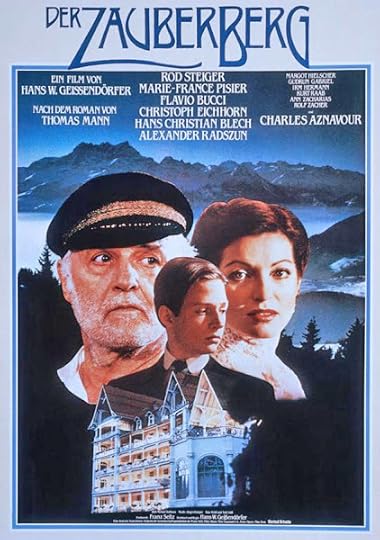
Hans W. Geissendörfer, dir: Der Zauberberg (1982)
[based on the novel by Thomas Mann]
As we move into the fourth week of our fourth COVID-19 lockdown up here in Auckland (still stuck at level 4, though the rest of the country has managed to escape into the relative comfort of level 2), I have to confess that I've been beguiling my enforced leisure rereading Thomas Mann's classic novel of sanatorium life, The Magic Mountain (1924).
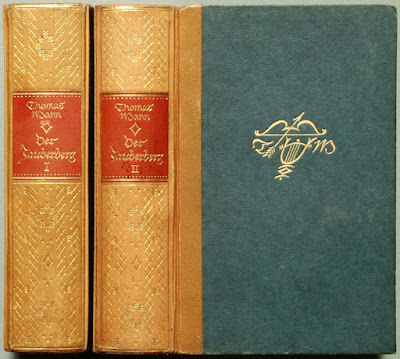
Thomas Mann: Der Zauberberg (1924)
This is the third time I've read it. The first time (after a couple of false starts) was when I was still a teenager. I responded immediately to Mann's brilliant evocation of atmosphere in the opening couple of chapters, as his hapless hero Hans Castorp gradually succumbs to the charms of invalid life in the Swiss Alps.
After that, however, it got a bit more difficult. Each chapter was longer than the one before (no doubt by careful design on the part of the author), and the mass of detail about each of the characters and all of the footling ways they find to kill time up there in the rarefied, TB-intolerant air of the mountains, did rather drag at times.
Overall, though, I did feel a sense of achievement when I got to the finish - signalled, appropriately enough, by the outbreak of World War I. Nor was I blind to the allegorical significance of all of this elaborate life-avoidance given some of my other reading around the subject. It's the one thing everyone knows about The Magic Mountain, in fact - its function as a microcosm of the 'sick' society of pre-war Europe.
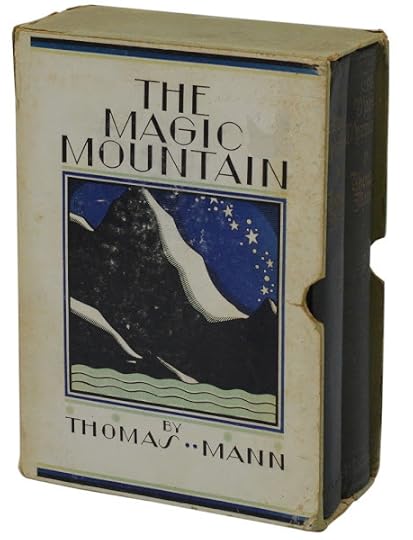
Thomas Mann: The Magic Mountain, trans. Helen T. Lowe-Porter (1927)
Twenty-five or so years later I read it again. The occasion was my finding a second-hand copy which included the author's late postscript to the novel. I was anxious to see just what he thought it was about, but - being a completist by nature - I thought it necessary to plough right through the whole thing again, all 700-odd pages of it.
The result was, I must admit, a little disappointing: even the charm of those early chapters seemed to have evaporated, leaving only a vast talky expanse of fairly obvious symbolism. The crucial chapter 'Snow', where Hans Castorp, caught in a snowstorm, has a vision of the ideal life (or is it? He wakes up abruptly just as it's shifting into nightmare), fell particularly flat for me at that point.
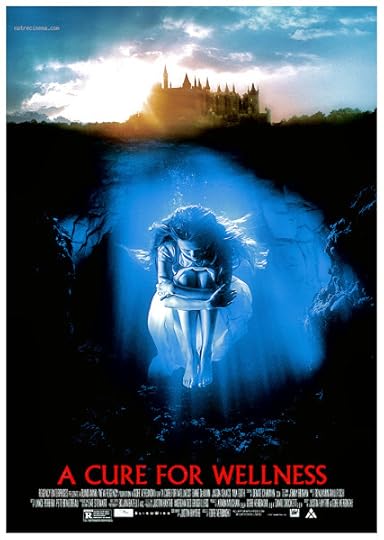
Gore Verbinski, dir.: A Cure for Wellness (2017)
['inspired' by Thomas Mann's The Magic Mountain]
I'm happy to report that that has not been the case this time round. Maybe it helps to be in the middle of a huge, collective, world-wide feverdream. The old attraction was back, though whether I'll ever feel inspired to take the long road to the Bergdorf again remains to be seen.
In particular, I was struck by Mann's plaintive appeal, in his late Postscript to the novel, that readers should reserve judgement until they've read it through twice. I must be unusually dumb, because it took me three readings - I do now, however, feel as if I have some kind of a fist on just what he had in mind.
•
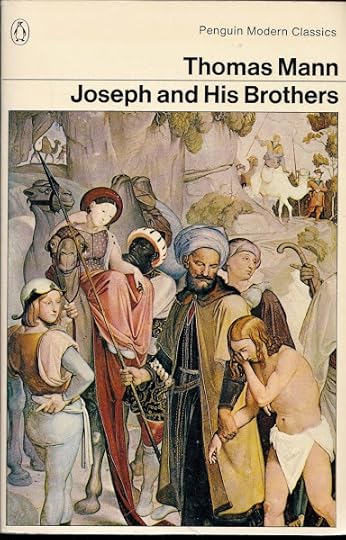
Thomas Mann: Joseph and His Brothers (1978)
That's not to say that this was the whole extent of my reading of Thomas Mann. I had quite a taste for what were then regarded as modern German writers in my teens, and read Franz Kafka (first), Herman Hesse (second), and finally Thomas Mann in as much depth as I was able, given the translations available at the time.
In particular I read all four of Mann's great novels - Buddenbrooks (1901), The Magic Mountain (1924), Joseph and His Brothers (1933-43), and Doctor Faustus (1947). I also read the four shorter, 'interstitial' novels which have attracted so much less attention: the rather silly Royal Highness (1909); the more brilliant Lotte in Weimar (1939 - US title: The Beloved Returns); the weird, late Holy Sinner (1951); and finally the unfinished Confessions of Felix Krull, Confidence Man, begun as a short story in 1911, and completed and published as the first instalment of a much longer novel in 1954, just before the writer's death.

Thomas Mann: Death in Venice (1912)
Quite likely, though, there's only one thing you associate with the name Thomas Mann: Death in Venice. Or, rather, the wonderfully dreamy 1971 Visconti film about - in the immortal words of Monty Python's "Elizabeth L" sketch - "the elderly poof what dies in Venice."
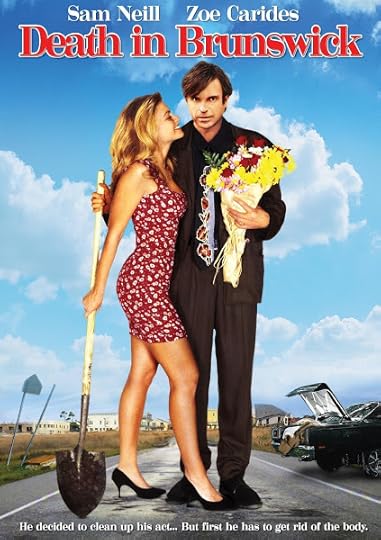
John Ruane, dir.: Death in Brunswick (1990)
It also inspired an even more inspired spoof about a pitiful mother's boy (played by Sam Neill) in the rather grotty Melbourne suburb of Brunswick, whose series of comic misadventures culminate in an abortive attempt to poison her with a cup of tea as she listens to her favourite record, the slow movement of Mahler's fifth symphony - yes, that leitmotif which keeps going all through Visconti's masterpiece. You can listen to it here.
•

Helmut Koopman: Thomas Mann (2005)
So who exactly was Thomas Mann? In the picture above, taken in Munich in 1900, you can see him taking a rather subordinate position to his elder brother Heinrich, also a renowned writer. The two would soon change positions, though.
A year later Thomas published his first novel, Buddenbrooks: The Decline of a Family, still regarded by Germanists as his main claim to fame, given its importance as a chronicle of the decline of the great merchant families of Northern Germany. It was probably the decisive factor in earning him the Nobel Prize for literature in 1929, and it certainly established him as something of a pundit among commentators on German culture and society.
All through the turbulent years of the First World War, the post-war famine, the Weimar Republic, and the turn to Right-Wing Nationalism in his native land, he continued to struggle with his complex fate: a bourgeois but also an artist, a patriot but also an internationalist.
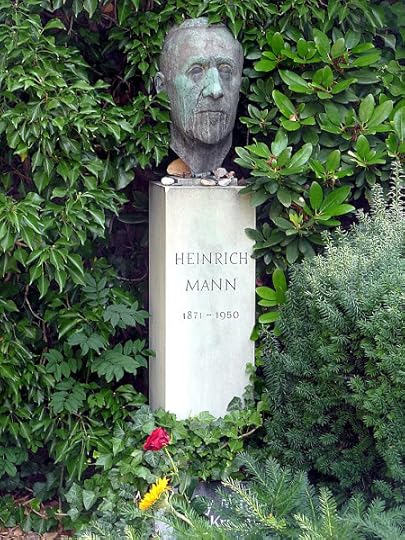
Heinrich Mann's Grave in Berlin (2012)
Brother Heinrich, a thorough Francophile and critic of Prussianism - one of his early novels, Professor Unrat, was filmed as the Marlene Dietrich vehicle The Blue Angel (1930) - faced no such ideological struggles. So far as he was concerned, aggressive German nationalism was a form of mental illness, which needed to be exorcised thoroughly before Germany would be fit to take its place among the other nations of Europe.
In retrospect, it's hard to disagree with him, but the brothers fell out in 1914, and found it difficult to maintain more than an uneasy truce ever after, despite Thomas's eventual espousal of a not dissimilar position.
He wrote novels, short stories, and essays in abundance. Not all of them have been translated into English, but enough is available to give you a pretty good idea of his progress from Protestant Burger to ardent New Dealer. When Hitler came to power, Mann fled to Switzerland and subsequently to the United States, where he was welcomed with open arms as the embodiment of the purer manifestations of German Kultur.
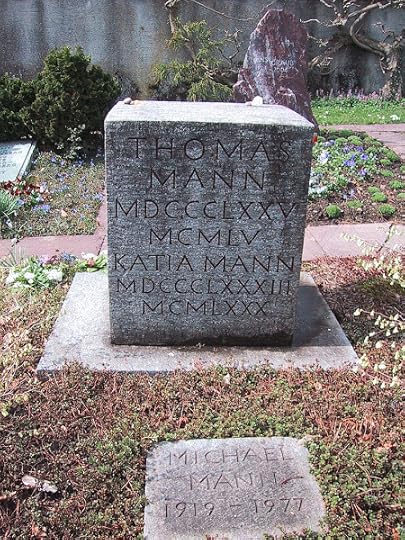
Thomas and his wife Katia Mann's Grave in Switzerland (2005)
This marble-monument version of Mann does not really do him justice, however. His work is both diverse and perverse - by the standards of the time, at any rate. Visconti did not misinterpret the underlying themes of perhaps his greatest work, the novella Death in Venice. It's only one in a series of works which associate artistic inspiration with illness and deformity - a kind of leprosy of the soul which is nevertheless necessary to achieve such great heights.
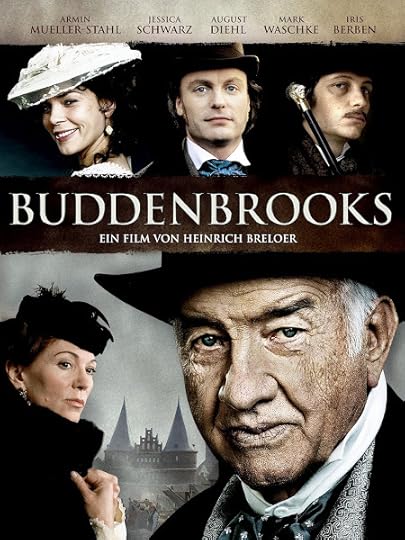
Heinrich Breloer, dir.: Buddenbrooks (2008)
Mann was, of course, a contemporary of Sigmund Freud, and his ideas on the declining energies of great mercantile families - the first generation pirates and pioneers, the next generations consolidators and businessmen, and the generations after that neurotics and artists - were very much influenced by Freud's ideas on the debilitating tendencies of modern civilisation.
Among his other interests were psychic phenomena (he wrote an interesting essay called "Okkulte Erlebnisse" [An Experience in the Occult] about his own attendance at a séance with celebrated medium brothers Willi and Rudi Schneider). This, too, is one of the many influences which bore fruit in the later chapters of The Magic Mountain.
Is it his masterpiece? I would say so, yes. I greatly enjoyed reading the immensely lengthy Joseph and His Brothers, but it could be accused of a certain avoidance of contemporary phenomena. Amusingly enough, on one of my family visits to the UK, I discovered my 94-year-old Great-Aunt Morag ("It's a great age!") in the process of reading this vast, strange novel, which had been taken out of the library for her by my cousins under instructions to find her some religious books. She said she found it interesting, if a bit long-winded.
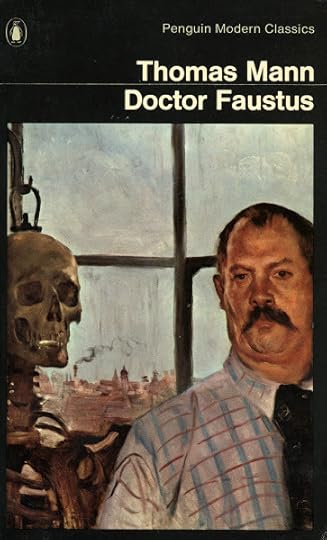
Thomas Mann: Doctor Faustus (1947)
Nor have I ever been able quite to fathom the exact point of Doctor Faustus, which others tell me should be regarded as his greatest work. I hope to remedy my deficiencies in this respect when I'm finally able, quite soon, to get hold of a copy of his book-length explication of it, The Story of a Novel (1961), however.
One thing's for certain, The Magic Mountain has nothing whatsoever to do with the Gore Verbinski horror film A Cure for Wellness, despite the director and screenwriter's claims to the contrary. Much though I enjoyed this film, I couldn't honestly see any kinship between their respective projects, apart from the fact that both stories take place at sanatoria in the Swiss Alps.
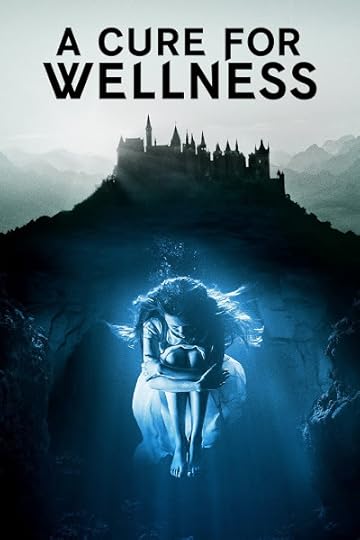
Gore Verbinski, dir.: A Cure for Wellness (2017)
I certainly do recommend Thomas Mann, though. In certain moods - when one has a lot of time on one's hands - his complex, intertwined narrative style is just what the doctor ordered. And his subject matter is anything but predictable and traditional.
'Polymorphous perversity', Freud's term for infantile sexuality, fits most of his heroes better than other, more conventional descriptions. Mann himself, though on the one hand a bourgeois family man, had another side which required a series of passionate male friendships. Doing justice to these two aspects of himself explains a good deal of his oeuvre.
In the late 1930s his actress daughter Erika required an English passport, having run into difficulties as a 'stateless person' due to her left-wing political affiliations. At the recommendation of Mann family friend Christopher Isherwood, W. H. Auden was asked to marry her in order to secure her a passport. 'Delighted,' he telegraphed in reply, and British nationality for her was duly obtained.
Some years later a photograph of Thomas Mann and his extended family was being taken for a feature article in America, and the journalist enquired just what Mr. Isherwood's connection with the Manns might be? "Family pimp," growled Thomas.
If you do start into his labyrinth, beware!

Carl Mydans: Thomas Mann and family (1939)
l-to-r: Christopher Isherwood, W. H. Auden, Erika Mann, Thomas Mann, Katia Mann, Monika Mann, Klaus Mann
•
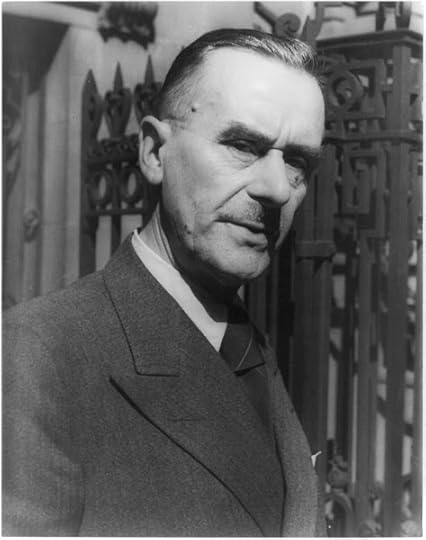
Thomas Mann (1937)
Paul Thomas Mann
(1875-1955)
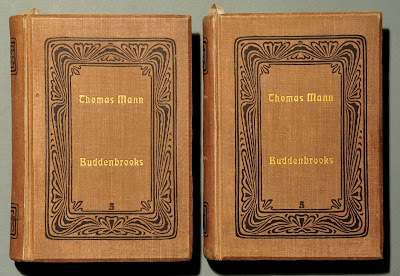
Thomas Mann: Buddenbrooks (1901)
Novels:
Buddenbrooks – Verfall einer Familie (1901)Buddenbrooks: The Decline of a Family. 1902. Trans. H. T. Lowe-Porter. 1924. London: Secker & Warburg, 1947. Königliche Hoheit (1909)Royal Highness. 1909. Trans. A. Cecil Curtis. 1926. Rev. Constance McNab. 1962. Penguin Modern Classics. Harmondsworth: Penguin, 1979. Der Zauberberg (1924)The Magic Mountain. 1924. Trans. H. T. Lowe-Porter. 1928. London: Secker & Warburg, 1948.The Magic Mountain: With a Postscript by the Author on The Making of the Novel. 1924. Trans. H. T. Lowe-Porter. 1928. London: Nationwide Book Service, 1979. Joseph und seine Brüder (1933-1943)Die Geschichten Jaakobs (1933)Der junge Joseph (1934)Joseph in Ägypten (1936)Joseph, der Ernährer (1943) Joseph and His Brothers. ['The Stories of Jacob' (1933); 'Young Joseph' (1934); 'Joseph in Egypt' (1936); 'Joseph the Provider' (1943)]. Trans. H. T. Lowe-Porter. 1948. London: Secker & Warburg, 1956.Joseph and His Brothers. ['The Stories of Jacob' (1933); 'Young Joseph' (1934); 'Joseph in Egypt' (1936); 'Joseph the Provider' (1943)]. Trans. Helen T. Lowe-Porter. Penguin Modern Classics. Harmondsworth: Penguin, 1978. Lotte in Weimar (1939)Lotte in Weimar. 1939. Trans. H. T. Lowe-Porter. London: Secker & Warburg, 1940. Doktor Faustus (1947)Doctor Faustus: The Life of the German Composer Adrian Leverkühn as Told by a Friend. 1947. Trans. H. T. Lowe-Porter. 1949. Penguin Modern Classics. Harmondsworth: Penguin, 1968. Der Erwählte (1951)The Holy Sinner. 1951. Trans. H. T. Lowe-Porter. 1952. Penguin Modern Classics. Harmondsworth: Penguin, 1965. Bekenntnisse des Hochstaplers Felix Krull. Der Memoiren erster Teil (1911 / 1954)Confessions of Felix Krull, Confidence Man: Memoirs Part I. 1954. Trans. Denver Lindley. 1955. Penguin Modern Classics. Harmondsworth: Penguin, 1973.
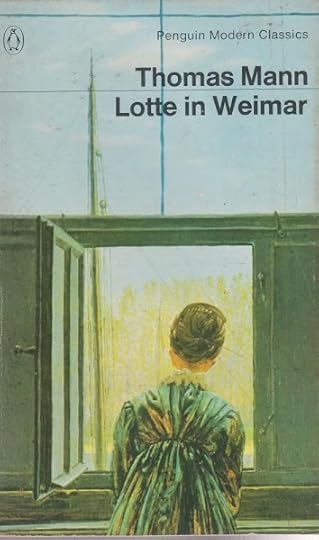
Thomas Mann: Lotte in Weimar (1939)
Short Stories:
Vision (1893)Gefallen (1894)Der Wille zum Glück [The Will to Happiness] (1896)Enttäuschung [Disillusionment] (1896)Der kleine Herr Friedemann [Little Herr Friedemann] (1896)Der Tod [Death] (1897)Der Bajazzo [The Dilettante] (1897)Gerächt [Avenged] (1897)Luischen [Little Lizzy] (1897 / 1900)Tobias Mindernickel (1898)Der Kleiderschrank [The Wardrobe] (1899)Der Weg zum Friedhof [The Way to the Churchyard] (1900)Die Hungernden [The Hungry] (1903)Das Wunderkind [The Child Prodigy] (1903)Ein Glück [A Gleam] (1904)Beim Propheten [At the Prophet's] (1904)Schwere Stunde [A Weary Hour] (1905)Wӓlsungenblut [The Blood of the Walsungs] (1905)Das Eisenbahnunglück [The Railway Accident] (1907)Anekdote [Anecdote] (1908)Wie Jappe und Do Escobar sich prügelten [The Fight between Jappe and Do Escobar] (1911)Bekenntnisse des Hochstaplers Felix Krull [Felix Krull] (1911 / 1922)
Plays:
Fiorenza [Florence] (1905)
Novellas:
Gladius Dei (1902)Tristan (1903)Tonio Kröger (1903)Der Tod in Venedig [Death in Venice] (1912)Herr und Hund [A Man and His Dog / Bashan and I] (1918)Unordnung und frühes Leid [Disorder and Early Sorrow] (1925)Mario und der Zauberer [Mario and the Magician] (1930)Die vertauschten Köpfe – Eine indische Legende [The Transposed Heads] (1940)Das Gesetz [The Tables of the Law] (1944)Die Betrogene: Erzählung [The Black Swan] (1954)
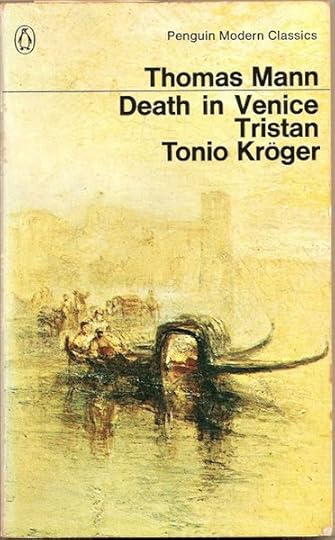
Thomas Mann: Death in Venice / Tristan / Tonio Kröger (1972)
Collections:
Die Erzählungen, Erster Band. 2 vols. 1975. Frankfurt am Main: Fischer Taschenbuch Verlag, 1981.Vision (1893)Gefallen (1894)Der Wille zum Glück (1896)Enttäuschung (1896)Der Tod (1897)Der kleine Herr Friedemann (1896)Der Bajazzo (1897)Gerächt (1897)Luischen (1897 / 1900)Tobias Mindernickel (1898)Der Kleiderschrank (1899)Der Weg zum Friedhof (1900)Gladius Dei (1902)Tristan (1903)Die Hungernden (1903)Tonio Kröger (1903)Das Wunderkind (1903)Ein Glück (1904)Beim Propheten (1904)Schwere Stunde (1905)Wӓlsungenblut (1905)Anekdote (1908)Das Eisenbahnunglück (1907)Wie Jappe und Do Escobar sich prügelten (1911)Der Tod in Venedig (1912) Die Erzählungen, Zweiter Band. 2 vols. 1975. Frankfurt am Main: Fischer Taschenbuch Verlag, 1983.Herr und Hund (1918)Unordnung und frühes Leid (1925)Mario und der Zauberer (1930)Die vertauschten Köpfe – Eine indische Legende (1940)Das Gesetz (1944)Die Betrogene: Erzählung (1954)Fiorenza (1905)Gesang vom Kindchen: Idylle (1919) Stories of Three Decades. Trans. H. T. Lowe-Porter. The Modern Library. New York: Random House, Inc., 1936.Little Herr Friedemann (1897)Disillusionment (1896)The Dilettante (1897)Tobias Mindernickel (1897)Little Lizzy (1897)The Wardrobe (1899)The Way to the Churchyard (1901)Tonio Kröger (1903)Tristan (1903)The Hungry (1903)The Infant Prodigy (1903)Gladius Dei (1902)Fiorenza (1904)A Gleam (1904)At the Prophet's (1904)A Weary Hour (1905)The Blood of the Walsungs (1905)Railway Accident (1907)The Fight between Jappe and Do Escobar (1911)Felix Krull (1911)Death in Venice (1912)A Man and His Dog (1918)Disorder and Early Sorrow (1925)Mario and the Magician (1929) Stories of a Lifetime: The Collected Stories. Trans. H. T. Lowe-Porter. 1936. Vol. 1 of 2. Mercury Books 8. London: The Heinemann Group of Publishers, 1961.Little Herr Friedemann (1897)Disillusionment (1896)The Dilettante (1897)Tobias Mindernickel (1897)Little Lizzy (1897)The Wardrobe (1899)The Way to the Churchyard (1901)The Hungry (1902)Tristan (1902)Gladius Dei (1902)Tonio Kröger (1903)The Infant Prodigy (1903)A Gleam (1904)Fiorenza (1904)At the Prophet's (1904)A Weary Hour (1905)The Blood of the Walsungs (1905)Railway Accident (1907)The Fight between Jappe and Do Escobar (1911) Stories of a Lifetime: The Collected Stories. Trans. H. T. Lowe-Porter. 1936. Vol. 2 of 2. Mercury Books 9. London: The Heinemann Group of Publishers, 1961.Death in Venice (1912)A Man and His Dog (1918)Disorder and Early Sorrow (1925)Mario and the Magician (1929)The Transposed Heads (1940)The Tables of the Law (1944)The Black Swan (1953) Six Early Stories. Trans. Peter Constantine (1997)A Vision (1893)"Prose Sketch"Fallen (1894)The Will to Happiness (1896)Death (1897)Avenged (1897)"Study for a Novella"Anecdote (1908)
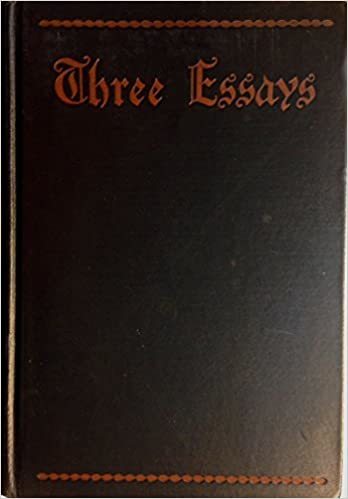
Thomas Mann: Three Essays (1929)
Non-fiction:
Three Essays. Trans. H. T. Lowe-Porter (1929)Friedrich und die große Koalition [Frederick and the Great Coalition] (1915)Goethe und Tolstoi [Goethe and Tolstoy] (1922)Okkulte Erlebnisse [An Experience in the Occult] (1924) Past Masters and Other Papers. Trans. H. T. Lowe-Porter (1933)An Exchange of Letters. Trans. H. T. Lowe-Porter (1937)Freud, Goethe, Wagner. Trans. H. T. Lowe-Porter & Rita Matthias-Rail (1937)The Coming Victory of Democracy. Trans. Agnes E. Meyer. 1938. London: Secker & Warburg, 1938.This Peace. Trans. H. T. Lowe-Porter (1938)This War. Trans. Eric Sutton (1940)Order of the Day: Political Essays and Speeches of Two Decades. Trans. H. T. Lowe-Porter, Agnes E. Meyer & Eric Sutton (1942)Listen, Germany! Twenty-Five Radio Messages to the German People over the BBC (1943)Essays of Three Decades. Trans. H. T. Lowe-Porter. London: Secker & Warburg, 1947.Goethe's Faust (1938)Goethe's Career As a Man of Letters (1932)Goethe as Representative of the Bourgeois Age (1932)Goethe and Tolstoy (1922)Anna Karenina (1939)Lessing (1929)Kleist's Amphitryon (1926)Chamisso (1911)Platen (1930)Theodor Storm (1930)The Old Fontane (1910)Sufferings and Greatness of Richard Wagner (1933)Richard Wagner and the Ring (1937)Schopenhauer (1938)Freud and the Future (1936)Voyage with Don Quixote (1934) Last Essays. Trans. Richard & Clara Winston and Tania & James Stern. 1958. London: Secker & Warburg, 1959.On SchillerFantasy on GoetheNietzsche's Philosophy in the Light of Recent HistoryChekhovAppendix: 'A Weary Hour'. Trans. H. T. Lowe-Porter (1905) A Sketch of My Life. ['Lebensabriß', 1930]. Trans. H. T. Lowe-Porter (1960)The Story of a Novel: The Genesis of Doctor Faustus. Trans. Richard & Clara Winston (1961)Reflections of a Nonpolitical Man / Thoughts in Wartime / On the German Republic. ['Betrachtungen eines Unpolitischen', 1918; 'Gedanken im Kriege' (1914); 'Von deutscher Republik', 1922]. Trans. Walter D. Morris, Mark Lilla and Cosima Mattner, Lawrence Rainey. Introduction by Mark Lilla. New York: New York Review Books, 2021.
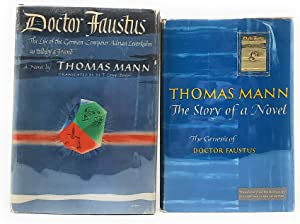
Thomas Mann: Doctor Faustus / The Story of a Novel (1947 / 1961)
Secondary:
Diaries 1918-1939: 1918-1921; 1933-1939. Ed. Hermann Kesten. 1977-80. Trans. Richard & Clara Winston. 1982. London: Robin Clark, 1984.Letters of Thomas Mann, 1889-1955. Ed. & Trans. Richard & Clara Winston. 2 vols. 1970. Penguin Modern Classics. Harmondsworth: Penguin, 1975.Carlsson, Anni & Volker Michels, ed. The Hesse-Mann Letters: The Correspondence of Hermann Hesse and Thomas Mann, 1910-1955. 1968. Trans. Ralph Manheim. Foreword by Theodore Ziolkowski. 1975. London: Peter Owen, 1976.
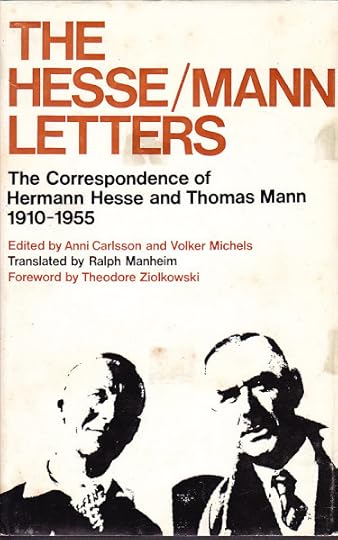
The Hesse-Mann Letters (1976)
•
Published on September 11, 2021 14:12
September 9, 2021
Taking Early Retirement
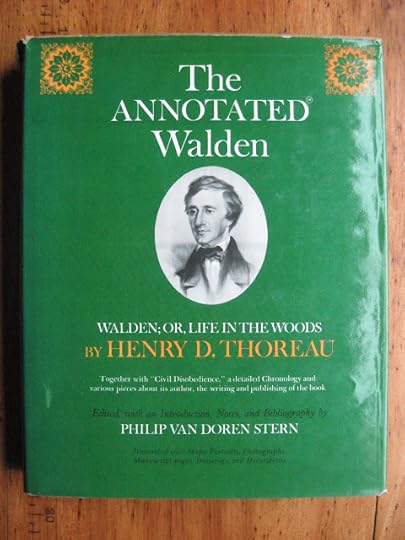
Philip van Doren Stern, ed.: The Annotated Walden (1970)
Lately I've been renewing my acquaintance with one of my favourite books, The Annotated Walden. Why? Because I can. Because I'm taking early retirement from Academia, that's why. In fact, I gave in my required three months notice of departure today, so I thought I'd better start getting in training for the new life!
Don't get me wrong. I have other editions of Thoreau's masterwork, as well as owning a copy of the beautiful fourteen-volumes-in-two Dover reprint of the 1906 edition of his complete journal:
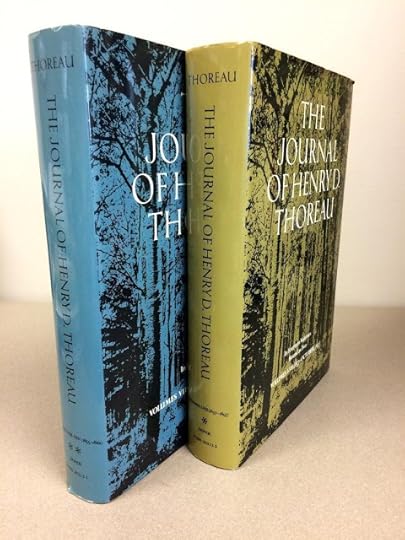
Henry David Thoreau: The Journal, 1837-1861 (2 vols: 1962)
It isn't just Walden, or Life in the Woods (1854) which enchants me, though, it's Philip Van Doren Stern's superb, lovingly illuminated annotated version of the book.
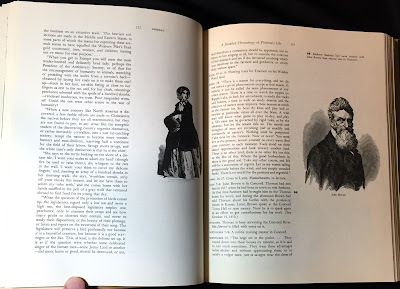
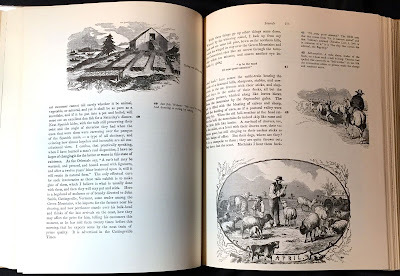
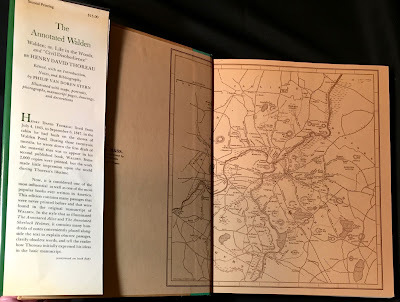
Philip van Doren Stern, ed.: The Annotated Walden (1970)
Stern, perhaps better known for his Christmas story The Greatest Gift - which inspired the Frank Capra movie It's a Wonderful Life (1946) - was an editor and Civil War historian who clearly sympathised greatly with Thoreau's unfettered idealism.
His annotated Walden includes photos of the site of the famous cabin "now" (i.e. in the 1960s), and there's an enchanting sense of double-focus in this book published fifty years ago which invites us to contrast further his "then" with our "now." Thoreau's retreat to the woods seems so much more distant in time, yet its relevance to contemporary thinking has, if anything, grown.
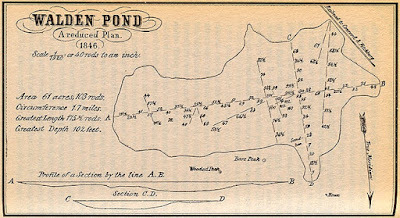
Henry David Thoreau: Walden Pond (1854)
•
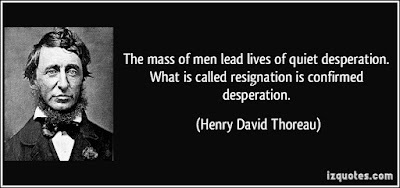
Henry David Thoreau: Walden (1854)
The mass of men lead lives of quiet desperation.It's one of the most famous quotes in American literature. But what does it mean? Stern is very helpful here, as he quotes in the margin from the original version of the passage, where Thoreau gave a long account of an Irish workman moving from job to job without being able to settle in any of them - due mainly to his ever increasing air of desperation, and his gradually disintegrating attire.
This poignant true story was reduced and cut down as Thoreau shaped his book, until it ended up with the sentence as we see it above. The workman, though a signal example of the trend towards self-defeating and ever-growing anxiety ("free-floating anxiety," as we tend to say now), was not the whole story. What Thoreau wanted to say was that apparent increases in prosperity were not really significant when set alongside our ever-growing desire for complete security, and our consequent mounting dread of disaster and destitution.
Which is why he went to the woods - or, rather, a couple of miles down the road from the village of Concord, Massachusetts - to see if it was actually feasible to live self-sufficiently without being either a wage-slave or a pensioner.
The results, it must be said, were mixed. He made his basic point, but it's hard to know if he could have survived without the support of friends such as Ralph Waldo Emerson, who actually owned the land the cabin was built on.
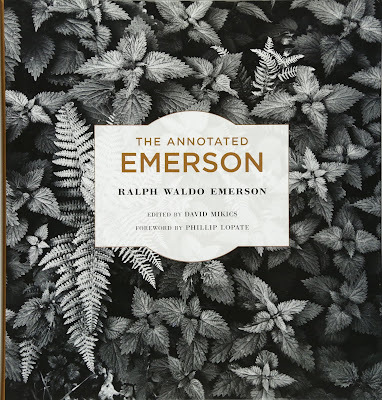
David Mikics, ed.: The Annotated Emerson (2012)
The Annotated Emerson. Ed. David Mikics. Foreword by Phillip Lopate. The Belknap Press. Cambridge, Mass & London: Harvard University Press, 2012.
Emerson sympathised with, but never saw entirely eye to eye with Thoreau. The latter was too grimly consistent in his thinking: too fanatical in his desire to have no truck with slavery or any of the other 'worldly' realities which others were able to accommodate themselves to somehow.
He was, admittedly, only one of the eccentrics (or, as they would have put it, Transcendentalists) who surrounded the sage of Concord, and whom he supported in one way or another for much of his life: another was Louisa May Alcott's father Amos Branson Alcott. The tale is told very entertainingly in Hemingway-biographer Carlos Baker's last book, Emerson among the Eccentrics.
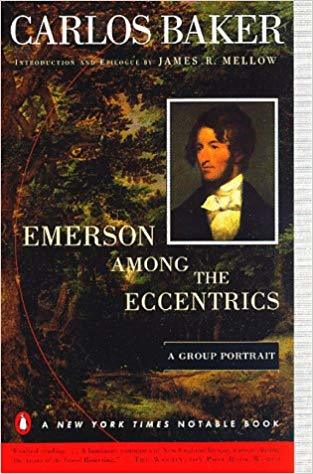
Carlos Baker: Emerson among the Eccentrics (1996)
Carlos Baker. Emerson among the Eccentrics: A Group Portrait. Ed. Elizabeth B. Carter. Introduction & Epilogue by James R. Mellow. New York: Viking Penguin, 1996.
The great value of Thoreau, for me, is that he asks all the right questions. His answers, by and large, are less useful to me. I can't see myself building a cabin with my own hands out in the woods behind Mairangi Bay (even if someone would let me). But I do feel it necessary to ask those same questions about how best to live, how to avoid mortgaging your life to other people's expectations, and to that awful trepidation that overcomes so many of us at the thought of stepping down from our current position of solvency.
•
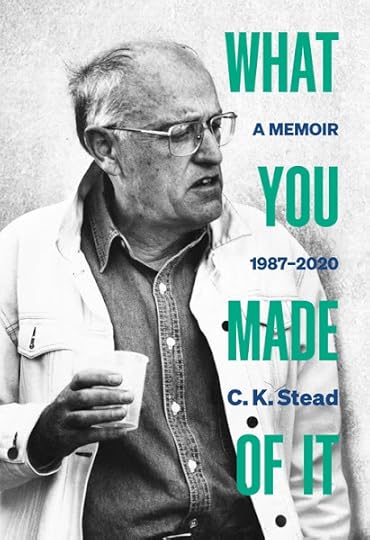
C. K. Stead: What You Made of It: A Memoir 1987-2020 (2020)
I've always admired C. K. Stead's decision to resign from Auckland University in his fifties to pursue the life of a full-time writer. I never - until now - thought to emulate it, but it seems now, for a combination of serendipitous reasons, that I'm going to.
Karl has given me a number of useful pieces of advice over the years, but I think it was his example in this particular respect which has proved most inspiring to me. I could easily have stayed in my job until 65, then retired on a full pension. But, to be honest, I don't feel a real vocation for it any longer.
I've done a lot of things in the fifty-odd semesters I've been teaching on Massey University's Albany Campus (and the five years before that at other places, and the ten years before that as a student), but now I think I've started to repeat myself. It's time for someone new to step into the role - someone who has everything to prove and has the burning desire to tell other people all about it.
It's not that I've stopped loving teaching, but I want now to shift gears into full-time rather than part-time writing and research instead. Every one of the books I've published to date was written while I was teaching at Massey. It's never been easy to claw back enough time to do it without a great deal of compromise on both sides, however.
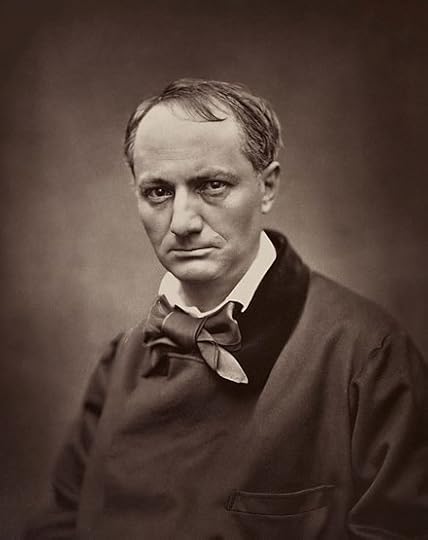
Étienne Carjat: Charles Baudelaire (1821-1867)
To be perfectly honest, right now I feel as happy as a sandboy. Whatever the future holds, it will be unpredictable, uncharted territory. As Baudelaire puts it so succinctly in 'Le Voyage':
Plonger au fond du gouffre, Enfer ou Ciel, qu’importe ?
Au fond de l’Inconnu pour trouver du nouveau !
[To the depths of the abyss, Hell or Heaven, who cares?
To the depths of the Unknown to find something new!]
•
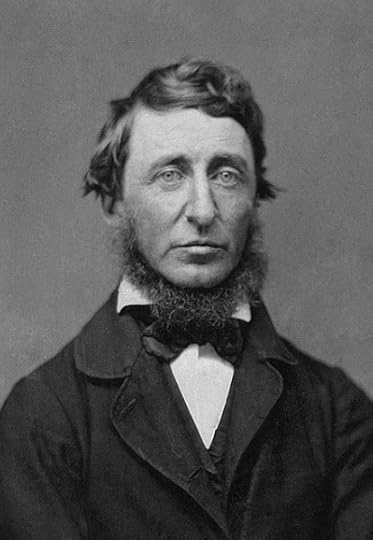
Henry Thoreau (1856)
Henry David Thoreau
(1817-1862)
Books:
Thoreau, Henry David. Walden and Other Writings. 1854. Ed. Brooks Atkinson. Foreword by Townsend Scudder. 1937. The Modern Library College Editions. New York: Random House, Inc., 1950.
Thoreau, Henry David. The Annotated Walden: Walden; or, Life in the Woods, together with “Civil Disobedience,” a Detailed Chronology and Various Pieces about its author, the Writing and Publishing of the Book. 1854. Ed. Philip van Doren Stern. New York: Bramhall House, 1970.
Thoreau, Henry David. A Week on the Concord and Merrimack Rivers; Walden: or, Life in the Woods; The Maine Woods; Cape Cod. 1849, 1854, 1864, 1865. Ed. Robert F. Sayre. The Library of America, 28. New York: Literary Classics of the United States, Inc., 1985.
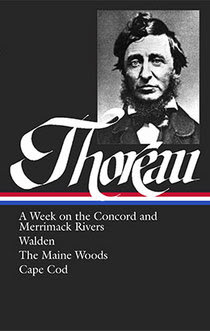
Poetry:
Bode, Carl, ed. Collected Poems of Henry Thoreau: Enlarged Edition. 1943 & 1964. Baltimore: The Johns Hopkins Press, 1965.
Thoreau, Henry David. Collected Essays and Poems. Ed. Elizabeth Hall Witherell. The Library of America, 124. New York: Literary Classics of the United States, Inc., 2001.

Journals:
Torrey, Bradford, & Francis H. Allen, ed. The Journal of Henry D. Thoreau. 14 vols in 2. 1906. Foreword by Walter Harding. New York: Dover Publications, Inc., 1962.
Shepard, Odell, ed. The Heart of Thoreau's Journals. 1906. Boston & New York: The Houghton & Mifflin Company / Cambridge: The Riverside Press, 1927.
Thoreau, Henry David. A Year in Thoreau’s Journal: 1851. 1990 & 1992. Ed. H. Daniel Peck. Penguin Classics. Harmondsworth: Penguin, 1993.
•
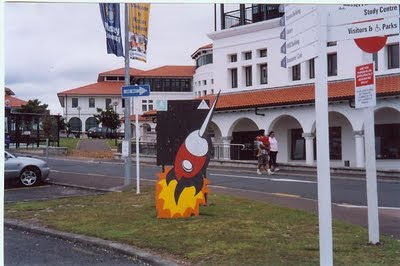
Bye Bye Massey
Published on September 09, 2021 16:18



